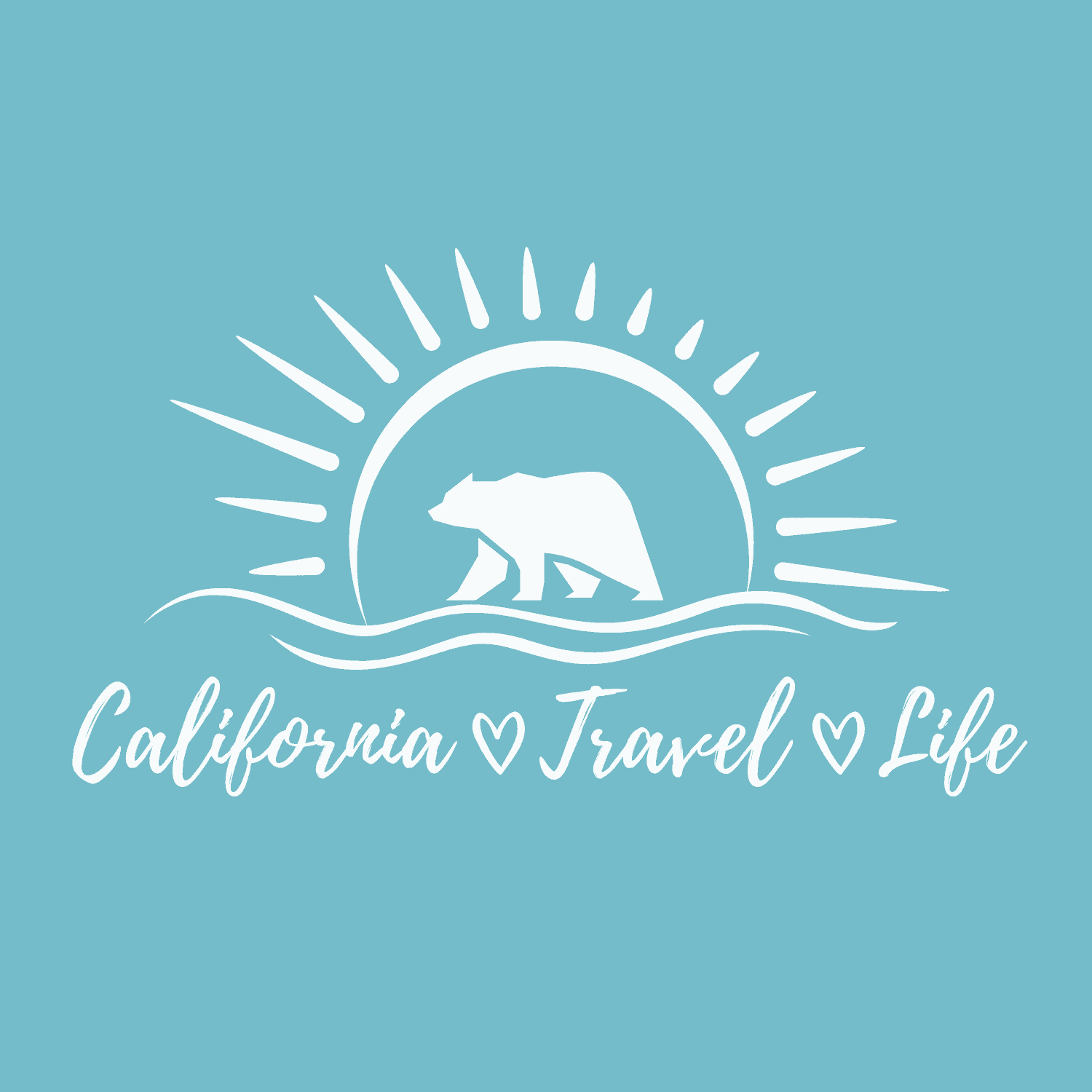

12 Incredible California Ghost Towns You Need to Visit
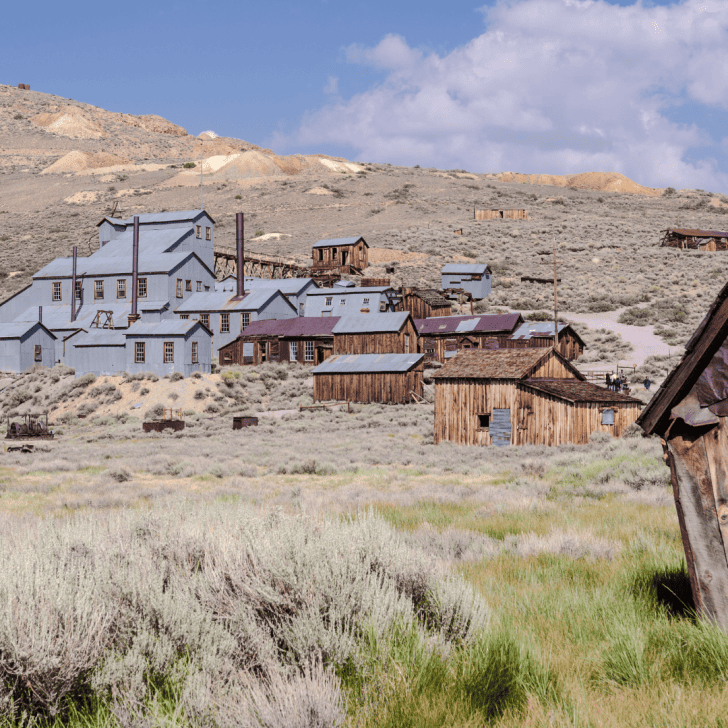
Who doesn’t love a good ghost town? With their colorful history and unique remnants of the past, visiting a California ghost town is a great way to spend the day.
Many ghost towns are shells of what they were during their rough and rowdy heydays, but each leaves a clue about the history of the state and its impressive mining history. After all, it was mining that lead the masses flocking to what would become the Golden State.
Most of these California ghost towns are in remote locations, but each has a fascinating story to tell. Use this guide to find a ghost town on your next road trip route, and spend a couple hours exploring.
12 California Ghost Towns to Visit
Calico ghost town.
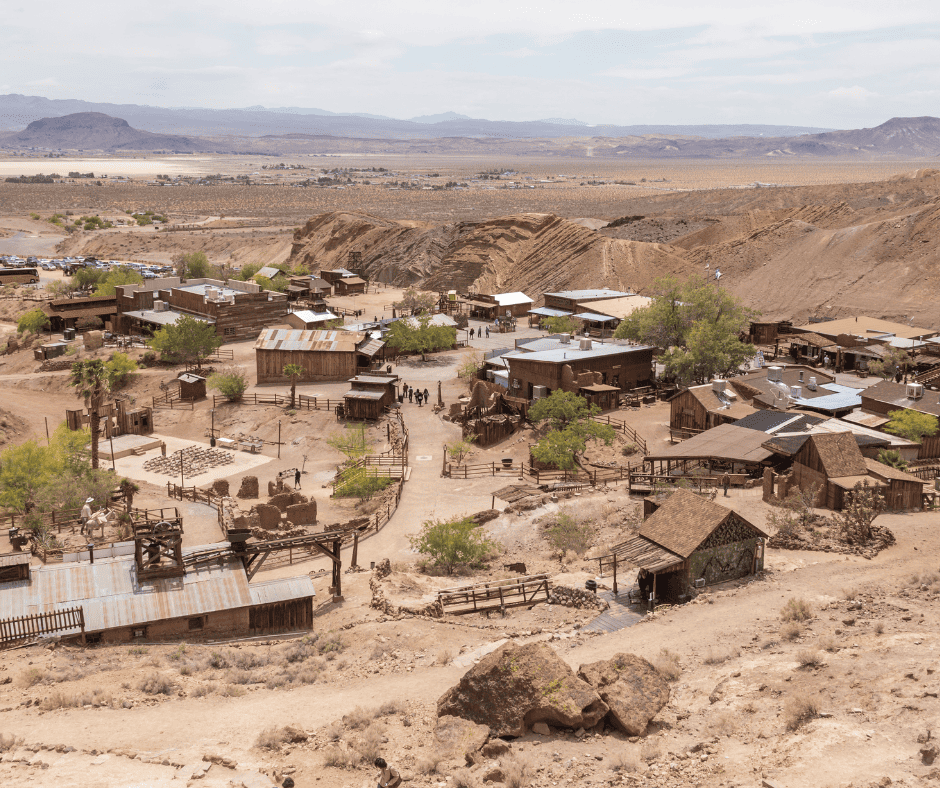
If you have driven Interstate 15 from Southern California to Las Vegas, you have passed right by Calico Ghost Town . This California ghost town is located just outside of Barstow and is the most popular ghost town in the state.
Calico was founded in 1881 during the silver mining boom in California. The town quickly grew as miners flocked to the area in search of silver. The boom in silver mining, however, was short-lived. By the mid-1890s, the price of silver dropped, leading to the closure of many mines. As a result, Calico’s population dwindled, and the town was eventually abandoned.
In the 1950s, Walter Knott, of Knott’s Berry Farm fame, purchased Calico and began to restore the town which eventually became a county park and popular tourist attraction. The town is designed to reflect its late 19th-century appearance.
The Calico Odessa Railroad is a narrow-gauge railroad which gives visitors train rides around the town. I remember taking a field trip out Calico when I was in kindergarten and abolutely loving that train ride!

There are also several historic buildings to explore including the former schoolhouse, general store, and the Maggie Mine. Visitors can walk 1000 feet into Maggie Mine as they take a self-guided tour and look at minerals in the rock and learn about the mine and the miners that worked there in the late 19th century.
If you have ever been to Knott’s Berry Farm, then you will be familiar with the Mystery Shack where water runs uphill and crooked rooms play mind tricks. Mr. Knott added a Mystery Shack to Calico Ghost Town and it is always fun to explore. There is also gold panning onsite where kids will be excited to take home some iron pyrite aka: Fool’s Gold.
For $12, adults can purchase a package that allows them to tour the mine, visit the Mystery Shack, and pan for gold. Kids 5 – 11 are just $6. The railroad is a separate cost- $5.50 for adults and $3 for kids.
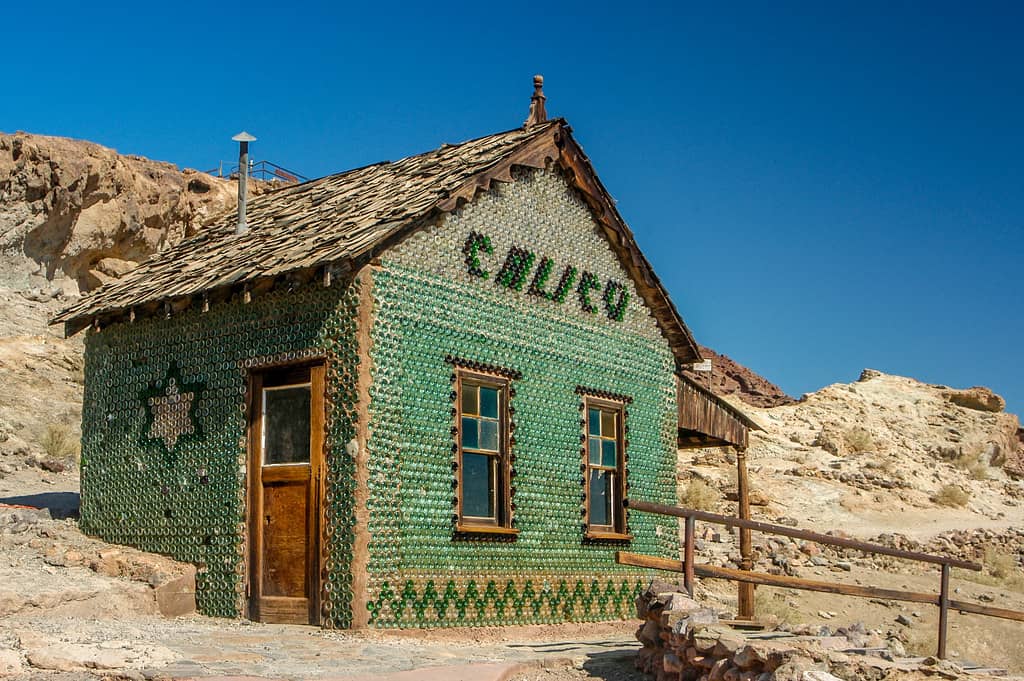
In addition to the special attractions there is a restored schoolhouse, town hall, bottle house, general store, woodworking shop, mineral shop, old-time photo store, and a handful of other shops. The Lucy Lane Museum has artifacts, photographs and documents from Calico’s origin. There are a couple restaurants serving food as well.
During last two weekends in October Calico Ghost Town hosts Town of Terror with scary attractions from 5-9pm on Fridays and 5-10pm on Saturdays. They also host three different ghost tours- Main Street, Maggie Mine, and Schoolhouse. Tours happen on Saturday nights at 6pm and 7:30pm.
Calico Ghost Town is open from 9am to 5pm daily, except on Christmas Day.
Here are 75 California landmarks you need to visit .
Bodie State Historical Park Ghost Town
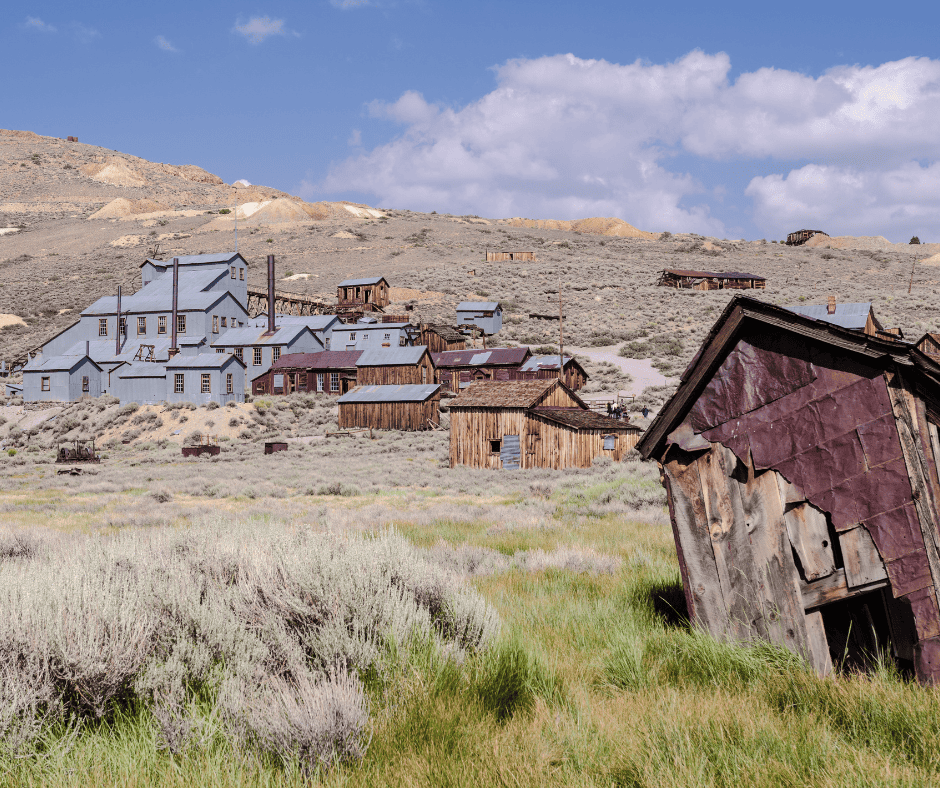
Bodie State Historical Park is a California ghost town in the Eastern Sierra, about 75 minutes north of the popular Mammoth Lakes resort area and 30 minutes east of the town of Bridgeport. It is one of the best-preserved ghost towns in the United States .
Bodie made our list of the best state parks in California . See what other parks made the list!
It began as a small mining camp after gold was discovered in the area in 1859. The town was named after Waterman S. Body (William Bodey), who discovered gold there. In the 1870s and 1880s, the town “boomed” as gold mining operations expanded. At its peak, Bodie had a population of around 10,000 people and was known for its rough and lawless reputation.
The Standard Mine, one of the most productive in Bodie, yielded millions of dollars in gold during its operation but like many other mining towns, Bodie’s prosperity was short-lived. By the early 20th century, the gold began to run out, and the town’s population started to decline. By the 1940s, Bodie was almost entirely deserted.
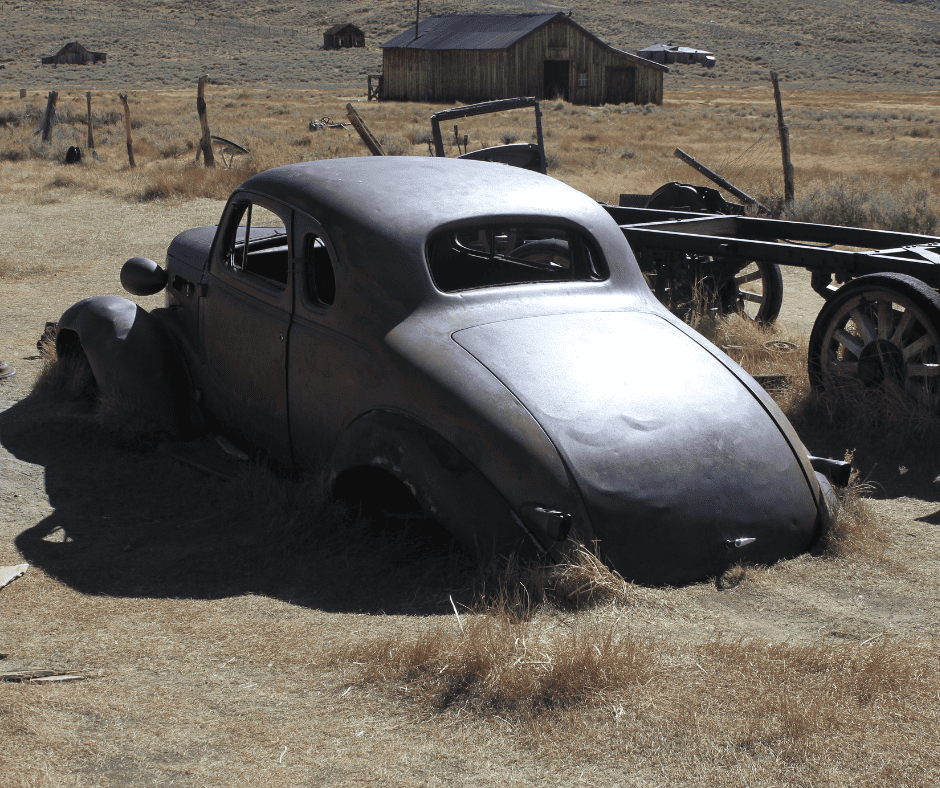
Thankfully, in 1962, the State of California took over the Bodie State Historic Park, and efforts were made to preserve the town in a state of arrested decay. This means that the buildings are maintained but not restored to a pristine condition, giving visitors a sense of how the town looked when it was abandoned. Visitors will discover cups left on tables, a wheel barrow dumped over in a yard, and even a tricycle parked on a porch.
Only about five percent remains of the original town of 2,000 buildings, but more than 100 buildings still stand, including homes, stores, a church, and a school. Visitors to Bodie can explore the streets and enter some of the buildings. Guided tours of the Stamp Mill are available during peak season and highly recommended.
Techinically, Bodie is open all year but it is accessible only by skis, snowshoes or snowmobiles during winter months because of its high elevation (8,375′).
Bodie is open to cars and fully staffed with park rangers Memorial Day through Labor Day. The road will close once it starts snowing for the season. It is a 13 mile journey off Highway 395 and the last three miles are unpaved, but most cars are fine on the road. Admission is $8 per adult and $5 per child 4 – 17.
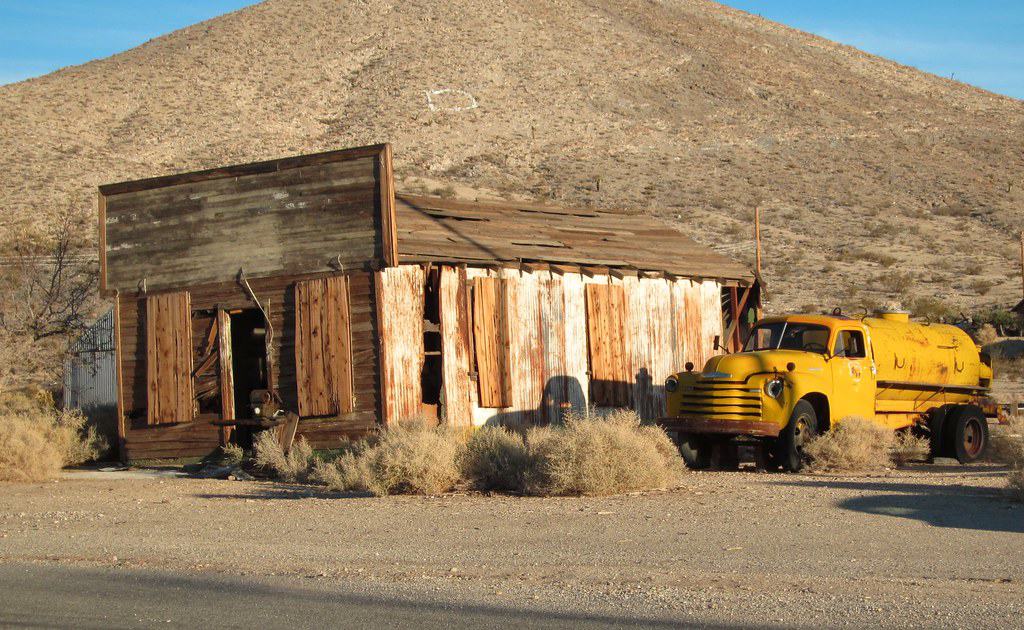
Way out in the middle of nowhere, but not far from the northern reaches of Death Valley, is the town of Darwin, a a quiet, semi-ghost town. It is located in Inyo County, about two hours north of Ridgecrest and 40 minutes south of Lone Pine. About 40 people do still live in Darwin so it isn’t technically deserted, but it might as well be.
Like most California ghost towns, Darwin’s history is tied to mining, particularly lead and zinc. The town experienced its peak during the late 1870s when it had 3500 residents and was the second largest town in the county at the time. It had about 20 operating mines, hundred of homes, a post office, saloons, restaurants, a hotel, and even a newspaper!
It was also a particularly rowdy and lawless town, thanks in big part to its isolation and gun fights and stage robberies were common.
Mining declined due to several factors including an outbreak of small pox, a countrywide economic recession, and the movement of many miners up north to Bodie. An arson fire in 1879 wiped out a big portion of the heart of the town and by 1880, just 85 people remained. Despite the small population, mining did contiinue on some level in the area thorugh the 1970s.
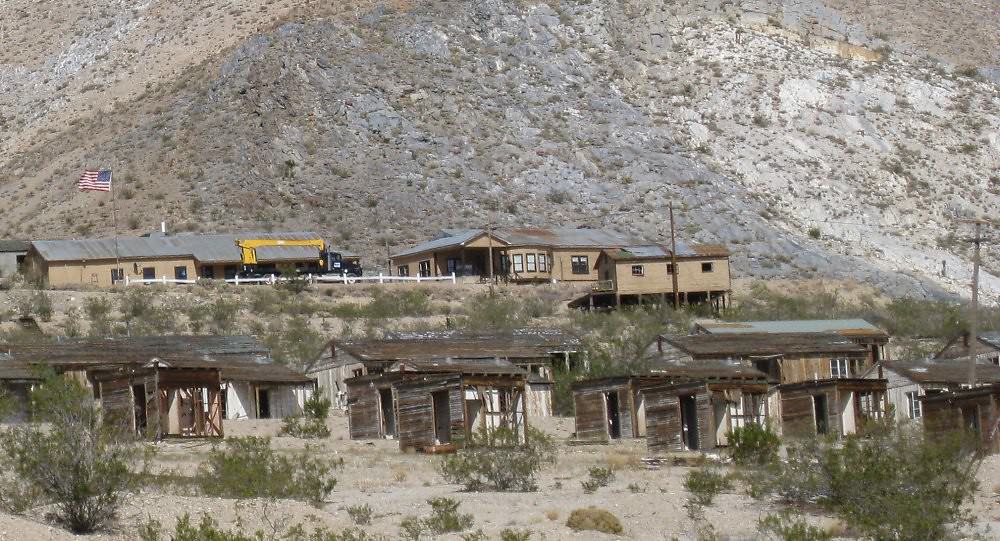
Visitors can explore the remnants of old buildings, mining structures, vehicles, and equipment. The town has an authentic, weathered feel, providing a sense of what life was like during its mining heyday. The remains of the old Defiance smelter still exist as well. On the hillside of Mt. Ophir there are remnants of the company camp, including decaying rows of company houses.
Be respectful of private property and residences when you visit this semi-ghost town.
Panamint City
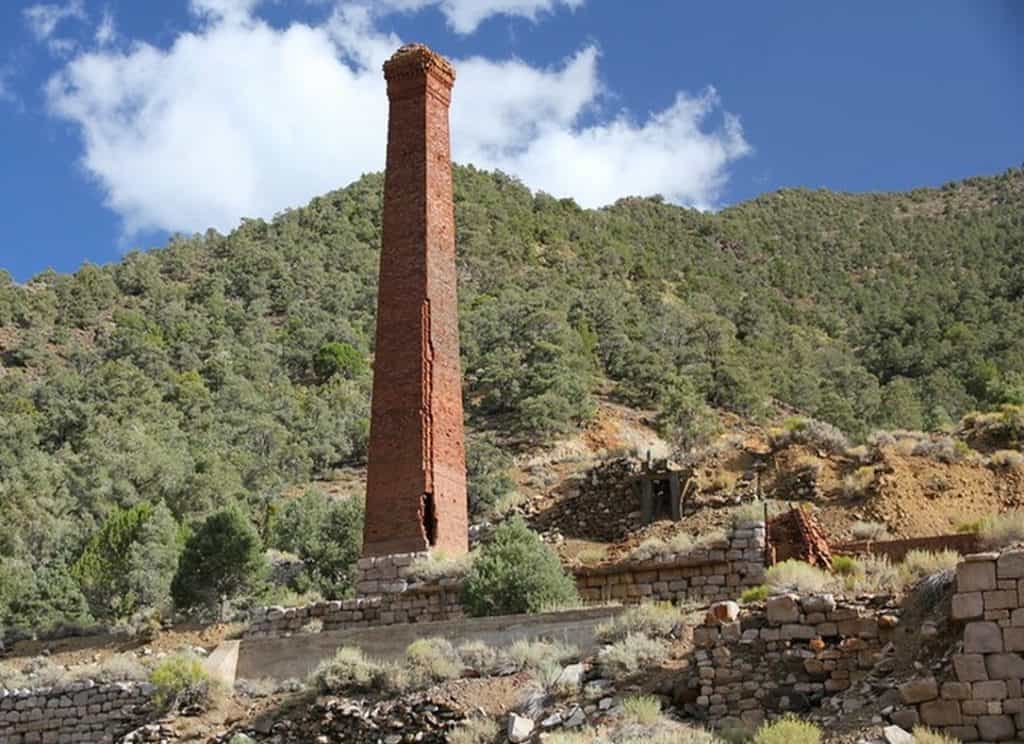
Death Valley has its very own ghost town in the Panamint Mountains of the northern portion of the park. Panamint City was founded by a trio of prospectors in the early 1870s who found a deposit of silver ore in Surprise Canyon. Unfortunately, they were followed into the area by bandits who forced them into a partnership on the profits made by the mine.
It didn’t take long for word to get out about the newly formed Panamint Mining Company and soon hundreds of miners flocked to the area. Soon there were 2,000 people in town, along with saloons, a bank, restaurants, a brewery, a newspaper, and lots of ramshackle houses.
It was an especially wild and lawless area, complete with its very own red light district and dozens of shootings. Alas, the town did not last long. In 1876 two of the main mines were exhausted of ore and a large flood wiped out much of the town.
Not much of this ghost town remains except for some foundations, and the crumbling smokestack of Surprise Valley Mill and Water Company.
Access is challenging, involving a steep and strenuous five-mile hike which should only be attempted by seasoned hikers in the cool season. Here are some of the animals in Death Valley which you may encounter on your hike.
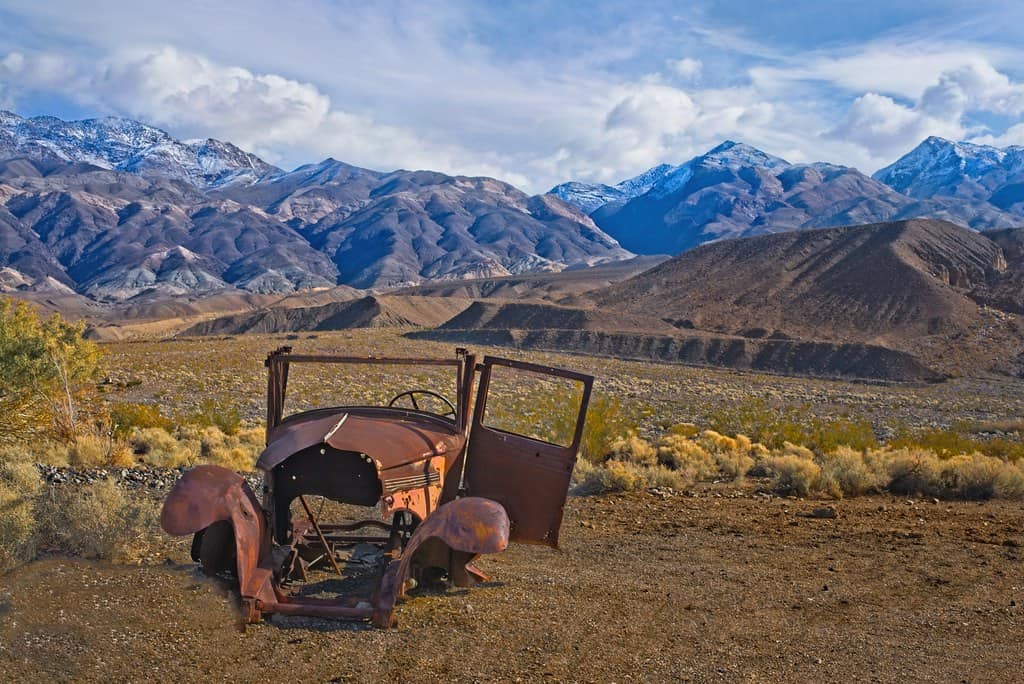
Ballarat is a ghost town in Death Valley National Park at the base of the Panamint Range. It was founded in 1897 to serve as a supply point for the mines in the Panamint Range, including the nearby Ratliff Mine. It was named after the Australian gold mining camp of Ballarat.
Ballarat experienced a boom during the early 1900s as mining activity increased in the Panamint Range. Life was especially tough in the summer, when temperatures would soar over 120 degrees, but 500 hardy folks endured the heat at the town’s peak.
And of course these 500 residents needed seven saloons, because this was the Wild West after all! However, like many other mining towns in the region, its prosperity was short-lived.
What makes this California ghost town especially interesting and unique is its connection with the Manson Family . In the late 1960s, Charles Manson and his followers lived in the area at Barker Ranch south of Ballarat, and members of the Manson Family left graffiti in an old truck they abandoned in town.
Seldom Seen Slim is Ballarat’s most famous resident, who lived in town from around 1918 until his 1968 when he died. He was the last to be buried the town’s cemetary, aka Boot Hill. He claimed to be “half coyote and half wild burro” and said he hadn’t take a bath for 20 years!
There are still a couple people that live in Ballarat and operate a small store. There are remains of old adobe structures to visit as well as several miner cabins. Unlike Darwin, Ballarat is accessible by vehicle , and is located off State Route 178, approximately four miles south of the park boundary.
North Bloomfield

About 15 miles northeast of Nevada City in the heart of Sierra Nevada Gold Country is North Bloomfield, a preserved gold rush town that is now a state park. The town is closely associated with the Malakoff Diggins, one of the largest hydraulic mining operations in California history.
Nevada City is one of our favorite weekend getaways in Northern California .
Originally named Humbug because of some failed gold mining attempts, North Bloomfield was established in 1851 after a few prospectors found gold in a nearby creek. Once gold was discovered in the area, a rush of prospectors and settlers seeking their fortunes flocked to the area.
By the late 1860s, North Bloomfield Gravel Mining Company employed 1100 people, including 800 Chinese workers. The population of the town reached a height of 2000 residents. The company used hydraulic mining which uses highly pressured water to basically blast away mountainsides in the pursuit of gold.
As you can imagine, hydraulic mining was absolutely terrible for the environment and a law was passed in 1884 to make the current system illegal. Once that happened, operations at the mine should have ceased, but they didn’t. Instead they installed a new system to pull debris from the tailings and retain it in holding ponds.
Then the mine basically ignored that law as well as the law passed by Congress in 1893 requiring all hydraulic mines to be licensed. In the late 1800s the law and all the resulting fines caught up with the North Bloomfield Gravel Mining Company and operations were ceased. They left behind a massive pit.
The population continued to dwindle until less than 20 people remained. At that point, the locals urged the state to preserve and protect the historic area. In 1965 Malakoff Diggins State Historic Park was established.
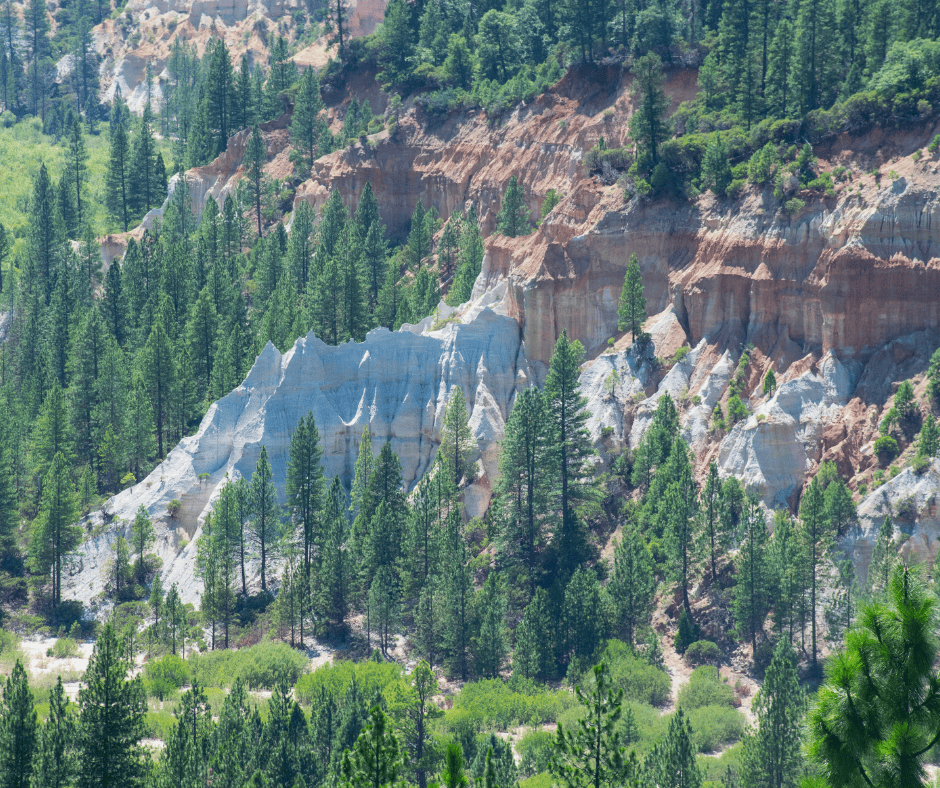
Today, the state park encompasses the remnants of the hydraulic mining infrastructure, including towering cliffs and the townsite. One of the central features of the historic park is the enormous tailings piles resulting from the hydraulic mining operations.
Visitors can also view the restored and operational Malakoff Diggins Dredge, which is a large floating gold dredge that was used to extract gold from the sediment.
Within the park, visitors can explore various historical landmarks, such as the North Bloomfield Schoolhouse, which is a well-preserved one-room schoolhouse dating back to the 1870s, and the cemetery where some early residents are buried. There is also a drug store, church, and several houses.
Three miner’s cabins in North Bloomfield may be reserved for camping . The area is quite scenic and has several miles of trails so spending a couple days here makes for a lovely getaway.
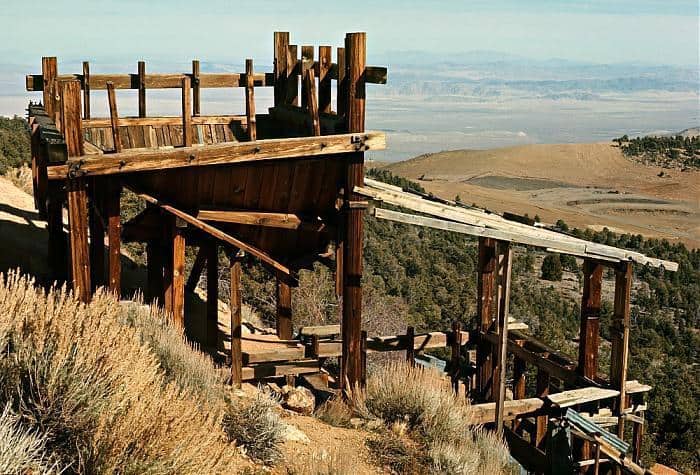
Doble is a former mining community located in the San Bernardino Mountains near Big Bear Lake. It was originally named Bairdstown but the name changed to Doble, named for horse trainer and silent movie actor, Budd Doble.
Doble’s history dates back to the late 1800s when it was primarily a mining and logging town. The area was rich in timber, and the timber industry played a significant role in the town’s early development. In 1875 there was a butcher shop, a bakery, several saloons, three general stores, two livery stables, three restaurants, two hotels, a black smith shop, a cemetery, and much more. This town was legit!
It did experience a brief period of silver mining activity when several mines operated in the surrounding mountains. At that time, the Doble Mine Mill processed 100 tons of ore per day. However, the mining boom was short-lived and last only about 8 months .Another attempt was made to rebuild the mill (the original burned down) in 1899 with a promising new “Cyanide Process” to mine the region’s poor quality ore but the mine shut down in 1903 and the town became a ghost town.
Ruins of the 1875 Stamp Mill and the cemetery are all that remain today. Still, if you are exploring in the Big Bear Lake area, it is worth a stop. Baldwin Lake is within view of the ruins because most of the trees in the area were cut down to help run the steam engine for the stamp mill. Most of the trees in the area these days are second generation growth.
Big Bear Lake is one of our favorite weekend getaways in Southern California .

Laws is a historic site and former railroad town located in the Owens Valley, a few miles north of the town of Bishop on Highway 395. It is not a traditional ghost town, but rather a preserved area that showcases the history of the Owens Valley and the Eastern Sierra.
Laws began as a station on the Carson and Colorado Railroad in the late 19th century. The railroad played a crucial role in the development of the Owens Valley by providing transportation for mining and agricultural products. It became a hub for maintenance, repairs, and other services related to the operation of the narrow-gauge railroad and an essential stop for trains traveling through the Owens Valley.
The Great Depression hit Laws hard and in 1938, Southern Pacific tore up the rail lines north of town. Still, the town persisted as the northern terminus until the railroad fully shut down the narrow gauge line between Keeler and Laws in 1960.
Today, Laws is home to the Laws Railroad Museum and Historic Site . The museum features a collection of historic buildings, vintage railroad equipment, and artifacts from the late 19th and early 20th centuries. Visitors can explore the original depot, a schoolhouse, a blacksmith shop, and various railway cars. Some of the buildings were moved to their current location inside the museum.
Paramount Pictures made the film, Nevada Smith , on the site in 1966 and the Laws Railroad Museum protects buildings from that set as well. It also houses a collection of steam and diesel locomotives, as well as a variety of rolling stock.
Laws is listed on the National Registry of Historic Places. It is open from 10am – 4pm except for Thanksgiving, Christmas, and New Years Day. Admission is a $10 donation.
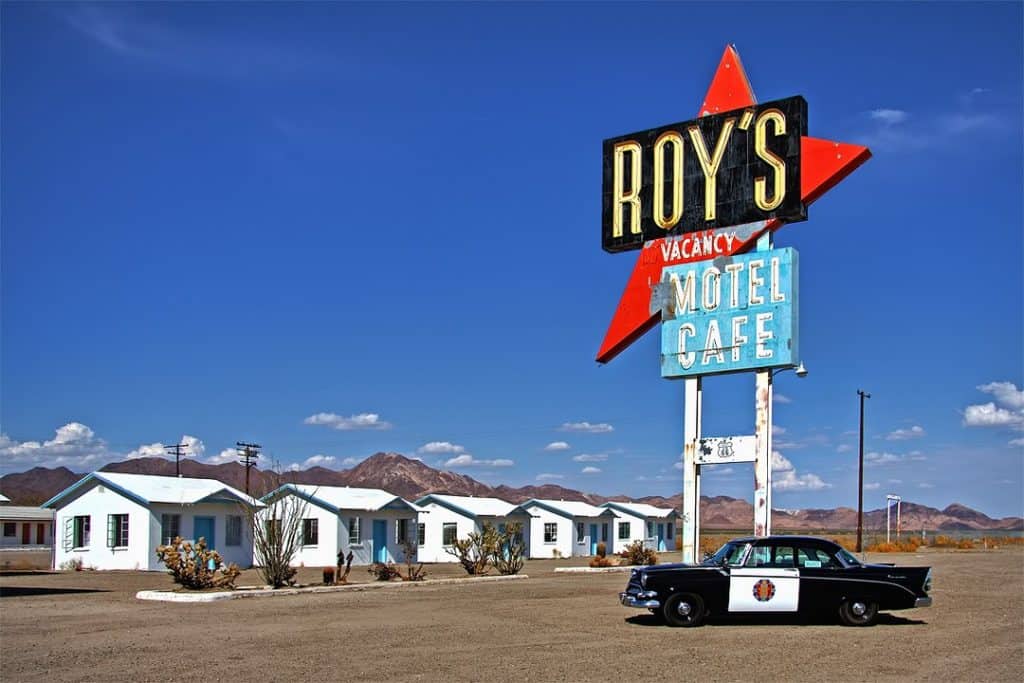
Amboy was founded as a railroad and mining town in the Mojave Desert. However, its location halfway between Barstow and Needle on Route 66, the most popular route out west back before the advent of the Interstate Highway system, made the town a popular tourist stop for travelers heading to California .
When Interstate 40 opened in 1973, 100 miles of Route 66 in the Mojave Desert were basically deserted. And with it went all the towns that lined that stretch, including Amboy.
Amboy began as a mining camp in 1858 and was named in 1883 when the first railway tracks were being built in the area. It was never a big town. Only 200 people lived there during its heyday of the 1930s and 40s. At that time the town had 13 businesses, three gas stations, three motels, a couple cafes, a post office, a church and even a small school.
Amboy is best known for Roy’s Motel and Café , an iconic roadside stop along Route 66. Roy’s became a symbol of the classic American road trip, featuring the distinctive Googie architecture and neon signs that were popular in the mid-20th century.
With the construction of Interstate 40 which bypassed Route 66, traffic through Amboy declined significantly. The town’s businesses struggled, and by the late 20th century, Amboy had become a near-ghost town.
In 2005, Amboy was purchased by Albert Okura, the founder of the Juan Pollo restaurant chain, for just $425,000. Okura aims to restore and preserve the town’s historic features, including Roy’s Motel and Café.
Roy’s, with its classic mid-century design, includes a motel, café, and gas station. While the motel is no longer operational, the café is occasionally open, and the site attracts visitors interested in its nostalgic appeal.
Roy’s famed neon sign was relit in 2019 after many decades of disrepair. There are continued plans to renovate the motel, add a gift shop, update the gas station to be a 24-hour self serve establishment, and get a food permit so the restuarant can once again sell more than food. Installing a water system is another key aspect of the rehab to be tackled.
While in Amboy, make time to visit Amboy Crater , a volcanic cinder cone that rises prominently from the desert landscape. It is a popular hiking destination, offering panoramic views of the surrounding desert.
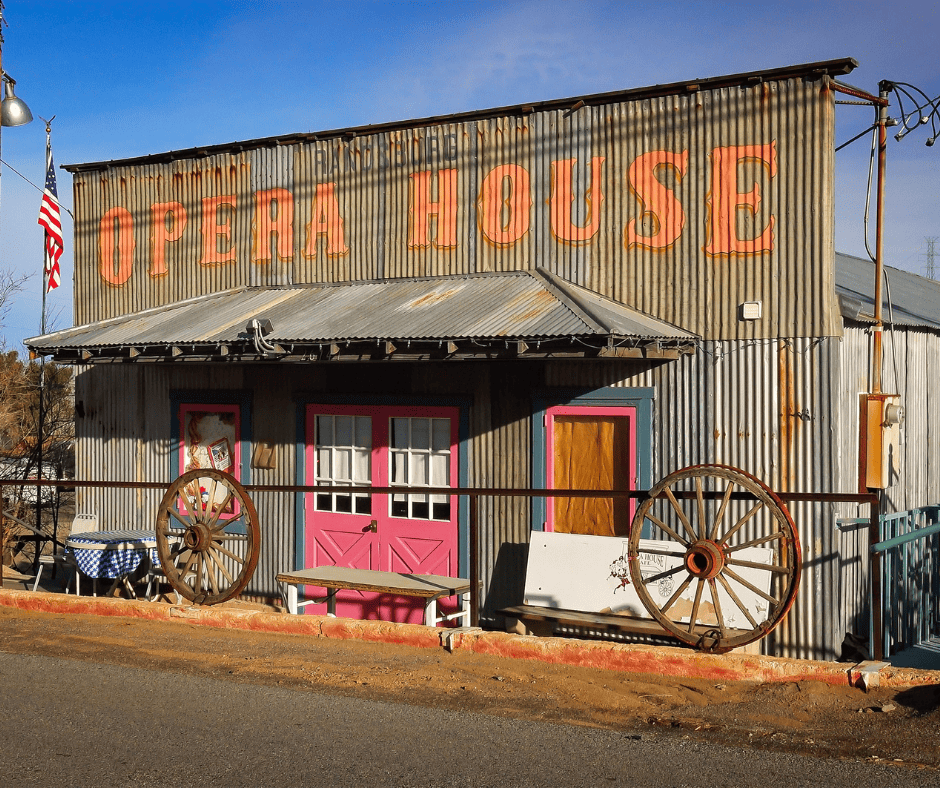
Known as the “Living Ghost Town,” Randsburg has a mix of abandoned and occupied buildings, showcasing its mining and Old West history near the junction of Highway 395 and Highway 14 in the Mojave Desert of Kern County about 17 miles south of Ridgecrest. Less than 50 people live in the area today.
Randsburg’s history began with the discovery of gold in 1895 by three prospectors: John Singleton, Charles Burcham, and Henry Singleton. The discovery sparked a gold rush, leading to the rapid growth of the town.
Randsburg was unique in that it was situated at the junction of three major mining districts: Randsburg, Johannesburg, and Red Mountain. The combined output of these districts contributed significantly to the town’s prosperity.
As the town grew, it developed essential infrastructure such as schools, churches, saloons, and stores. The Yellow Aster Mine, one of the most successful gold mines in the region, brought considerable wealth to the area. The population grew to over 4000 people in the early 1900s.
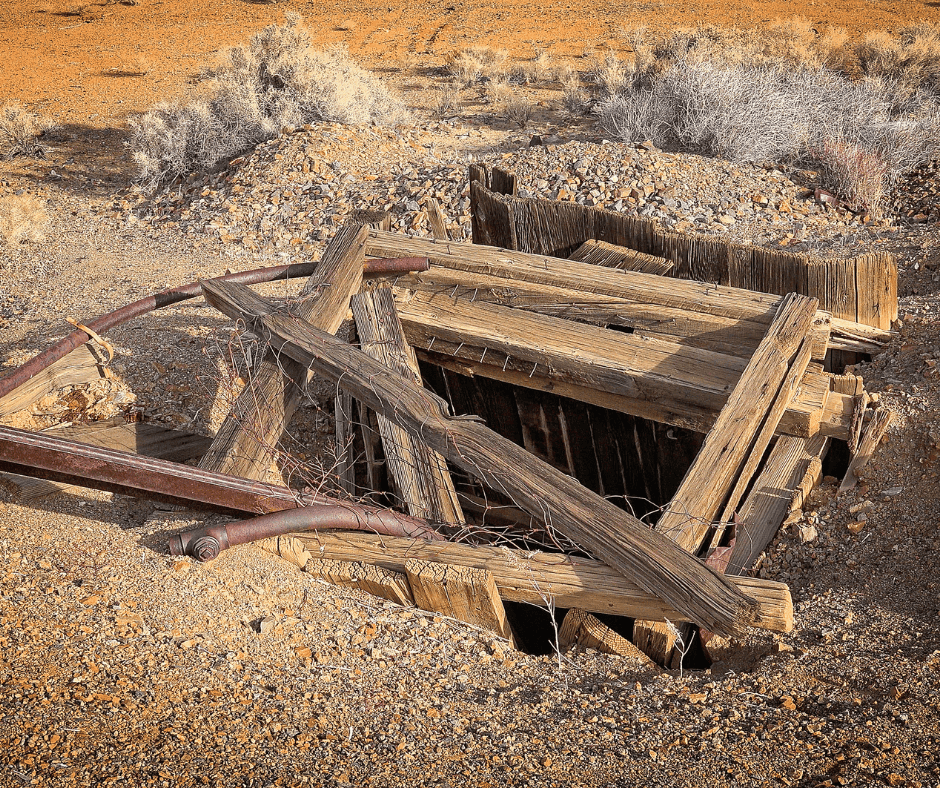
Like many mining towns, Randsburg faced a decline in the early 20th century as the easily accessible gold was depleted. The town’s population dwindled, and many businesses closed, especially during World War II when mining for gold was considered non-essential. However, some mining operations continued into the mid-20th century.
In the latter part of the 20th century, there was renewed interest in preserving and restoring Randsburg’s historic buildings. Many structures from the town’s heyday still stand, providing visitors with a glimpse into its past. Randsburg has been designated a California Historical Landmark (#285) due to its significance in the state’s history as a major mining town during the Gold Rush era.
Today, Randsburg is a popular tourist attraction, drawing visitors with its well-preserved ghost town atmosphere. Visitors can explore the historic district, including the 1896 White House Saloon, opera house, a tiny jail cell, and other vintage and dilapidated structures and rusted-out abandoned vehicles.
Be sure to visit the Randsburg General Store which opened in the 1930s. It has a soda fountain from 1904 where you can still order soda, shakes, and ice cream sundaes.
Shasta State Historic Park
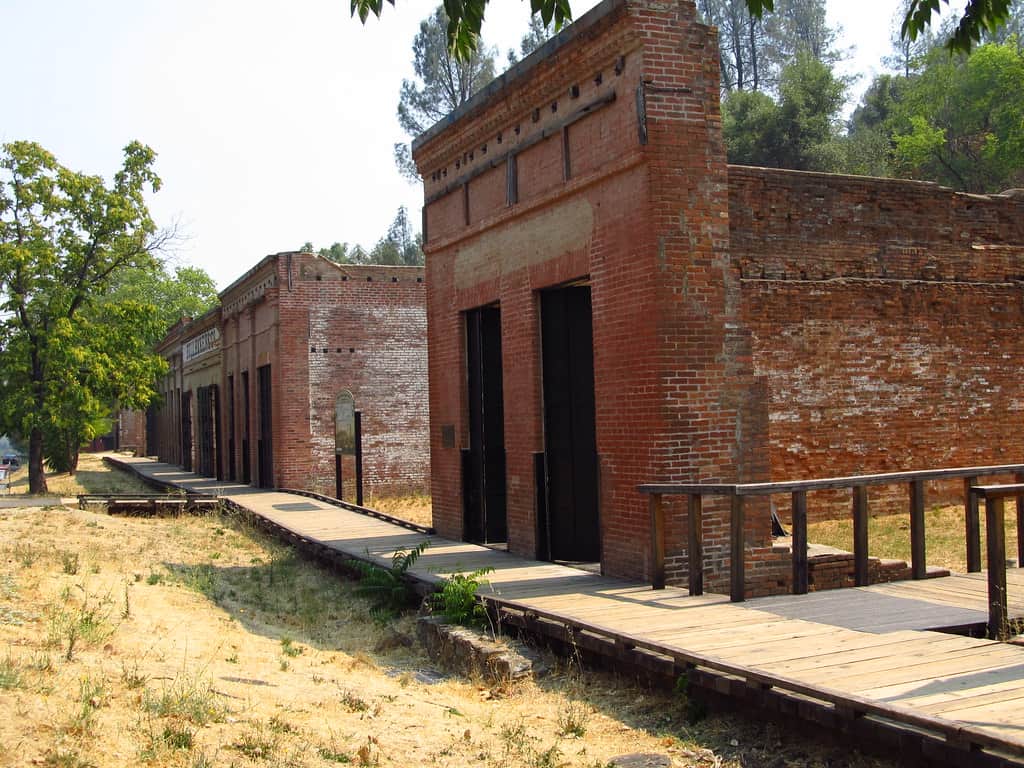
Shasta State Historic Park protects and preserves the remains of old Shasta City, a ghost town north of Redding. Shasta was founded during the California Gold Rush in the early 1850s. Gold was discovered in the area, leading to a rapid influx of settlers and the establishment of a mining and commercial community.
Shasta quickly became an important commercial and transportation hub in the region. It was known as the “Queen City of the Northern Mines” and served as a supply center for miners and travelers heading to the goldfields.
The town boasted numerous businesses including hotels, saloons, general stores, and a theater. The construction of a courthouse and jail reflected Shasta’s aspirations to become the county seat. The town was plagued by fires, once in December of 1852 and again six months later, but the residents quickly rebuilt.
Gold claims in the area were largely depleted in the late 1860s and the towns prominence further waned as other transportation routes, such as the railroad, bypassed the town. By 1888 the county seat was moved to Redding and many of the buildings were left abandoned.
Beginning in the 1920s, efforts were made to preserve the historic structures in Old Shasta. The California State Parks Commission began purchasing some of the old buildings, eventually forming Shasta State Historic Park, which covers over 300 acres.
The park preserves the historic district of Old Shasta, including the Litsch General Store, jail, blacksmith shop, and the Blumb Bakery. The ruins of the original brick courthouse, which burned down in 1861, has been rebuilt and is filled with historic exhibits. The park also offers interpretive programs, guided tours, and living history events.
Cerro Gordo
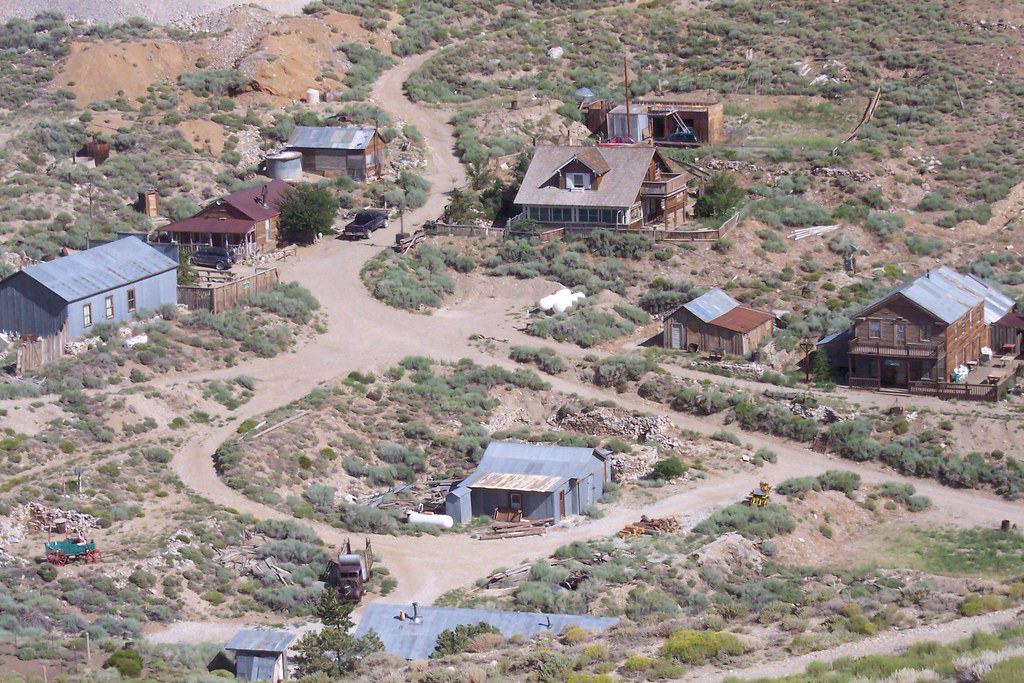
Cerro Gordo is a historic mining town located in the Inyo Mountains of eastern California, near the town of Lone Pine. It gained prominence after the discovery of rich veins of silver was made by Pablo Flores in 1865. By 1867, word had gotten out and people began flocking to the area.
By the mid-1870s, Cerro Gordo experienced a mining boom and the town quickly grew into a bustling mining community, attracting fortune-seekers from different parts of the country.
The mines in Cerro Gordo were known for their high-grade silver ore, and the town became one of the most significant silver producers in California. At its peak, it was producing millions of dollars’ worth of ore annually.
The town boasted a range of structures, including mines, mills, a general store, saloons, a hotel, and housing for the miners and their families. The town’s growth reflected the prosperity brought by mining activities. It was also quite lawless and at one point there was a murder a week!
Cerro Gordo’s remote location in the Inyo Mountains posed significant challenges for transportation and logistics. Supplies and ore had to be transported over difficult mountain roads, adding to the town’s isolation. There was also a lack of water and timber which added to the town’s challenges.
As the easy-to-access silver ore was depleted, Cerro Gordo experienced a decline in the late 19th century. The town went through periods of boom and bust over the years, with mining operations intermittently resuming. During the early 20th century, zinc became the towns’s main ore export.
These days, the town is privately owned. Cerro Gordo has gained notoriety in recent years since one of town’s owners, Brent Underwood, moved to the town in 2020 and began a very popular YouTube channel (over 1.6 million subscribers!) about life in the ghost town and his efforts to bring it back to life as a tourist destination.
The preservation efforts aimed at maintaining its historical integrity. Several of the town’s structures have been stabilized and restored, helping to preserve the town’s unique character. The American Hotel, which was built in 1871, burned down in 2020 and is currently being rebuilt for guests to enjoy.
Cerro Gordo is accessible by a rough mountain road, and visitors are advised to check conditions before attempting the journey. Most people who visit these days are volunteering to help restore the property. Hopefully in a few years it will be open for overnight stays. The best way to keep up with the town’s progress is to follow the YouTube channel.
8 Spookiest Ghost Towns in California
:max_bytes(150000):strip_icc():format(webp)/betsy-hikey-1000x1500-56a386bf3df78cf7727ddc41.jpg)
Betsy Malloy
A California ghost town might be the kind you think of, an abandoned mining camp with tumbleweeds blowing down a deserted main street, past a long-disused saloon or general store, toward the old cemetery. You can find those in the Golden State, but there’s more: Abandoned reminders of a grand social experiment, the remains of internment camps, and what’s left of a medicine man’s so-called “health resort.” Some of them may even be spooky, with stories of hauntings and restless spirits.
Know this before you go: Some ghost towns are at high elevations. Others in the desert are hot in the summer, with no shade. They often don’t have water and other amenities. The terrain in a ghost town may be uneven, and you might encounter snakes and other animals. Take sturdy shoes, water, a hat, sunscreen, and snacks. And be sure your vehicle is up to the drive.
If you only see one ghost town in California, Bodie is the one to visit.
Bodie was a gold-mining town the started in 1876. At its peak, more than 10,000 gold-seekers lived there. The wild, wide-open mining town was so wicked that some people thought even God had forsaken it.
Today, Bodie is a pilgrimage site for people who love ghost towns. It has almost 200 structures still standing, kept in a state of "arrested decay." The large site with so many things to see is unparalleled among California ghost towns.
Bodie is also said to be not spooky or haunted but cursed. Legend has it that any visitor who dares to take anything—even a rock—from this Gold Rush ghost town, isolated beyond the eastern Sierra, will be punished. But in fact, the curse was invented by park rangers, who wanted to keep people from stealing things.
Bodie is a California state park, located east of the Sierras, 13 miles east of US Highway 395 between Lee Vining and Bridgeport at 8,500 feet elevation. The paved section of the road to it takes about 15 minutes to drive. The last three miles of rough dirt road will take you 10 minutes or more to cross. In the winter, the road becomes impassable, except by snowmobile.
Cerro Gordo
GeoStock/The Image Bank / Getty Images Plus
Some people say Cerro Gordo is a better ghost town than Bodie because it's less crowded with sightseers. To offset that, it has far fewer buildings, and it's harder to get to.
Cerro Gordo is privately owned, and the only way to get a look around is to take a guided tour. You can get tour tickets at the Cerro Gordo Mines website . Structures still standing include a hotel, bunkhouse, the 1877 Hoist Works, a private residence, and other buildings. The old general store doubles as a museum.
Cerro Gordo's silver mining history began in 1865, but it was almost as hard to get to then as it is now. Mule-drawn wagons had to haul the ore 275 miles to Los Angeles, an expensive process. Only high-grade ore could make a profit. By 1868, the richest veins played out, silver prices fell, and mining ceased.
Over the next 50 years, the mines produced silver, lead, and zinc. By 1938, Cerro Gordo was abandoned. But today's caretakers say they may have left a few stray spirits behind . Don't worry about it being spooky; they are only seen at night.
It's just outside the boundary of Death Valley National Park at 8,500 feet elevation and eight miles east of Keeler off California Highway 136. The road is steep in places and not for vehicles with low ground clearance.
GeoStock/The Image Bank / Getty Images Plus
Purists might complain that Rhyolite is technically in Nevada, but it's only 10 miles from the state line and well worth a stop if you're touring California ghost towns.
In its heyday, Rhyolite had three train lines, three newspapers, three swimming pools, three hospitals, two undertakers, an opera, and symphony and 53 saloons. It lasted from 1905 through 1910.
The thing that makes Rhyolite unique are its buildings made from permanent materials rather than canvas and wood. Also worth a look is the nearby Goldwell Open Air Museum and its collection of sculptures.
Rhyolite is between Beatty, Nevada, and Death Valley National Park off Nevada Highway 374, which becomes California Highway 190 at the border. It is open to the public with no admission free.
wsfurlan/iStock / Getty Images Plus
Calico is one of the easiest California ghost towns to get to, just off Interstate Highway 15 between Barstow and Las Vegas.
Calico's 1881 silver strike was the largest in California history. The price of silver declined in 1896, and by 1904, it was abandoned.
Walter Knott, who also started Knott's Berry Farm , purchased Calico in the 1950s. He restored all but five original buildings to look as they did in the 1880s. Today, Calico is part-authentic ghost town, part-regional park, and part tourist attraction. Don't turn up your nose and let its overt commercialism keep you from visiting. There's plenty of history if you take the time to look for it.
North Bloomfield
jcookfisher/Flickr/cc-by-2.0
Gold mining at the Malakoff Diggins near North Bloomfield started in 1851. During the town's heyday, it had nearly 1,500 inhabitants and more than 200 buildings.
By the 1860s, the easy-to-reach gold was depleted. MIners depended on hydraulic mining techniques to get to the gold ore, washing away entire mountains in the process. That was what led to the town’s final demise. When hydraulic mining was declared illegal in 1883, the town went into a slow decline.
Today North Bloomfield is in Malakoff Diggins State Park . You can see the former mining sites and original historic buildings along North Bloomfield Road, including a church, school, barbershop, and fire department.
North Bloomfield is in California’s Gold Country, northeast of Sacramento off California Highway 20 near Grass Valley and Nevada City.
Allensworth
Stephen Saks/Lonely Planet Images / Getty Images Plus
Allensworth holds a unique place in California history. Founded by former slave Colonel Allen Allensworth in 1908, it was to be a place where African Americans could live and thrive without oppression.
The all-Black town’s success was featured in many national newspaper articles around the turn of the twentieth century. By 1914, it had more than 200 inhabitants. Soon afterward, the town water supply started drying up, and the Great Depression came in the early 1930s.
Public services shut down, and residents moved to the cities to look for work. The Post Office closed in 1931. By 1972, the population was down to 90, and it later dropped to almost zero.
Today, Allensworth is a California state park where you can see then restored buildings, including a library, church, schoolhouse, and hotel.
Allensworth is in the Central Valley, north of Bakersfield and west of California Highway 99.
R. Litewriter/iStock / Getty Images Plus
In 1944, radio evangelist Curtis Howe Springer got title to a piece of the Mojave Desert as a mining claim. He named it Zzyzx, which he said was the last word in the English language.
Instead of digging for minerals, Springer created a small camp around a palm-lined, natural spring. He bottled the water and sold it to travelers. He also operated a health resort (or so he called it).
In 1976, the U.S. government reclaimed the land. Today, it is home to the Desert Studies Center of the California State University system. You can see the springs and a few abandoned buildings.
Zzyzx is a few miles southeast of Interstate 15 at the Zzyzx exit, near the town of Baker.
Rick Gerharter/Lonely Planet Images / Getty Images Plus
If you think of a ghost town as a place that was busy in the past but is now empty or nearly empty, the former internment camp at Manzanar
More than 10,000 Japanese Americans lived at Manazar from 1942 until the end of World War II in 1945. Unlike the people who flocked to the other ghost towns in this guide, Manzanar's residents were more likely to try to get out (or so some people thought). Military police with submachine guns stood watch in eight guard towers around the perimeter of the camp.
Today, you can learn more about Manzanar's history in the visitor center and visit Block 14, where you will find two reconstructed barracks and a mess hall. You can also take the self-guided loop drive and see the cemetery. Even if Manzanar doesn't have ghosts, it can give you a spooky feeling to think of its former internees.
Manzanar National Historic Site is nine miles north of Lone Pine off US Highway 395. There is no admission charge.
If you loved these ghost towns, you might also want to visit:
- Silver City , near Lake Isabella, which is more like a museum of ghost towns, created from more than 20 historic buildings moved there from mining camps.
- The Lost Horse Mine at Joshua Tree National Park is known for its well-preserved stamp mill.
- For a rare look at the mercury mines that supported California's gold rush, visit New Almaden , near San Jose.
Scenic California Drives: 7 Routes That Will Make You Swoon
Red Rock Canyon State Park: The Complete Guide
The 15 Best State Parks in California
12 Best Small Towns in Colorado
The Spookiest Road Trips in the United States
How to Plan a Weekend Getaway to Death Valley
The 15 Best Day Trips From Los Angeles
The Best Small Town in Every State
Summer in California: Weather, What to Pack, and What to See
The 12 Most Beautiful Places in Colorado
7 of the Best Road Trip Destinations for Gem Hunting
Day Trips and Vacation Side Trips from San Francisco
Weekend Getaways in California: 34 Trips You Can Take
Rhyolite Ghost Town in Nevada: The Complete Guide
Top 10 Haunted US Destinations for the Halloween Lover
Bodie, California: The Best Ghost Town in the West
Awesome, you're subscribed!
Thanks for subscribing! Look out for your first newsletter in your inbox soon!
The best of Los Angeles for free.
Sign up for our email to enjoy Los Angeles without spending a thing (as well as some options when you’re feeling flush).
Déjà vu! We already have this email. Try another?
By entering your email address you agree to our Terms of Use and Privacy Policy and consent to receive emails from Time Out about news, events, offers and partner promotions.
Love the mag?
Our newsletter hand-delivers the best bits to your inbox. Sign up to unlock our digital magazines and also receive the latest news, events, offers and partner promotions.
- Things to Do
- Food & Drink
- Coca-Cola Foodmarks
- Attractions
- Los Angeles
Get us in your inbox
🙌 Awesome, you're subscribed!

9 amazing, authentic ghost towns worth a road trip from L.A.
Hit the road and visit these ghost towns in California, Nevada and Arizona that are frozen in time
There’s something endlessly fascinating about a town frozen in time. It offers us the ability to get a glimpse of what life was like over a century ago, and the chance to witness the slow decay of things left behind. The ghost town is a concept most common in the West—mining booms and busts meant that towns sprung up and were abandoned as a matter of course. It also means that now, more than 100 years later, we can embark on our own adventures to visit these places, to see how the not-so-distant past has played a part in how (and where) we live today. Here are the nine most authentic ghost towns within road trip distance of L.A. Happy trails!
An email you’ll actually love
Step back in time at these ghost towns

Pioneertown, CA
2hr from L.A.
Okay, so this technically was never a real town. Built as a Western movie set in the 1940s, the buildings were designed to provide a place for the actors to live and socialize while on location for shoots. Founded in part by actors Roy Rogers and Gene Autry, the town consisted of structures with 1880s facades on the outside, and modern-day attractions behind, including an ice cream parlor, a bowling alley and motels for actors and friends. More than 50 movies and television shows were filmed there.
Pappy & Harriet’s , a longtime local club (and built as part of one of Pioneertown’s original sets), sits on the edge of town, still serving burgers and hosting world-renowned musicians on their outdoor stage.

This former silver-mining town had its boom in the 1880s, but was already on the decline by the 1980s when the price of silver began to drop. It was a ghost town by 1907, and wasn’t restored until the 1950s. Walter Knott of Knott’s Berry Farm directed the restoration, adding kitschy additions like a gold-panning attraction and an almost comical number of gift shops. Today, Calico is protected as a San Bernadino County Park; one-third of the town’s original buildings remain including one of the mines, the post office and a schoolhouse.

Allensworth, CA
2hr 30min from L.A.
In 1908, four Black men purchased 20 acres of land along the Santa Fe Railway at a stop called Solita, and formed the first town in California to be founded, financed and governed by a Black population. By 1904, the town had a schoolhouse and was California’s first African American school district. It also became a judicial district, and was home to a Baptist church, a hotel and a library.
Unfortunately, the Santa Fe Railway moved its rail stop from Allensworth to Alpaugh, restricting commerce. Then one of the town’s founders, Colonel Allen Allensworth, was struck and killed by a motorcycle. The town declined from there, but was never truly abandoned, earning it the nickname “the town that refused to die.” In 1974, the remaining structures were preserved as the Colonel Allensworth State Historic Park, home to special events throughout the year. The area outside of the state park is still inhabited, more than 100 years later.

Silver City, CA
4hr 30min from L.A.
Another town that never truly existed, Silver City is actually a composite of historic buildings from many different mining camps. The structures were slated to be demolished, but couple Dave and Arvilla Mills went on a mission throughout the ’60s and ’70s to have them restored and moved to their current site in Silver City. The “town” is now a museum with thousands of artifacts on display in and around 20 historic buildings including a jail, post office, saloon and general store. Apparently the site is haunted, and there have been reports of eerie happenings over the years, including bottles floating in the air and a violin playing itself.

Rhyolite, NV
5hr from L.A.
This town, named for the local volcanic rock in the area, sprung up in 1905 near Death Valley National Park with the promise of gold. By 1907, the town had a school, hospital, stock exchange and symphony, but the gold never showed, and people began leaving within just a few years. In the 1920s, Rhyolite was revitalized for a short time as a movie set. Though not many of the town’s original buildings are left standing today, you can still see the bank, train depot and jail, along with the famous bottle house. Saloon keeper Tom Kelly built a home with more than 50,000 beer and medicine bottles, and legend has it that Kelly still haunts the building.

Goldfield, NV
5hr 45min from L.A.
Goldfield was once the richest and most-populated gold-mining town in Nevada; founded in 1902, it grew to a population of 30,000 by 1906 and produced $11 million in gold. Tex Rickard’s Northern saloon had a bar so long, it was said 80 bartenders were needed to accommodate the patrons. The Goldfield hotel, built in 1907, was said to have Champagne flowing down its front steps on opening day. It was outfitted with pile carpets, mahogany wood and intricate chandeliers, and was populated by the wealthy elite of the town.
By 1912, ore production had dropped drastically, and the town’s population quickly declined. It’s said that the Goldfield hotel, once defunct, became home to several ghosts, including a local prostitute and her child. The building has been of great interest to both professional and amateur ghost hunters for decades.

6hr from L.A.
Tucked into the valley northeast of Yosemite sits Bodie, one of the most well-preserved ghost towns in the country. It boomed as a mining town beginning in the 1870s, with a population that reached more than 10,000; at one time there were reported to be more than 65 saloons in town. By 1913, the mine had shut down, and by 1920 the census recorded that the town’s population was just over 100 people. The town was designated a historical landmark in 1961, and in 1962 it became Bodie State Historic Park.
It is maintained in a state of “arrested decay,” with everything left as it was found when the park was established. Just over 100 structures remain, including shops stocked with goods, saloons with glasses strewn along the bar, and so on. Some debris can be found on the roads and paths, but removing anything is against the rules of the park. What’s more, it’s said that anyone who takes a piece of Bodie with them will have bad luck; the park ranger often receives envelopes with nails, bottles and glass shards being returned to the park with notes of desperate apology.

Goldfield, AZ
This gold-mining town, located on the historic Apache trail, experienced small-time booms and busts from the 1880s through the 1920s. In the 1960s, the town was reconstructed as a tourist stop, with kitschy additions like the Superstition Reptile exhibit, scheduled gun shows and a train ride. There are plenty of period attractions within the town; one old saloon is now a steakhouse, another is a shooting gallery; a “floozy” leads a 15-minute tour of the old bordello; there’s even a zip line strung above the town. It’s more theme park than history lesson, but is well-suited for kids.

North Bloomfield, CA
7hr 30min from L.A.
North Bloomfield came to be in the 1880s, when hydraulic mining brought more than 2,000 people to work the creek, as well as the saloons, hotels and groceries that popped up as a result. The town had a church, a school, a butcher shop, a bakery, a drug store and even a couple of breweries. By the late 1880s, however, hydraulic mining was made illegal due to environmental concerns and the town was slowly abandoned. It’s now part of Malakoff Diggins State Historic Park, and has been impressively well-preserved over the years; some of the most notable buildings still standing are the church, school, barber shop and fire department.
Looking for more adventure?

Check out these 14 incredible National Parks within driving distance of L.A.
[image] [title]
Discover Time Out original video
- Press office
- Investor relations
- Work for Time Out
- Editorial guidelines
- Privacy notice
- Do not sell my information
- Cookie policy
- Accessibility statement
- Terms of use
- Copyright agent
- Modern slavery statement
- Manage cookies
- Advertising
- Time Out Market
Time Out products
- Time Out Worldwide
Time Out magazine
Travel Realizations
Celebrating experiences.
- Switzerland
- Czech Republic
- Netherlands
- United Kingdom
- United States of America
- UNESCO World Heritage Sites
- Art & Culture
- Coffee Cup Stories
- Realizations
- Work with Travel Realizations

21 Best Ghost Towns in California: A Journey from Gold Rush Settlements to Abandoned Cities
By Chirasree Banerjee
Last Updated On October 20, 2023
In United States
California, often celebrated for its sun-kissed beaches , cutting-edge tech hubs, and glitzy Hollywood appeal, has another, quieter story to tell.
Tucked away from the limelight are its ghost towns—abandoned remnants of a vibrant past that once glittered with gold, ambition, and dreams.
From the frenzied peaks of the Gold Rush era to unspoken tales of communities left behind, these silent towns narrate a saga of both booming prosperity and poignant decline.
As we embark on a journey through the 20 most captivating ghost towns in California, be ready to immerse yourself in a realm where history whispers from every crumbling wall and empty thoroughfare.
Dive deep with me into the mysteries of these once-bustling, now-forgotten, corners of the Golden State.

Disclosure: This post contains affiliate links. If you click one of them, we may receive a small commission at no extra cost to you.
Interactive Map of 20 Best Ghost Towns in California
California ghost towns: abandoned cities within state historic parks, california’s premier ghost towns: treasures of national historic sites, california ghost towns: gems from regional parks & beyond, california ghost towns: independent hidden treasures, beyond the golden state: ghost towns in the western region, hidden gems: lesser-known ghost towns of california, similar articles from travel realizations.
Delve into the rich history of California’s past with these preserved settlements.
Each park offers a unique glimpse into the state’s dynamic history, from the boom of the Gold Rush to the eventual silence of abandonment.
1. Bodie State Historic Park

- Location: Highway 270, Bridgeport, CA 93517
- Directions: From Highway 395, turn east onto Bodie Road (about seven miles south of Bridgeport). The historic park is 13 miles ahead.
- Where to Stay: Bridgeport Inn , Lake View Lodge
- Fame & History: As one of California’s most renowned ghost towns, Bodie stands testament to the state’s vibrant mining past.
- Location: Nestled between Bridgeport and Lee Vining, this town offers a scenic route filled with historical tales.
- Rich Past: Founded by William (Waterman) S. Bodey in 1859, the town quickly grew following the discovery of gold. By 1880, Bodie’s population soared to 10,000, gaining notoriety for its lawlessness.
- Wild West Ambiance: In its prime, Bodie boasted 65 saloons, brothels, and gambling halls, embodying the essence of the Wild West.
- Preservation: Bodie’s current state is termed “arrested decay.” As a state park, it’s meticulously maintained to keep its historical integrity.
What to Do?
- Guided Tours: Dive deep into the history with knowledgeable guides recounting tales of Bodie’s past.
- Self-Guided Exploration: Roam freely among the 200 remaining structures, absorbing the town’s ambiance.
- Step into the Past: Unique attractions like the general store, preserved as it was in 1964, offer visitors an authentic glimpse into life back then. Furniture, supplies, and other remnants paint a vivid picture.
Insider Tip:
When visiting Bodie, it’s not just about the buildings. Look closely inside structures like the general store to get an authentic feel of the bygone era. Each artifact tells a story.
- 25 Best California State Parks Near San Francisco: A Guide
2. Empire Mine State Historic Park

- Location: 10791 East Empire Street, Grass Valley, CA 95945
- Directions: Head north on Highway 49 for 24 miles from Auburn, CA.
- Where to Stay: Grass Valley Courtyard Suites , Sierra Mountain Inn
- Historical Grandeur: Recognized as one of California’s most famed ghost towns, the park safeguards the legacy of the colossal Empire Mine – one of the state’s “oldest, deepest, and richest gold mines.”
- Mining Marvel: Operational between 1850-1956, this mine retrieved an astonishing 5.8 million ounces of gold.
- Vast Tunnel Network: At its peak, Empire Mine boasted 367 miles of tunnels – equivalent to the driving span from San Francisco to Los Angeles!
- Peer into the Past: Although the mines are now submerged, visitors can glimpse the old shafts up to their waterlines.
- Lavish Legacy: Explore the meticulously conserved estate of the mine’s initial owner, William Bourne Jr., once among the nation’s wealthiest. A guided journey across the estate, gardens, and mineyard is a must.
- Craftsmanship Exhibit: Witness early 20th-century metalworking techniques at the blacksmith shop, which still hosts modern blacksmiths demonstrating their craft.
- Discover the ‘Secret Room’: Originally used to help foremen strategize mining activities, a working model of the mine is now displayed for visitors at the center.
While the mining operations and their scale are indeed mesmerizing, don’t miss out on the “Secret Room” in the visitor center.
It offers a miniaturized perspective on the vast mining operations and showcases the intricate planning behind them.
28 Top California Gold Rush Towns Near San Francisco
3. Malakoff Diggins State Historic Park

- Location: 23579 North Bloomfield Rd, Nevada City, CA 95959
- Directions: Travel on Highway 40 for 11 miles in the direction of Downieville. Make a right onto Tyler Foote Road and keep an eye out for park signage.
- Where to Stay: Broad Street Inn , Flume’s End
- Environmental Historical Insight: Malakoff Diggins embodies a pivotal phase in U.S. environmental history, showcasing the aftermath of hydraulic mining.
- Mining Marvel: Experience the powerful remnants of hydraulic mining which relied on water blasts to erode entire mountainsides.
- Eco-Legal Legacy: The park stands as a testament to the inaugural environmental lawsuit in the U.S. due to the adverse ecological impacts of hydraulic mining.
- Picturesque Scenery: The transformed hillsides, reminiscent of Bryce Canyon National Park’s sandstone hoodoos , captivate the eyes, albeit on a smaller scale.
- Trail Trekking: Traverse the park’s 20 miles of trails, soaking in the rich history and panoramic views.
- Knowledge Quest: Dive into the region’s legacy with a visit to the on-site visitor center or museum, both operating seven days a week.
- North Bloomfield Ghost Town : Nestled within Malakoff Diggins, North Bloomfield stands as a testament to the miners who once inhabited the area. This historic settlement, once named Humbug, captivates visitors with its well-preserved buildings. Explore its stories and even opt for an overnight stay in one of its cabins.
Insider Tip: While GPS systems offer convenience, it’s advisable to stick to the provided directions or consult the park’s official website when heading to Malakoff Diggins.
This ensures a smoother journey on paved roads, preventing unexpected detours or challenges.
- 81 Best Things To Do in Sacramento, California
4. Shasta State Historic Park

- Location: 15312 Highway 299 West, Shasta, CA 96087
- Directions: Set course on Highway 299, positioned a mere six miles west of Redding, CA.
- Where to Stay: Best Western Plus Hilltop Inn , Sheraton Redding Hotel at the Sundial Bridge
- Convenient Detour: Its proximity to the highway and major city, Redding , makes Shasta State Historic Park an easy and worthwhile pit stop.
- Historical Prowess: Step back in time and tread the grounds of the once-regarded “Queen City” among northern mining towns.
- Gold Rush Glimpse: Shasta’s history is deeply rooted in the gold rush era, offering insights into the lives and aspirations of pioneers who struck gold in 1848.
- Transportation Tribute: Recognized as a key hub for coach and train commutation, the town thrived until 1873 when the Central Pacific Railroad charted a different route.
- Courthouse Museum: Embrace the history at the restored Courthouse Museum, which throws its doors open from Thursday to Sunday.
- Picnic Perfection: Recharge amidst nature by setting up a picnic beside the evocative Pioneer Barn.
- Bakery Brilliance: Savor the charm of 1870’s baking at the Blumb Bakery, where traditional baking demonstrations provide both education and temptation.
While the park itself holds treasures aplenty, don’t miss out on the neighboring attractions.
Whether you’re a history enthusiast or just passing through, Shasta offers a blend of historical allure and natural beauty, making it a must-visit.
5. Colonel Allensworth State Historic Park

- Location: Highway 43, Earlimart, CA 93219
- Directions: Journey via Hwy 43, heading 30 miles north of Bakersfield, CA.
- Where to Stay: Best Western Town & Country Lodge , Hyatt Place Delano
- African American Legacy: Colonel Allen Allensworth, a beacon of hope and resilience, was the brainchild behind this town, conceptualized to embody the “dignity of the human spirit.”
- Historical Gem: Experience the rich tapestry of history, as Allensworth, born in the shackles of slavery, rose to be the highest-ranking African American servicemember of his time.
- Educational Institutions: The town, in its prime, boasted a 1912 schoolhouse which catered to the community until 1972, a library, and a Baptist church, all echoes of a bygone era.
- Colonel Allensworth’s Home: Travel back in time as you explore the Colonel’s home, meticulously preserved as it stood in 1912, offering an intimate glimpse into his life and the life of his wife, Josephine.
- Annual Rededication Ceremony: Immerse yourself in the annual event that pays homage to Allensworth’s ideals. Held every second Saturday in October, it is a vibrant reminder of the town’s foundational values.
While the vision of a thriving community faced challenges, such as Colonel Allensworth’s untimely death and environmental factors, the town’s resilience is palpable.
The park stands as a testament to the enduring spirit of a community that, against all odds, persisted and held onto its values.
If you’re seeking a historical journey underscored by inspiration, Colonel Allensworth State Historic Park awaits.
These ghost towns are recognized nationally for their historical significance and encapsulate some of California’s most poignant stories. Wander through streets once bustling with activity, now echoing tales of times gone by.
6. Manzanar National Historic Site

- Location: 5001 Highway 395, Independence, CA 93526
- Directions: Situated 9 miles north of Lone Pine, CA or 6 miles south of Independence, CA, the historic site is on the west side of Highway 395.
- Where to Stay: Independence Courthouse Motel , Dow Villa Motel
- Deep Historical Significance: Unlike the typical California ghost towns tied to the gold rush, Manzanar offers insight into a dark chapter of U.S. history – the internment of Japanese immigrants and citizens during WWII.
- Internment Legacy: Manzanar stands as one of the 10 internment camps where over 100,000 Japanese individuals were confined. At its peak, up to 10,000 residents lived here in long barracks with shared facilities.
- A Sobering Experience: While residents could move within the compound, armed guards constantly surveyed the perimeter. This site serves as a poignant reminder of the extents of wartime measures and their impact on innocent civilians.
- Visitor Center: Once the community hall, it now houses displays that narrate the tales of those interned here. The park rangers and interpretive panels ensure a comprehensive understanding of the events.
- Authentic Glimpses: Walk inside some of the original living quarters and visualize the conditions the residents endured.
- Other Attractions: Explore the cemetery which holds memories of those who lived and passed here. Additionally, take the self-guided driving loop to cover the entire compound.
When visiting Manzanar, take a moment to reflect on its significance.
While it’s essential to understand the historical context, it’s equally crucial to remember the personal stories and struggles of those interned.
Engage with the panels and displays, allowing their tales to resonate with you.
- Top California National Parks, Monuments, and Historic Sites – A comprehensive guide!
- Lynching Memorial in Montgomery – The dark history of America
- Dachau Concentration Camp Memorial Site (Germany)
- The concentration camp in Auschwitz, Poland – A vast factory of murder
- The tragic road of death in Auschwitz, Poland
- Defending human dignity – An exhibition at the Red Cross Museum in Geneva, Switzerland
Discover a range of ghost towns lovingly preserved in regional parks, from forgotten mining towns to deserted communities.
Each offers a unique narrative, tied closely to the land and its many transformations.
7. Calico Ghost Town Regional Park

- Location: Barstow, CA 92311
- Directions: Keep an eye out for the directional signs just off I-15 in Yermo, CA.
- Where to Stay: Travelodge by Wyndham , Rodeway Inn On Historic Route 66
- Historical Significance: Step back in time to witness one of California’s largest silver strikes, encapsulated in the diverse landscapes that gave Calico its distinct name.
- Preserved Legacy: While Calico saw its decline in the 1890s after the silver market crashed, the town found a revival in the 1950s. Thanks to Walter Knott, many of Calico’s authentic buildings now stand restored to their original 1881 splendor.
- A Blend of Past and Present: Unlike many other ghost towns, Calico offers a balanced mix of historical allure and modern amenities, making it a unique and comfortable experience for all visitors.
- Journey Through Time: Engage in an immersive experience as you tour the remnants of Calico, with options to dine at a classic eatery or explore peculiar attractions like the Mystery Shack and Lucy Lane Museum.
- Railroad Adventure: Hop on the Calico Odessa Railroad for a ride that offers picturesque views and a slice of history, as it meanders through the heart of the town.
- Maggie Mine Exploration: Dive deeper into Calico’s mining legacy by touring the Maggie Mine, one of the select few mines that remain safe and accessible to visitors.
Located strategically in the Mojave Desert, Calico Ghost Town is an ideal stopover for those journeying between the buzzing cities of Las Vegas and Los Angeles.
If you’re on the lookout for a unique blend of historical depth and modern comfort during your road trip, Calico is a must-visit!
Off the beaten path, these independent ghost towns are true hidden gems.
Explore settlements that might not have the official designations but are brimming with stories, history, and a haunting beauty all their own.
8. Cerro Gordo, CA

- Location: Cerro Gordo Rd, Keeler, CA 93530
- Directions: From CA State Rt 136, make an eastward turn onto Cerro Gordo Rd.
- Where to Stay: Dow Villa Motel , Quality Inn Lone Pine near Mount Whitney
- Historical Importance: Cerro Gordo, or “fat hill”, isn’t just an old mining town; it’s a crucial piece in the puzzle of California’s rich history. The silver extracted from its mines played a significant role in shaping and building Los Angeles into the thriving metropolis it is today.
- Authentic Experience: Visiting Cerro Gordo isn’t about seeing a reimagined or touristy version of a ghost town. Instead, it offers a genuine feel of what mining life might have been like during the town’s peak.
- Immersive Tours: Unlike some ghost towns, Cerro Gordo provides an opportunity for guided exploration. By booking a tour through their official website, you can delve into the depths of California’s mining past, surrounded by a dozen authentic buildings and remnants of mining equipment.
- Step Back in Time: While wandering the town, look out for snippets of history, like newspaper articles or quotes, that highlight the significance of Cerro Gordo in the broader narrative of California and Los Angeles.
Cerro Gordo’s location near Death Valley National Park and its relatively close proximity to Lone Pine, CA makes for an excellent detour for those exploring the larger region.
Just remember, as it’s privately owned, always ensure you have a confirmed booking for your visit.
9. Keeler, CA

- Location: On the eastern shores of Owens Lake, Inyo County, CA
- Directions: Head south from Lone Pine on CA-136. Keeler is situated directly by Owens Lake.
- Where to Stay: Due to its limited size, accommodations in Keeler are sparse. Nearby Lone Pine offers several lodging options like Dow Villa Motel , Quality Inn Lone Pine near Mount Whitney .
- Historic Significance: Once known as Hawley, Keeler has a storied past that connects deeply with the mining and railway history of Inyo County.
- Tales of the Past : Keeler offers a fascinating look into California’s mining boom era. It stands as a symbol of the state’s adventurous spirit during the Gold Rush days, representing both the prosperity and perils of seeking fortunes in the wild west.
- Owens Lake Views: Keeler rests on the eastern edge of Owens Lake, offering serene and often dramatic views of the lakebed and the surrounding mountains.
- A Quiet Retreat: With a tiny population, Keeler is perfect for those looking to escape the hustle and bustle of city life. The silence here, punctuated only by the sounds of nature, provides a truly peaceful getaway.
- Witness the Effects of Water Politics: The receding waters of Owens Lake are a direct result of water being diverted to Los Angeles in the early 20th century. The story of Owens Valley and its “water wars” with Los Angeles is a vital chapter in California’s history.
- Historical Exploration: Delve into Keeler’s past by visiting some of its historic buildings and sites. Learn about its former significance during the mining boom and the role of the Carson & Colorado Railroad.
- Explore Cerro Gordo : Just a drive away from Keeler, the Cerro Gordo mines stand as a testimony to the town’s mining heritage. Visiting the mine is like stepping back in time, with its preserved buildings and machinery offering a glimpse into the life of miners.
- Photography: The landscape around Keeler, especially with the stark beauty of Owens Lake, is a treat for photographers. Capture the contrast of the lakebed, the mountains, and the sky.
- Nature Walks: While the immediate surroundings are arid, the beauty lies in its desolation. Take short walks around the area to appreciate the unique flora and fauna.
- Visit Nearby Attractions: The Alabama Hills and Mount Whitney are not too far from Keeler and are worth a visit.
Given its remote location and desert environment, make sure to bring plenty of water, sun protection, and snacks. While there, respect the tranquility of the town and the privacy of its residents.
10. Ballarat, CA

- Location: Ballarat Rd, Trona, CA 93592
- Directions: From Trona-Wildrose Rd (CA-178), head east. Ballarat lies 3.6 miles from this turnoff.
- Where to Stay: Panamint Springs Resort (offers both tent camping and hotel accommodations), The Ranch At Death Valley
- Prospecting Legacies: Pay respects at the gravesites of the iconic Mojave prospectors, “Shorty” Harris and “Seldom Seen Slim,” the last of the Rainbow Seekers. Their tales of fortune and adventures are the stuff of legend.
- Historic Remnants: Experience the eeriness of a once-thriving town, from its establishment in 1896 to its decline by 1917. The eerie ambiance is palpable, making it a must-visit for history and ghost town enthusiasts.
- Manson’s Shadow: Add a touch of the infamous to your visit. An abandoned truck, which once belonged to Charles Manson and his family, still sits in Ballarat, a grim reminder of its notorious past.
- Grave Visits: The epitaphs, especially of Seldom Seen Slim, which says, “Me lonely? Hell no! I’m half coyote and half wild burro,” are intriguing and provide a unique insight into the personas of the town’s famous residents.
- Ghostly Ambiance: Soak in the desolation and history, feeling the weight of past glories and tales of fortune seeking.
- General Store: Despite its ghostly reputation, Ballarat isn’t entirely deserted. Meet its single resident and his loyal canine companion, who manage a quaint general store, a glimpse of life in an almost-abandoned town.
Ballarat, named after a famous gold mining town in Australia, offers more than just tales of yore. While its stories are rooted in its gold rush past and prospecting endeavors, it’s also a place of resilience.
This town stands as a haunting testament to the transient nature of boomtowns and the indomitable spirit of those who once called it home.
For a mix of history, mystery, and eeriness, Ballarat beckons to those keen on experiencing California’s legacy in a unique way.
11. Darwin, CA

- Location : 22 miles southeast of Keeler, Inyo County, California
- Directions: From Hwy 190 leading into Death Valley National Park, make a right turn onto Darwin Rd. Follow the road for a few miles to reach the town.
- Where to Stay: Dow Villa Motel , Panamint Springs Resort
- Historical Significance : Founded during California’s mining era, Darwin is a treasure trove of history. This community has weathered booms, busts, and the challenges of the inhospitable desert, yet it has retained its charm and resilience.
- Gateway to Death Valley : Its proximity to the Death Valley National Park makes Darwin an excellent starting or stopping point for those venturing into one of the most renowned desert landscapes in the world.
- Mining Heritage : The town’s origin is rooted in mining, with several mines operating in and around Darwin in the late 1800s and early 1900s. This heritage is evident in the ruins and structures that still dot the landscape.
- Entwined Tales: Darwin’s origin is as rich as the mines it once boasted. Named after Darwin French, its history is interwoven with tales of survival, fortune, and the elusive “Gunsight Mine.”
- Bustling Past: At the zenith of its prosperity, Darwin was home to approximately 3,500 souls, two ore smelters, 20 mining establishments, and a post office, making it Inyo County’s crown jewel till 1878.
- Echoes of a Bygone Era: Though the town faced decimation due to smallpox, its remnants provide a hauntingly beautiful glimpse into a different time, still inhabited by a few souls, making it a quasi-ghost town.
- Historical Exploration: Stroll through Darwin and examine the old structures, artifacts, and the stories they represent – from the aged ore smelters and remains of mining operations to the enduring post office. While appearing abandoned, some buildings are still inhabited, so always approach with respect.
- Explore Old Mines : While many of the mines are now closed, their remnants offer a visual history of Darwin’s industrious past.
- Visit the Darwin Falls : A short drive from the community, the Darwin Falls is a stark contrast to the arid surroundings. This desert oasis is a testament to the surprises the desert holds.
Insider Tip :
The allure of Darwin lies not just in its history but in its enduring spirit.
While a shadow of its former self, the resilience of its remaining residents and the echoes of its past make it a poignant stop for those keen on experiencing California’s legacy.
The tales of Darwin French, his pursuit of the “Gunsight Mine,” and the town’s subsequent rise and fall offer a captivating glimpse into the ebb and flow of fortune.
For those seeking a tangible connection to history, Darwin beckons.
12. Panamint City, CA

- Location : Panamint Range, Death Valley, Inyo County, CA
- Directions: The closest approachable point by vehicle is Ballarat Ghost Town. From there, the ghost town of Panamint City is reached via a challenging hike up the Panamint Range.
- Where to Stay: Panamint Springs Motel & Tents , The Ranch At Death Valley
- Historical Significance: Panamint City is a relic of the silver and copper boom of the 1870s. The rapid growth and equally swift decline of the town offer a tangible testament to the unpredictable nature of boomtowns.
- Population Surge: Just two years after its founding due to the discovery of silver and copper, the town’s population mushroomed to around 2,000 inhabitants.
- Vibrant Town Life: At its peak, Panamint City boasted a mile-long main street, teeming with life and commerce. The town even had its dedicated newspaper, the Panamint News , that chronicled the daily happenings and notable events.
- Silver Mining: While the area had traces of copper, it was primarily the lustrous silver that drove people to Panamint and led to its brief era of prosperity.
- Historical Exploration: Walk along the remnants of the mile-long main street, imagining the hustle and bustle of the 1870s.
- Panamint News Relics: If any copies or artifacts from the town’s newspaper can be found or are on display, they offer a fascinating insight into the daily life and concerns of Panamint’s residents.
- Scenic Beauty: The juxtaposition of the ghost town against the backdrop of the Panamint Range and the expansive vistas of Death Valley make for breathtaking views.
- Photography: The dilapidated structures of Panamint City, set against the stark desert landscape and rugged mountains, provide ample photographic opportunities.
While the allure of Panamint City is undeniable, it’s essential to be prepared for the harsh conditions of Death Valley.
Ensure you have adequate water protective gear, and inform someone of your travel plans. As always, respect the area’s history and adhere to Leave No Trace principles.
13. Bombay Beach, CA

- Location : It is situated on the eastern shores of the Salton Sea in Imperial County, California. It lies 4 miles west-southwest of Frink.
- Absolutely! That’s a concise and accurate description
- Directions: If coming from Palm Springs, head south on Highway 111. Bombay Beach is conveniently located east of the Salton Sea off the highway.
- Where to Stay: Glamis North Hot Springs Resort
- Unique Transformation: From a bustling resort town in the mid-20th century to its modern-day metamorphosis into an art hub, Bombay Beach offers a distinctive narrative.
- Modern Ghost Town: With its abandoned trailers and recent homes, Bombay Beach provides a different feel from the typical mining ghost towns. The contemporary ruins set against the backdrop of the Salton Sea create an unparalleled atmosphere.
- Burgeoning Art Scene: The town is a haven for avant-garde art, utilizing the bleak surroundings and remnants of the past to craft an innovative canvas.
- Explore the Art Installations: Meander through the town and discover numerous art installations that seamlessly integrate with the landscape, offering both an eerie and beautiful experience.
- Bombay Beach Biennale: This event, taking place between January to March, is a must-visit. Revel in a plethora of art exhibitions, performances, and community engagements that turn the ghost town into a bustling art hub.
- Relive History: While Bombay Beach has evolved, traces of its glory days as a resort town are still visible. A walk around the town provides a glimpse into its past and a sense of its transition.
Bombay Beach offers a unique blend of history, desolation, and creativity. While the setting might seem dystopian, the town pulsates with a vibrant art community.
When visiting, keep an open mind and let the juxtaposition of decay and creativity inspire you. It’s more than just a visit; it’s an experience that melds the boundaries of time, art, and nature.
14. Silver City, CA

- Location : 3829 Lake Isabella Boulevard, Bodfish, CA 93205
- Directions: From Bakersfield, CA, travel east for approximately 41 miles on Highway 178.
- Where to Stay: Barewood Inn and Suites , Star Gazing 3-Bedroom Cabin
- Haunted Appeal: Silver City stands out from other Californian ghost towns due to its reputation for paranormal activity. It’s one of the few towns to have secured a spot in the National Directory of Haunted Places.
- Historic Relocation: The town boasts approximately 20 buildings from other ghost towns that were transported to Silver City to prevent their demolition, providing an amalgamation of history from various locales.
- Preservation Philosophy: Unlike some touristy ghost towns, Silver City’s caretakers have adopted a hands-off approach, allowing the town’s structures to wear the marks of time naturally, offering a more authentic experience for visitors.
- Ghostly Investigations: Given its haunted reputation, why not explore the town with an open mind? You might just witness a floating bottle or hear the mysterious melodies that many claim to have experienced.
- Historic Tour: Take a tour through the assortment of relocated buildings, including a church, post office, general store, and cabin. It’s like stepping through various chapters of Californian ghost town history in one place.
- Spotlight on Film: If you’re a film buff, explore locations within Silver City that have featured in documentaries and commercials. It’s exciting to see where the cameras rolled and history came alive for viewers around the world.
For those interested in the paranormal, visiting Silver City at dusk or during the night can be an entirely different experience.
It’s when the tales of haunting become most palpable. However, always prioritize safety and ensure you’re equipped with the necessary gear, especially if exploring after dark.
Remember, whether or not you believe in ghosts, the town’s rich history and atmospheric charm are undeniable.
15. Drawbridge, CA

- Location : Don Edwards Environmental Education Center, 1751 Grand Blvd, Alviso, CA 95002
- Directions: The remnants of Drawbridge can be viewed from a trail located near the Don Edwards San Francisco Bay National Wildlife Refuge Environmental Education Center.
- Where to Stay: DoubleTree by Hilton Newark-Fremont
- A Rapidly Disappearing Town: Unlike many ghost towns which stand still in time, Drawbridge is actively being reclaimed by nature, providing a unique and fleeting glimpse into the past.
- Rich History: From its origin as a single dwelling for the drawbridge operator to its peak as a weekend getaway attracting thousands, Drawbridge boasts an intriguing history that intertwines with the Bay Area’s evolution.
- Natural Beauty: The location, now a part of the Don Edwards National Wildlife Refuge, offers an opportunity for bird-watching and appreciating the diverse ecology of the San Francisco Bay.
- Observe from a Distance: While access to Drawbridge is prohibited due to safety concerns, visitors can observe the decaying remnants of the town from designated trails or the Environmental Education Center.
- Bird-Watching: The location is not just historically significant; it’s an ornithological haven. Bring along binoculars and a bird guidebook to spot various avian species.
- Learn More: Visit the Don Edwards Environmental Education Center to delve deeper into the history, ecology, and conservation efforts of the area. If available, watch informative videos and documentaries about Drawbridge and its decline.
If you’re planning to visit, wear comfortable shoes and be prepared for walking. The area can get windy, so dressing in layers might be a good idea.
While the town’s decay might invoke a sense of melancholy, it’s also a testament to nature’s resilience and the ever-changing landscape of human history.
16. Eagle Mountain, CA

- Location : Near the border of Joshua Tree National Park, CA
- Directions: From Highway 10, turn north at the junction with Rice Rd. Keep in mind that direct access to the town is restricted.
- Where to Stay: Hampton Inn and Suites Blythe
- Largest Ghost Town in California: Its sheer size makes it a significant point of interest. Despite its relative youth compared to gold rush towns, the rapid rise and decline of Eagle Mountain is a testament to the transitory nature of industry-based settlements.
- Industrial Legacy: Once the crown jewel of iron mining in Southern California, the remnants of Eagle Mountain offer a glimpse into the industrial age of the 20th century.
- Vicinity to Joshua Tree: While Eagle Mountain itself might be off-limits, its proximity to Joshua Tree National Park means visitors can combine their ghost town intrigue with the natural beauty of one of California’s most iconic national parks.
- Observe from Afar: While entering the town is prohibited, you can view Eagle Mountain from a distance. Often, the mystery of what lies behind the fences adds to its allure.
- Drone Footage: For those who are keen to get a closer look, check out available drone footage online. It provides a bird’s-eye view of this deserted town and its sprawling infrastructure.
- Visit Nearby Joshua Tree National Park: If you’re in the vicinity, don’t miss out on the park’s unique rock formations, starry nights, and desert vistas.
Eagle Mountain might be a ghost town, but it hasn’t completely fallen off the map.
While the town’s homes and businesses stand empty, the school remains operational, serving students from nearby areas. This juxtaposition of abandonment and ongoing life makes Eagle Mountain all the more intriguing.
Also, always respect private property and posted signs. Exploring from a safe distance and using available online resources can provide a fulfilling experience without trespassing.
17. Chinese Camp, CA

- Location: Chinese Camp, Highway 120, CA
- Directions: Located on Highway 120, about 4 miles south of Sonora. If traveling from Modesto , take the CA-108 E for an approximately 1-hour drive.
- Where to Stay: Best Western Plus Sonora Oaks Hotel & Conference Center (6.9 mi), Jamestown Hotel (6.3 mi).
- Fame & History: Chinese Camp serves as a remarkable relic of California’s Gold Rush era, playing host to thousands of Chinese miners during its peak years.
- Location: The town offers a picturesque setting along the historic Highway 120, providing both a history lesson and scenic views.
- Rich Past: Chinese Camp grew as a result of the Gold Rush in the 1850s, becoming the primary base for Chinese miners. This influx shaped the town’s cultural and historical fabric.
- Wild West Ambiance: The town is dotted with buildings that date back to the Gold Rush era, with structures like Saint Anne’s Church evoking the spirit of the 1850s.
- Tong Wars: A significant event was the Tong War in the 1850s, a clash between two Chinese mining factions over mining rights. This event is deeply embedded in the town’s history.
- Historical Exploration: Tour the various mining-era buildings and churches that still stand as testament to the town’s heyday.
- Cultural Enrichment: Discover more about the Chinese miners’ influence on the town, learning about the practices, beliefs, and traditions they brought with them.
- Movie Sets: Owing to its authentic feel, Chinese Camp has been the backdrop for several films. Walk through the town, and you might recognize some locations!
Insider Tip: Don’t just focus on the buildings. Engage with the locals and historians to learn about the personal stories and events that unfolded in Chinese Camp. Every corner has a tale to tell.
18. Cherokee, CA

- Location: Near Oroville in Butte County, California
- Directions: Situated a short drive from Oroville. From Oroville, take the CA-162 E and follow signs leading to Cherokee.
- Where to Stay: Gold Country Casino Resort (approximately 8 mi away)
Gold & Diamond Legacy: Cherokee holds a profound place in California’s mining history, settled by Cherokee Indians from Oklahoma before turning into a golden hotspot with the added mystery of diamond deposits.
Significant Visits: President Rutherford B. Hayes’s 1880 visit, along with figures like General William T. Sherman, underscored the town’s importance during its peak.
Mining Marvel: Cherokee is renowned for the Spring Valley Mine, once the largest hydraulic mine in California, and the surprise discovery of diamonds, adding an intriguing chapter to its history.
Diamond Enigma : The intriguing tale of M. E. Cooney’s pursuit of diamond mining, the abrupt closure of the diamond mine, and its unsolved mysteries make for an engaging narrative.
Historic Dive : Visit the remnants of Cherokee’s gold mines, especially the monumental Spring Valley Mine, and learn about the era’s hydraulic mining techniques.
Diamond Tales : Understand the surprising discovery of diamonds among the gold and delve into Cooney’s mysterious diamond mining adventures.
Reflect on History: The town offers insights into significant events, like President Hayes’s visit and the ambiguous history of diamond mining by Cooney.
While exploring Cherokee, make it a point to uncover the tales behind Cooney’s diamond mining pursuits and the speculated larger interests that may have influenced its sudden cessation.
Cherokee’s history is not just about gold and diamonds; it’s also about power, influence, and mysteries that remain unresolved.
19. Forest City, Sierra County, CA

- Location: Located in the Tahoe National Forest, Forest City is situated on the north fork of Oregon Creek, a region deeply tied to California’s gold rush history.
- Directions: To reach Forest City from major hubs in California, follow signs for Tahoe National Forest. While specific directions may vary, the town’s setting amidst the Sierra Nevada makes it accessible from multiple routes.
- Where to Stay: There are no lodging options in the ghost town itself. Nearby towns and regions in the Tahoe National Forest offer a variety of lodging options, including cabins and campgrounds.
- Gold Rush Legacy : Originally named Brownsville after a sailor who discovered gold in the area, Forest City once had over 1,000 inhabitants and 32 commercial businesses, showcasing the boom of the Gold Rush era.
- National Register Historic District : As a designated historic site, Forest City offers a window into the past, from its gold mining origins to the subsequent decline in prosperity as the gold diminished.
- Preserved Structures : Out of the once bustling town, 26 structures still stand today, including a school building, dance hall, and two cemeteries, with many managed or owned by the Forest City Historical Association.
- Unique Public Ownership : The land in Forest City never underwent the patent process, meaning it’s publicly owned. Managed by the U.S. Forest Service, all buildings are on special use permits, with private ownership of structures but public land.
- Step Back in Time : Traverse the town and admire the 26 surviving structures. Notable sites include the dance hall, school building, and the two Gold Rush-era cemeteries.
- Outdoor Adventures : Use Forest City as a base to explore nearby hiking and mountain biking trails within the Tahoe National Forest.
- Engage with History : Dive into the area’s history, from its beginnings in 1852, through its peak years, to its transformation into a historical district.
- Interact with the Few : With only a handful of residents today, speaking with them can offer unique insights into living in a historical ghost town.
While access to Forest City is free due to its status on public lands managed by the U.S. Forest Service, remember to respect private property rights as all structures are privately owned.
Given its elevation of 4,489 feet, winters can be snowy; always check weather conditions before planning a visit.
20. Hornitos, Mariposa County , CA

- Location: Near Yosemite , Mariposa County, CA.
- Directions: Hornitos is located just a short drive away from the entrance of Yosemite. Depending on your starting point, head towards Yosemite and follow signs or GPS instructions to this historic town in Mariposa County.
- Where to Stay: As Hornitos is a small town, direct lodging options might be limited. However, being in proximity to Yosemite, numerous accommodations ranging from hotels to campgrounds are available nearby in Mariposa and Yosemite Valley.
- Historical Significance : Established during the peak of the Gold Rush in 1850, Hornitos is a testament to the prosperity, dreams, and challenges faced by early miners and settlers.
- Legends and Lore : Hornitos is famed as the home of Joaquin Murrieta, often called the “Robin Hood of the West.” Discover tales of this outlaw and explore the theory of him being the inspiration behind Zorro.
- Architectural Glimpses : Wander through the remnants of the gold rush era. Structures such as the Ghirardelli General Store, a nod to the famous chocolate brand, the jail, Masonic Hall, and several abandoned farms, stand as silent witnesses to a bygone era.
- Hilltop Cemetery : An important historic site, the cemetery offers both a look into the past and panoramic views of the surrounding landscape.
- History Delve : Walk through the streets and ruins of Hornitos to absorb its rich past, imagining the bustling life it once witnessed during the gold rush.
- Photographic Journey : The ruins set against the Californian landscape make for evocative photography subjects. Whether a professional photographer or just capturing memories, the town provides ample opportunities.
- Nature and Scenery : Being near Yosemite, visitors can combine their historic exploration with a nature trek, enjoying the unparalleled beauty of Yosemite’s landscapes.
- Local Interaction : Engage with the handful of residents in Hornitos. Their stories and insights provide a deeper understanding of the town’s past and its significance today.
If you’re a chocolate lover, delve into the history of the Ghirardelli General Store. It’s fascinating to think of the connections between this small town and the global chocolate empire!
Remember to always be respectful of the few residents who call Hornitos home, as well as the historic structures and sites.
21. Rhyolite, NV

While Rhyolite technically lies within Nevada’s borders, its geographical proximity and intertwined history with California’s mining legacy make it an indispensable addition to our list of “21 Best Ghost Towns in California: A Journey from Gold Rush Settlements to Abandoned Cities.”
Its stories and remnants serve as a testament to the region’s shared past, bridging two states with tales of gold, silver, and the dreams of those who once called it home.
The town stands not just as a representation of Nevada’s mining history, but as an integral chapter in the larger narrative of the American West’s pursuit of fortune.
- Location: Just outside Death Valley, NV
- Directions: Head four miles west from Beatty, NV.
- Where to Stay: Death Valley Inn and RV Park (located 6 mi from Rhyolite).
- Shared Legacy with California : Rhyolite, though in Nevada, is just a stone’s throw from the California border. Its intertwined mining history with the Golden State’s boom era makes it a fitting addition to our list.
- Mining Legacy: Rhyolite was the crowning jewel of mining towns in the Death Valley area. Its rapid rise and decline provide a unique insight into the transient nature of boomtowns during the Gold Rush era.
- Architectural Marvels: Imagine a city so prosperous it had an opera house, a stock exchange, and fifty saloons. Such was Rhyolite in its prime.
- The Bottle House: This unique structure, constructed from beer bottles sourced from the town’s many saloons, stands as a testament to the creativity and resourcefulness of its past inhabitants. Today, it’s a must-visit for anyone touring Rhyolite.
- Goldwell Museum: A short distance from Rhyolite, the Goldwell Museum adds a modern twist to the historical landscape with its outdoor art installations. It’s a blend of the past and the contemporary, making for an intriguing visit.
- Historical Exploration: Roam the streets of Rhyolite, taking in the ruins of what once was a thriving city. Many of the buildings, though in disrepair, provide a glimpse into the town’s opulent past.
- Visit the Bottle House: This iconic structure is a favorite among visitors and offers a unique photo opportunity.
- Artistic Endeavors: The Goldwell Museum, with its open-air art installations, provides a contrasting experience to the ancient town ruins.
- Scenic Drives: If you’re on a road trip from Las Vegas, the route to Rhyolite provides mesmerizing desert landscapes and a chance to experience the stark beauty of the region.
While Rhyolite offers a rich historical experience, it’s also situated in a desert. Ensure you’re adequately prepared for the weather, carrying plenty of water and sun protection.
Also, while you’re in the area, consider visiting other attractions in and around Death Valley for a comprehensive desert experience.

81 Top Things To Do in Sacramento, California [2024]

California National Parks, Monuments, and Historic Sites – A comprehensive guide!

41 Top places to see fall colors in California
Exploring California’s ghost towns is more than just a historical journey; it’s a fascinating expedition into the soul of the Golden State.
These long-forgotten settlements speak volumes about human resilience, the elusive dream of riches, and the relentless march of time.
Each town has its own story, every crumbling building holds a secret, and every dusty path leads to the past.
As you wander through these deserted locales, you realize you’re not just a spectator—you’re a part of the continuing narrative.
Here’s to the travelers who seek more than just destinations; to those who look for stories etched in time. May your adventures be many and your inspirations be endless!
Sign up to get travel tips and advice for your next journey.
Email address:
Leave a comment below if you have any questions, or DM me on Instagram @travelrealizations .
I hope you’ve enjoyed my guide to 21 Best Ghost Towns in California. You may also enjoy these California travel guides.
- 81 Best Things To Do in Sacramento, California
- Bay Area weekend getaways on California Highway 1
- 16 Top Wine Country Getaways Near the San Francisco Bay Area – Sip, Savor, and Explore
- 18 Romantic Coastal Towns in California within a Short Drive from the San Francisco Bay Area
- 36 Best Beaches in Northern California You Need to Visit
If you need this travel guide to the 21 Best Ghost Towns in California, Pin It for later.

Chirasree Banerjee
Hello. My name is Chirasree. I have been traveling for almost 11 years to places all over the world. I enter into a separate reality during my travels and enjoy the allure of escape from the mundane. I seek beauty through nature and human-made creations. Because beauty is powerful. I seek knowledge. I observe, absorb, and write about the places I visit and the profound realizations and inspirations that each place has to offer.
41 Best Day Trips from San Francisco, California
Leave a Reply Cancel reply
Your email address will not be published. Required fields are marked *

Hello. My name is Chirasree. I have been traveling for almost 15 years to places all over the world. I enter into a separate reality during my travels and enjoy the allure of escape from the mundane. I seek beauty through nature and human-made creations. Because beauty is powerful. I seek knowledge. I observe, absorb, and write about the places I visit and the profound realizations and inspirations that each place has to offer.
I lived in Switzerland for six years and dwelled in absolute beauty, day and night. The house of Charlie Chaplin in Vevey , the house of Herman Hesse in Lugano, ![]()
JOIN ME ON INSTAGRAM
Travelrealizations.

Related Stories

Recent Posts

Bouquets To Art 2024 – An annual floral exhibition in San Francisco
April 29, 2024

Einstein House Tour in Bern, Switzerland: A review!
April 26, 2024

Why Christ the Light Cathedral Should Be on Your List : Oakland’s Architectural Gem
April 25, 2024

Bear Gulch Cave to Reservoir Hike in Pinnacles National Park: A Complete Guide
April 24, 2024

Exploring Pinnacles National Park in a Day: What Can You See?
April 23, 2024
Most popular content
25 Top Mountain Towns in Northern California

54 Top Weekend Trips from San Jose, California – A Getaway Guide

Follow me on Twitter
[custom-twitter-feeds]
Sign up to get travel tips and advice for your next journey.
Connect with Travel Realizations
Travel Realizations – Celebrating Experiences
Powered by WordPress & Theme by Anders Norén . Read our Privacy Policy and Affiliate Disclosure Policy.
Subscribe to Travel Realizations
Enter your email and be the first to get notified when I post an article.
- How to Tie a Tie
- Best Coffee Beans
- How to Shape a Beard
- Best Sweaters for Men
- Most Expensive Cognac
- Monos vs Away Luggage
- Best Luxury Hotel Chains
- Fastest Cars in the World
- Ernest Hemingway Books
- What Does CBD Feel Like?
- Canada Goose Alternatives
- Fastest Motorcycles in the World
Road Tripping California’s Stunning Highway 395
From ghost towns to national parks to fossil beds to breweries, travelers will find just about everything one could hope for in a perfect road trip route . Here are just a few of our favorite stops along the way.
Bodie Ghost Town (Bridgeport, CA)
Like many of California’s small towns, Bodie traces its roots back to the state’s gold rush. During its heyday in the late 19th century, the town was home to nearly 10,000 people. But its popularity and prosperity were short-lived. In just a few years, the saloons, whorehouses, and good times all dried up, leaving the entire town in an eerie state of “arrested decay”. Today, the land is maintained by the California State Parks service and visitors can find many of the 170 buildings still intact. Cars , mattresses, jars of change, and dinner plates all remain as though the population of the town simply vanished overnight. Good to know: sections of the road (Highway 270) from Highway 395 leading to Bodie can become impassable during hard rain, so call the park in advance to get a check on road conditions.
- 7 Retro-Cool Airstream Resorts in America Worth Road Tripping For
- Tips for Planning the Perfect Socially Distant Road Trip in 2022
- How To Keep Your Car Clean During Road Trips
Yosemite needs no introduction. But the valley (and corresponding road) that flows into the park from the east from Highway 395 is a worthy road trip unto itself. This 45-mile stretch of Highway 120 connects the base of Yosemite (around 4,000 feet of elevation) to Tioga Pass which tops out around 10,000 feet. The drive affords stunning views of the Sierra mountains, plus glimpses of Half Dome without actually having to hike it. Good to know: some of the best hiking in all of California can be found here, including Tuolumne Meadows .
Mono Lake (Mono County)
At the end of Tioga Pass Road lies the calcite beds at Mono Lake — one of the most iconic stops along Highway 395. It’s a favorite spot for photographers, and it’s easy to see why. The geological formations — known as tufas — provide a strange, otherworldly feel to the landscape. The lake’s high concentration of salt sustains a unique and limited ecosystem that also attracts millions of birds each year. Good to know: the photo ops at sunrise and sunset are spectacular.
Erick Schat’s Bakery (Bishop, CA)
Erick Schat’s Bakery opened its doors in 1938 and quickly became a staple for locals. The European-style bakery/deli is jam-packed with prepared foods, jarred goods, cheeses, pastries, and candies. The deli counter offers some of the best fresh-made sandwiches around. The prices are sky-high, and the parking is almost non-existent, but there’s a reason locals keep coming back. Good to know: they’re best known for their Sheepherder Bread — a simple, hand-formed bread baked in a traditional stone oven.
Ancient Bristlecone Forest (Schulman Grove, CA)
The whole of Highway 395 is peppered with well-preserved examples of California’s natural history. The Ancient Bristlecone Forest is awesome in the most literal sense of the word. The forest’s namesake stems from the many twisted and beautiful bristlecone pine trees that dot its landscape. They are the oldest living trees in the world (some more than 4,000 years old), and the forest is also home to The Patriarch Tree, the world’s largest Bristlecone Pine. Good to know: the forest is more than 40 minutes off the highway, so allow plenty of time to visit.
Indian Wells Brewing Company (Inyokern, CA)
The beer scene along Highway 395 might seem pretty thin, but not if you know where to look. Indian Wells Brewing Company is best known for their work with Rocket Fizz Candy. But, their Inyokern brewpub is an excellent stop in its own right. Visitors can sample more than 20 styles of beer and 100 flavors of small-batch soda varieties. Good to know: don’t miss the more offbeat soda flavors like Ranch Dressing and Pickle Juice.
Editors' Recommendations
- A List of Road Trip Essentials You Should Never Journey Without
- The Best Ways to Rent an RV for Your Next Road Trip
- Best Road Trips in the World: 12 Drives Worth Flying For
- The Best Audiobooks for Road Trips
- 11 Sustainable Ways To Road-Trip This 2022

Since traditional travel has been a no-go for most Americans since the spring, 2020 has been a year of road-tripping and RV’ing unlike any other. You might be the kind of traveler who can hop in the car with zero planning and go where the wind takes you. But, if you’re not -- or even if you are -- a little pre-trip preparation goes a long way. Let’s round up our favorite must-have gadgets and tools for traveling comfortably and safely on your next winter road trip. Sierra Designs Borrego Hybrid Jacket
Staying warm is important when road-tripping in winter. Having a cold-weather kit in your car -- with essentials like a first aid kit, extra food and water, and a camp quilt -- all the time is smart. We love the idea of keeping an extra layer in the back too. The new Borrego Hybrid Jacket from Sierra Designs is a perfect solution. The Primaloft Eco Silver insulated core is guaranteed to keep you warm, while four-way stretch panels allow you to move freely during the most active pursuits. Plus, it packs down extremely small and weighs just eight ounces, so you can tuck it in your car and practically forget it’s there until you need it.
Due to COVID-19, most of us won’t be going anywhere international for a while. For the foreseeable future, travel means road tripping. Sadly, crisscrossing the U.S. these days has become more about efficiency and “making good time” than slowing down and enjoying the ride. But, if the Great American Road Trip is as much about the journey as it is about the destination for you, Kevin Costner has a few words for you -- literally.
HearHere provides historical audio tidbits about thousands of destinations along the Pacific Coast. Subscribers download the app and pick their interests from niche topics like history, local insights, sports, music, and natural wonders. Using GPS, the app can automatically play relevant “stories” about their location. This includes places like Crystal Cave (“Sequoia National Park’s secret underground world”) and the story of Northern California’s Shell Money (“the most precious currency of the Redwood Empire’s first people”). For out-of-the-way destinations, the content can also be downloaded for offline listening anywhere you might not have cell reception. The audio clips are narrated by Kevin Costner, legendary basketball coach Phil Jackson, and more.
If you could take just one epic road trip anywhere in the United States, Pacific Coast Highway 1 would be a damn-near-perfect choice. The iconic coastal highway is a symbol of California’s freewheelin’, outdoor-lovin’ lifestyle. For most of its 659 miles, it hugs the Left Coast, passing hundreds of the state’s best sites. This September, Satopia Travel is partnering with Airstream to tackle the best of the best on an exclusive California Dreamin’ Roadtrip.
The 11-day tour starts in Los Angeles, where a small group of 10 travelers will set out on a once-in-a-lifetime, self-drive road trip. Tour-goers will explore California’s most iconic natural wonders, including the desert majesty of Joshua Tree National Park and the raw, intense coastal beauty of Big Sur National Park. Other stops include two days experiencing the small-town charm of Ojai and Carmel. The tour also includes bespoke experiences like private hiking tours, local artist talks, a Hearst Castle Tour, and a secret forest supper under the stars prepared by a gourmet chef.
Calico Ghost Town
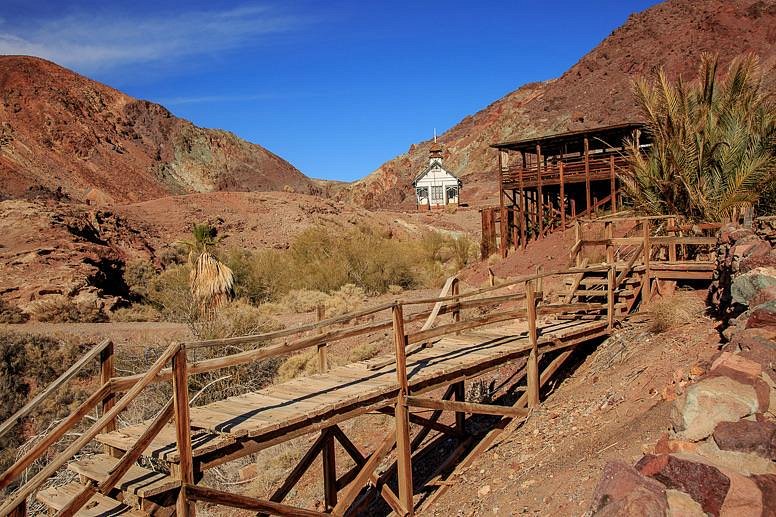
Top ways to experience Calico Ghost Town and nearby attractions

Most Recent: Reviews ordered by most recent publish date in descending order.
Detailed Reviews: Reviews ordered by recency and descriptiveness of user-identified themes such as wait time, length of visit, general tips, and location information.
Calico Ghost Town - All You Need to Know BEFORE You Go (2024)
- (0.12 mi) Calico Ghost Town Campground & RV Park
- (8.84 mi) Rodeway Inn On Historic Route 66
- (8.47 mi) Best Western Desert Villa Inn
- (8.71 mi) California Inn
- (8.83 mi) Super 8 by Wyndham Barstow
- (0.04 mi) Calico House Restaurant
- (3.39 mi) Peggy Sue's 50's Diner
- (8.89 mi) Lola's Kitchen
- (8.80 mi) DiNapoli's Firehouse Italian Eatery
- (8.70 mi) Los Domingos Mexican Restaurant
- (0.00 mi) Dorsey's Dog House
- (3.27 mi) Eddie World
- (9.38 mi) Rainbow Basin Natural Area
- (9.54 mi) Route 66 Mother Road Museum
- (3.45 mi) Liberty Sculpture Park

- Types Of RVs
- Tow Vehicles
- Maintenance & Repairs
- RV Power & Electrical Supplies
- RV Appliances
- Living In An RV
- Travel & Destinations
- RV Gear Buyer’s Guides
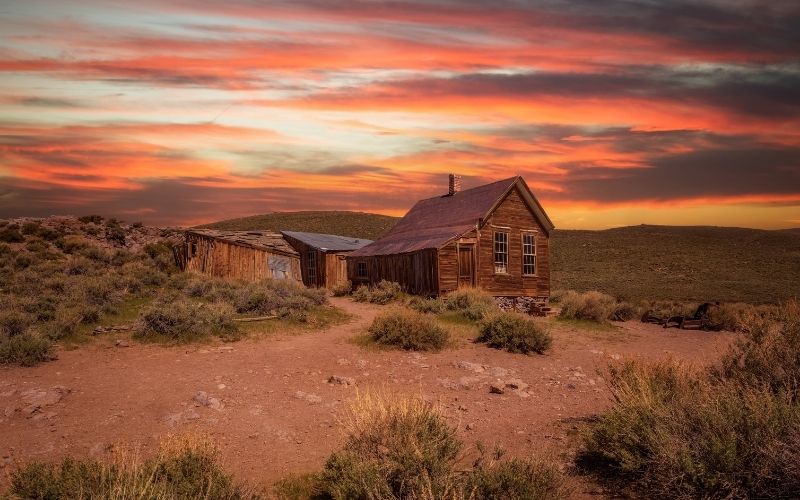
6 California’s Real Ghost Towns That Aren’t Just Tourist Traps!
- Last Updated: March 9, 2024
- 16 minutes read
Nothing is more fun than spooking adventures and exploring ghost towns in California!
They have something for everyone, whether it’s exploring the haunted hallways of an abandoned building, visiting their historical museums, or discovering creations left by modern artists.
California has, by some estimates, more than 275 ghost towns that weren’t able to withstand the test of time. The quick rise and fall of the gold rush left miners no choice but to abandon entire settlements through out the state.
All, however offer a glimpse into the state’s rich history and make for the perfect spooky season day trip.
Despite their prevalence, abandoned towns can still be difficult to find as they are often located far from modern cities and highways. Furthermore, finding one worth visiting is even tougher as many contain little to no buildings or attractions at all—talk about boring.
We looked for abandoned settlements with the most fascinating history, the creepiest hauntings, and the most interesting attractions.
And here are the 6 most stunning and authentic ghost towns in California that would make for great road trips this summer, along with tips on what you should bring with you and where you can camp nearby.
What is a Ghost Town?
Ghost towns are villages, towns, or cities abandoned by their residents. In other words, people no longer live in them.
They are characterized by their deserted buildings, empty streets, and disintegrating man-made structures. People will also refer to them as deserted cities, or abandoned cities.
Why are they abandoned?
Often times a town, or city, is abandoned because the economic activity that supported it failed.
For instance, Bodie Ghost Town in California was deserted due to the fact that it’s nearby gold mines dried up. People could no longer make money living there. So, they left.
Other times a town, or city, is abandoned due to a more sudden, and possibly violent reason. These include natural disasters, nuclear fall-out, disease, or war.
It’s important to do your research before visiting a ghost town. Some may still be dangerous to explore.
For example, due to lethal levels of radiation the ghost town in Ukraine, called Chernobyl, is off limits to visitors.
Are they really haunted?
Maybe—it’s sorta up to you.
Whether or not ghost towns are actually haunted is up for debate. Abandoned buildings, quiet landscapes, and old graveyards have been popularized as haunted places in movies, books, and TV shows for hundred of years.
That just means you’ll need to visit a ghost town, and decide for yourself if it’s haunted. Bring a flashlight.
Why Visit a Ghost Town?
As we mentioned earlier ghost towns are a popular travel destination because they have something for everyone.
You can explore abandoned buildings hunting for ghosts, take a stroll through history by walking down their streets, or marvel at new art installations hidden in their dusty grottoes. You’re pretty much guaranteed to have a good time.
Ghost Hunting
If you’ve ever watched Ghost Hunters, or other paranormal television, you’ve probably already seen ghost towns.
Shoot, it’s probably why you want to visit one. Many people try to visit these towns at night to increase their chances at finding ghosts and ghouls beneath the moonlight.
Please take the proper precautions if you decide to ghost hunt in an abandoned city.
Bring a flashlight, make sure doing so is legal, and let someone know where you are in the event that something happens to you. Other than that, have fun, and safe ghost-hunting!
Knowing Their History
Ghost towns are places frozen in time. Residents might leave in such a hurry that they even leave furniture behind.
Therefore, they’re a much more intimate and authentic place to learn about history than a museum.
Read some articles about the ghost town before you visit so you can impress your friends and family with knowledge about specific spots in the abandoned city.
Artists travel to ghost towns because they’re a quiet, and private place to practice their art.
Therefore, abandoned cities are often home to graffiti, murals, and even sculptures. Keep your eye out for hidden art pieces, or create one of your own!
Ghost Town Checklist
Ghost towns are abandoned for a reason. They’re often in hostile environments with little to no modern conveniences.
In order to be safe, and have a good time, there’s some things you should bring. Here’s our recommendations for your ghost town adventure checklist:
- Sunscreen – Many of these ghost towns are in the desert. The desert is hot. Protect your skin by applying sunscreen every hour.
- Water – Bring a gallon of water for every day you’re spending in the ghost town. All the walking will dehydrate you, and the hot sun overhead won’t help either
- Thick-soled shoes – No flip flops. Ghost towns are home to broken glass, rusty nails, and thorny bushes, none of which you want in your foot.
- A Flashlight – Even if you visit during the day you may want a flashlight when entering abandoned buildings. Many will not have artificial lighting.
- Food – No modern amenities means no McDonalds or Walmart. You’ll need to bring food for every meal you plan on eating during your visit.
- Camera – There’ll be plenty of opportunities to take pictures. If you bring the right clothing, you might even be able to dress like an old miner, and fool your friends into thinking you bought a time machine.
9 Creepiest Ghost Towns In California Worth a Road Trip
Alright, now that you know everything there is to know about ghost towns lets talk about which ones are the best.
We found the abandoned cities in California with the most fascinating history, the highest levels of haunted activity, and the best natural settings for exploration.
We even included a place to camp nearby so you can explore these stunning abundant ghost towns in California for as long as you want.
1. Bodie Ghost Town
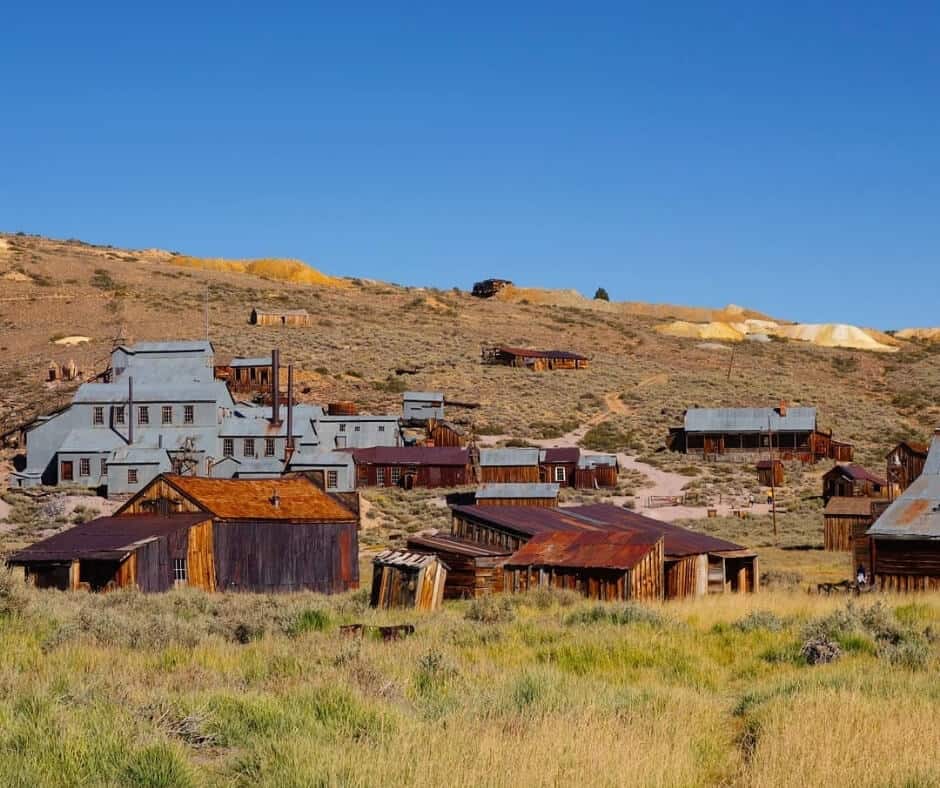
If you want to see one of the most preserved ghost towns in America than Bodie is the place for you.
It’s a historic park that California has kept in a ‘state of arrested decay’ for 70+ years. It’s a little more touristy than other ghost towns on this list, but it’s still one of the best.
Bodie was established in 1861 after William Body discovered gold in the hills surrounding nearby Mono Lake.
A sprawling city of 10,000 people quickly sprouted up, and then dried up just as quick after the gold ran out.
Today, 110 abandoned buildings stand, some still containing the furniture or goods left behind by those who deserted them.
- Hours of Operation: 9am-6pm (May 15th – Oct 31st); 9am-3pm (Nov 1st – May 14th)
- Cost: $8 Adults; $4 Children (Ages 4-17); FREE Toddlers (Ages 3 and under)
- Pets Allowed: Yes, except in the Stamp Mill and Museum
- Location: Bodie, California
Top 3 Things to See and Do
- Tour the Standard Mill & Gold Mine—Tour the Standard Mill where they processed the gold and silver found in the mines. You can learn a lot about the history of the gold mine as well as the process of acquiring it.
- Bodie Museum—Learn about Bodie’s colorful past which included robbers, prostitutes, gunfighters, and miners. It’ll help you understand more about the structures within Bodie as you explore.
- Bodie Methodist Church—Check out this picturesque wooden church while visiting this ghost town!
Where to RV camp while visiting?
Paradise Shore RV Camp
Why you’ll love it? Besides being one of the closest RV parks to Bodie Ghost Town, Paradise Shore is also centrally located next to tons of other outdoor activities and places to see.
These include, Mono Lake, Yosemite National Park, and the Sierra Nevada Mountains. You can find plenty of opportunities for hiking, fishing, and more!
Location: 2399 CA-182, Bridgeport, CA 93517 (22.1 miles from Bodie)
Basic Information:
- Cost: Starting at $38/night
- Number of sites: NA
- Showers/Laundry: Both
- Pool/Spa: No, but it’s within walking distance of a lake
- Full Hookups: Yes
- Propane: Yes
- Pets Allowed: Yes
- Max RV length: 40 feet
2. Calico Ghost Town
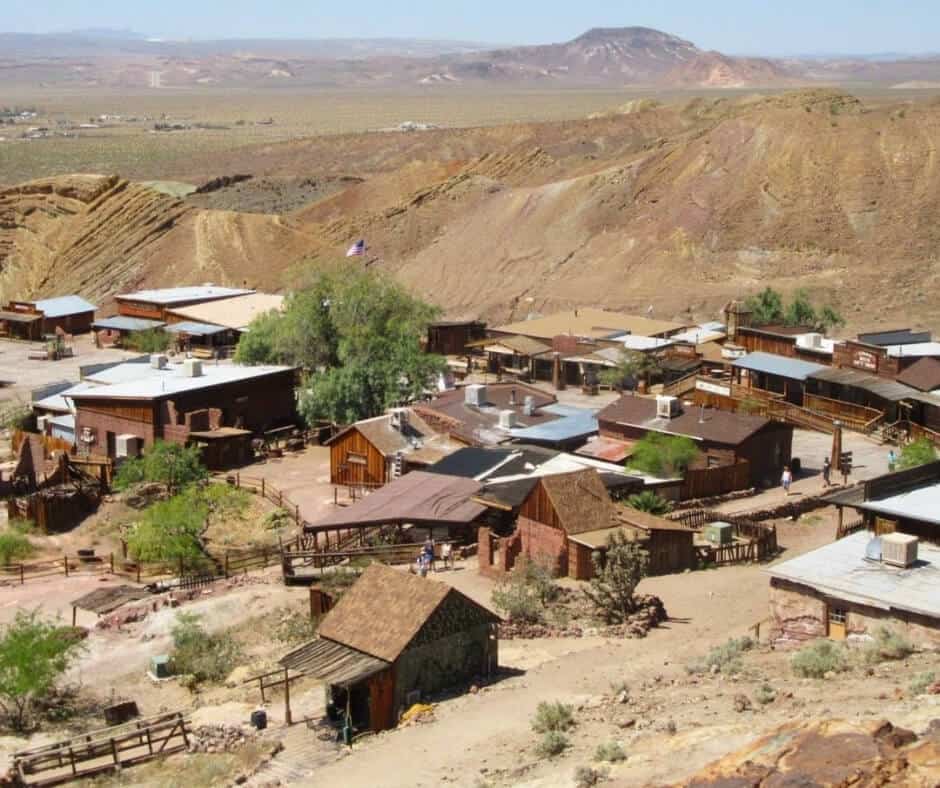
What happens when a theme park tycoon purchases an old, abandoned city? Find out by visiting Calico Ghost Town!
This dusty mining town was purchased by Walter Knott, the founder of Knotts Berry Farm, in the 1950s. He decided to bring the dead town back to life with his massive fortune.
If Bodie is considered touristy than Calico Ghost Town is the definition of a tourist trap. Walter Knott did not preserve Calico Ghost Town, he restored it.
All the old buildings were refurbished and rebuilt to recapture the town’s lost glory.
Walter Knott certainly took some creative liberties with it’s restoration, implementing several modern conveniences into the old buildings, including a Starbucks. Nonetheless it’s a great place to take the family!
- Hours of Operation: 9am to 5pm Daily, except Christmas Day
- Cost: Starting at $2 for kids and $3 for adults – Full list of prices on their website
- Pets Allowed: Yes, leashed dogs welcome
- Location: 36600 Ghost Town Rd, Yermo, CA 92398
- Tour the Maggie Mining Company Mine—You can go on a self-guided tour where you’ll learn about the history of the mine as well as the process of procuring silver. It’s an easy 1000-foot, handicap accessible, walk.
- The Calico Odessa Railroad—This8-minute train tour takes you around to see several historical sites, mining equipment, and hear some interesting historical facts.
- Pan for Gold like a real miner—The Calico Gold Panning Adventures offers visitors the opportunity to learn about gold panning. Afterwards, you’ll pan for gold in the nearby river. Everyone strikes gold—well, fools gold. The park gives every visitor a bit of iron pyrite, also known as fools gold.
Calico Ghost Town Regional Park
Why you’ll love it? You get to camp inside the park! It’s walking distance from the ghost town, and will give you a more authentic overall experience. This is great for people that enjoy a more primitive camping style. The best part? Camping here gives you free admission into the town!
Location: 36600 Ghost Town Rd, Yermo, CA 92398 (Less than 0.1 miles away)
- Cost: Starting at $30/night
- Showers/Laundry: Showers
- Pool/Spa: None
- Propane: No
- Max RV length: 50 feet
3. North Bloomfield Ghost Town
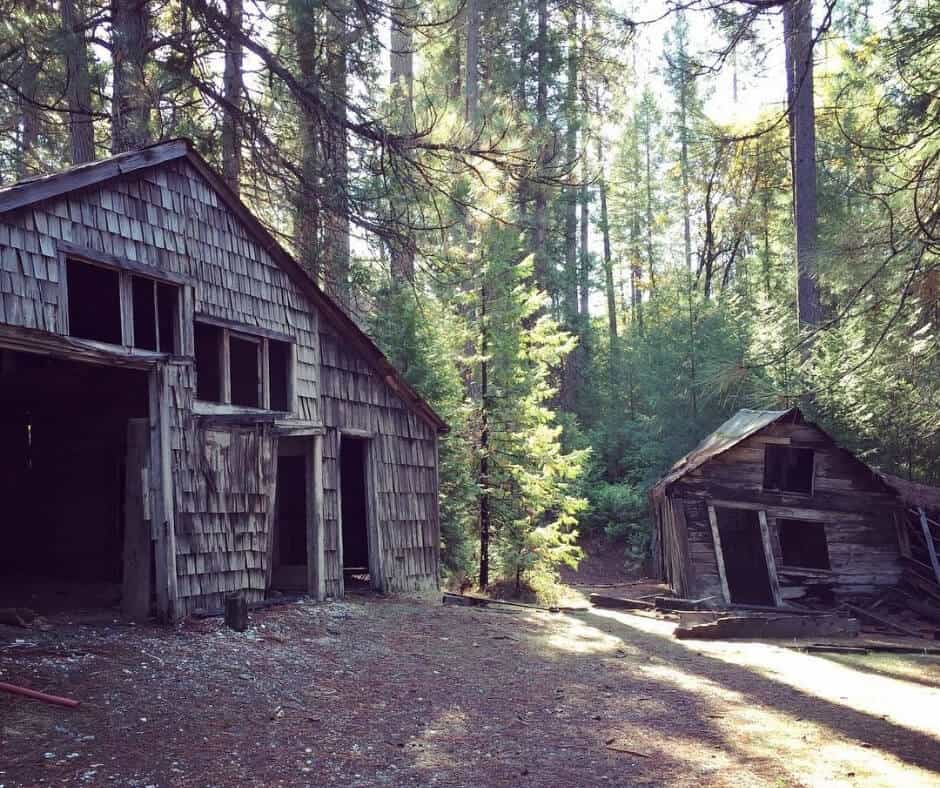
This abandoned town lies at the heart of Malakoff Diggins State Park in Northern California. Once called Humbug City, this well-preserved ghost town dates back to the 1800s.
Many of the original buildings still stand, preserved by California rather than restored. It’s not touristy like Bodie or Calico.
Tours of the town are held daily throughout the summer and on weekends during the off-season. During these tours you’ll learn about the residents who call this place home in the 1800s.
You’ll also discover how mining came to the town, why it was abandoned, and other interesting historical facts
- Hours of Operation: Open Daily, sunrise to sunset
- Cost: $10 per vehicle
- Pets Allowed: Yes, friendly, leashed dogs welcome
- Location: North Bloomfield, CA
- Tour North Bloomfield Ghost Town—You can go on a self-guided tour, or attend a tour with a guide by checking the information at the visitor center. Learn about the quick and interesting history about this 150-year-old ghost town.
- Explore Malakoff Diggins State Park— This 8-minute train tour takes you around to see several historical sites, mining equipment, and hear some interesting historical facts.
- Hike Across Edwards Crossing Bridge—This historical landmark is a great place to visit in the summer. It’s a local watering hole with opportunities for cliff diving, swimming, and fishing.
Willow Creek Campground & RV Park (Call for Reservations – 530-288-0646)
Why you’ll love it?
You get to camp inside the park! It’s walking distance from the ghost town, and will give you a more authentic overall experience.
This is great for people that enjoy a more primitive camping style. The best part? Camping here gives you free admission into the town!
Location: 17548 CA-49, Camptonville, CA 95922 (25.6 miles away from North Bloomfield)
- Number of sites: 40
- Pets Allowed: Yes ($5/day)
- Max RV length: 35 feet
4. Ballarat Ghost Town
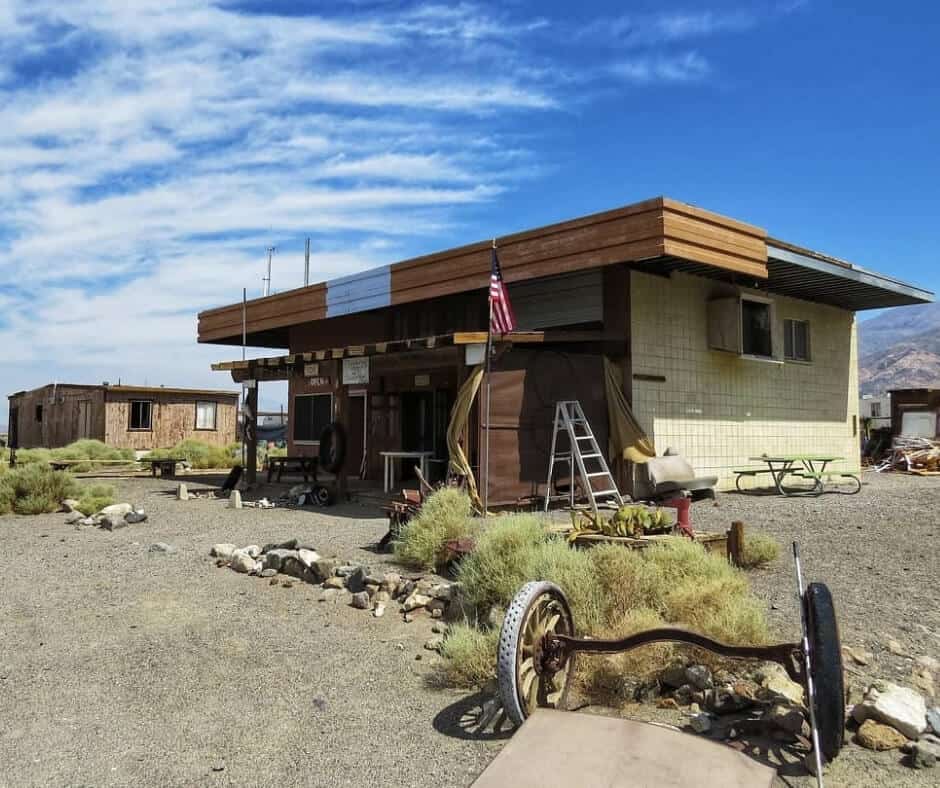
Located in Panamint Valley near Death Valley National Park lies this forgotten Ghost Town. There’s no company or government entity running this abandoned place.
Instead, you’ll find an old graveyard, several crumbling building, and a general store run by Roc and his dog.
They’re the last two residents in this town that used to boast a population of 2,000 people. If you’re looking for a ghost town that you can explore without regulations come to Ballarat.
There’s no true open or closing time, and no real efforts have been made to preserve the city.
In other words, it’s truly authentic, and provides a glimpse into what will surely happen to every city once we’re gone.
- Hours of Operation: 24/7
- Location: Ballarat Rd, Trona, CA 93592
- Visit the Burned Remains of Barker Ranch—This is where the Manson Family lived for several years. It’s also the place where the infamous Charles Manson was arrested for the final time. It burned down in 2009, but you can still visit the site where it lay. You’ll even see the remains of the Manson Family truck.
- Look for Ghosts in the Ballarat Cemetery—If you’re looking for ghosts the best place to search are cemeteries. Go at night, and really test your courage.
- Hike to Telescope Peak—This is the tallest peak in Death Valley, and a pretty strenuous hike. It’s a 14-mile round-trip which will take you 7 hours to complete. Your reward will be breathtaking views of the entire valley. Bring plenty of water, food, and sunscreen.
Mahagony Flat Campground
Why you’ll love it? This RV campground is as primitive as they come. You’ll only find a picnic table and a fire pit for your amenities.
It supplies you with great views of the valley, and at night, astonishing views of the night sky.
Location: 36600 Ghost Town Rd, Yermo, CA 92398 (31.4 miles away from Ballarat)
- Number of sites: 10
- Showers/Laundry: No
- Pool/Spa: No
- Full Hookups: No
- Max RV length: 25 feet
5. Bombay Beach Ghost Town
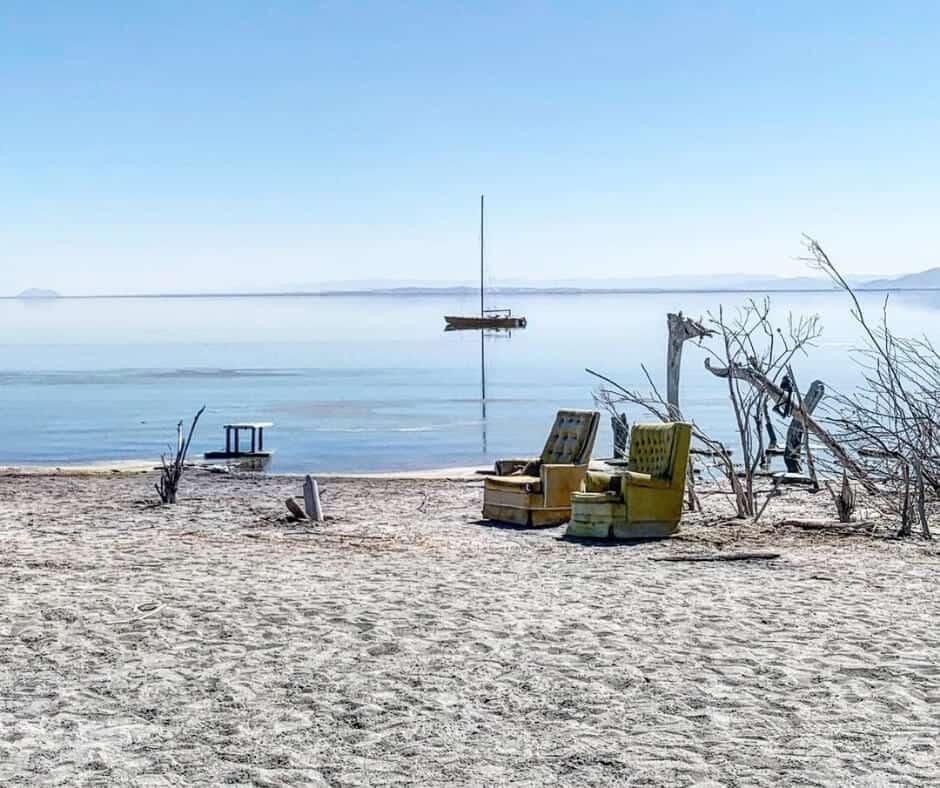
This perhaps the fascinating ghost town on the list. In the early 1900s the Colorado River went rogue and dumped a 15-mile by 35-mile lake into the Salton Sea Trough.
This accidental body of water eventually attracted millions of visitors, who called it a “miracle in the desert”.
A resulting flood of businesses, yacht clubs, and hotels opened in the 1950s to support the tourism influx.
Unfortunately, in the 1970s the lake bed began to dry up, and pollution got so bad that people no longer came to visit. Soon the city was almost entirely abandoned.
There’s still a few residents in Bombay Beach, but the bulk of it’s citizens have disappeared. The result? A destination straight out of an apocalypse movie.
- Location: Bombay Beach, CA
- Attend Bombay Beach Biennale—This Burning Man like event caters to everyone. You can find a number of activities, including: lectures, art shows, live music events, museum tours, and more. It spans 3-days, and it’s free, but get a wristband fast because the event only has 500 openings available.
- Check out the permanent art installations—If you can’t attend Bombay Beach Biennale then look out for some of the permanent art exhibits it leaves behind. Artists construct beautiful sculptures from reused pieces of trash. Just walk, or drive around the ghost town to see what I’m talking about.
- Lounge on an apocalyptic beach—Grab a chair, a book, and go catch some sun on the shores of the Salton Sea. It’s not the prettiest beach in the world, but the surrounding apocalyptic environment will make for some unique pictures and memories.
Fountain of Youth Spa RV Park
Why you’ll love it? It’s the perfect paradise for RV campers. You’ll find a number of activities and events at this resort. They even offer access to a hot spring in the Chocolate Mountains.
If you get bored at the RV park, you can go enjoy the endless outdoor activities the area has to offer, or cruise around Bombay Beach.
- Location: 1500 Spa Rd, Niland, CA 92257 (6.5 miles away from Bombay Beach)
- Cost: Starting at $28
- Number of sites: 200+
- Pool/Spa: Both
- Max RV length: 65 feet
6. Allensworth Ghost Town
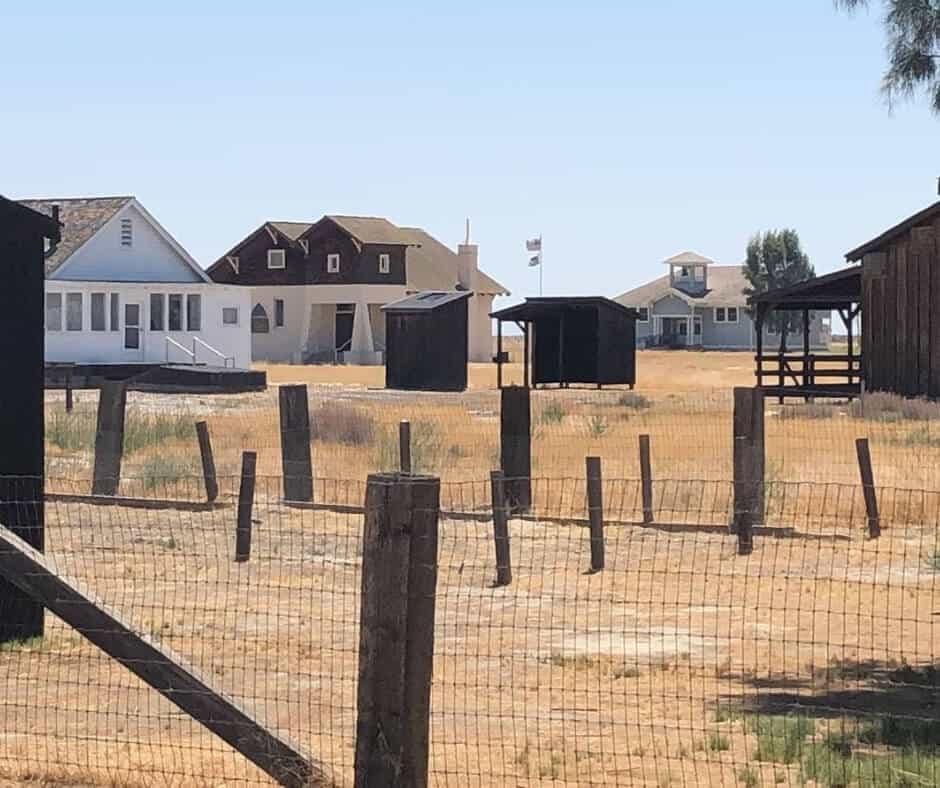
This ghost town probably has the coolest history on our list. Colonel Allen Allensworth (almost sounds like a made-up name), and four other settlers established the town in 1908.
It was a town founded, financed, and governed by African Americans. Unfortunately, after it’s founder was killed in a motorcycle accident, and the Pacific Farming Company failed to deliver water to the city, it began to be abandoned.
Made into a state historic park in 1974 this ghost town has been nicknamed, “The town that refused to die”.
This is due to the fact that a few inhabitants still call it home, refusing to leave despite it’s financial failure.
Today a collection of lovingly restored and reconstructed early 20th-century buildings—including the Colonel’s house, historic schoolhouse, Baptist church, and library.
- Cost: $10 Day Fee
- Location: Grant Dr, Earlimart, CA 93219
- Visit Delano Heritage Park—Check out the history of the area. It’s a small museum so you can walk in an hour or so.
- Explore Pixley Wildlife Refuge—This is a great place for birdwatchers or those looking for an easy hike. The small, wetlands area features a number of species, including: threatened Tipton kangaroo rat, blunt-nosed leapord lizard, the endangered San Joaquin kit fox, and in the winter months, the Sandhill Crane.
Colonel Allensworth State Park Camping
Why you’ll love it? It’s a small campground at the heart of Allensworth State Park. You can leave your RV, and literally walk around the large park.
It provides a primitive experience with just picnic tables, fire rings, flush toilets, and a few showers.
Location: Grant Dr, Earlimart, CA 93219 (Basically inside Allensworth Ghost Town)
- Cost: Starting at $20
- Number of sites: 15
- Showers/Laundry: Shower
Truth be told, there’s probably over a hundred ghost towns hidden throughout California. If we missed your favorite please let us know! You can leave your story in the comments below.
About Author / Aaron Richardson
Aaron Richardson is an expert RVer and the co-founder of RVing Know How. Aaron, along with his wife Evelyn, has been living and traveling in their Keystone Fuzion RV since 2017. Their adventures span across the country and beyond, including memorable RVing experiences in Mexico. Aaron's passion for the outdoors and RVing shines through in his writings, where he shares a blend of travel stories, practical tips, and insights to enhance the RV lifestyle.

RV Gray Water Tank: 10 Things All First-Time RVers Must Know
6 best crossover suvs for towing an rv in 2022.

Leave a Comment Cancel reply
Your email address will not be published.
Save my name, email, and website in this browser for the next time I comment.
You Might Also Like
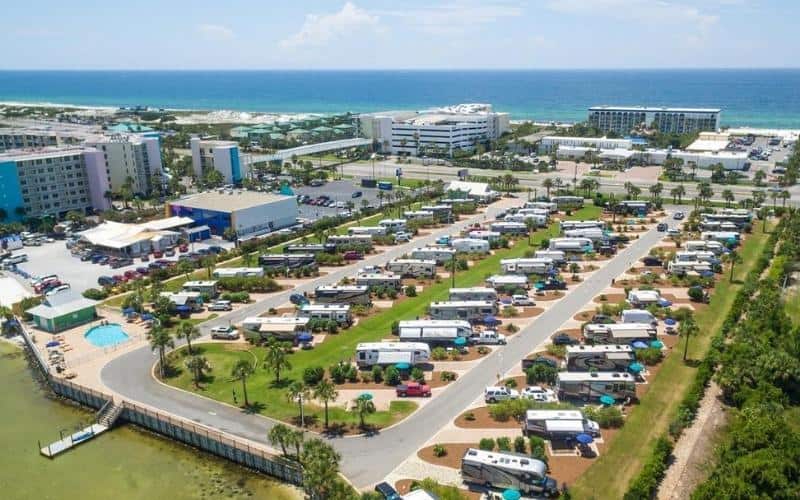
9 Awesome Destin, Florida RV Parks on the Beach
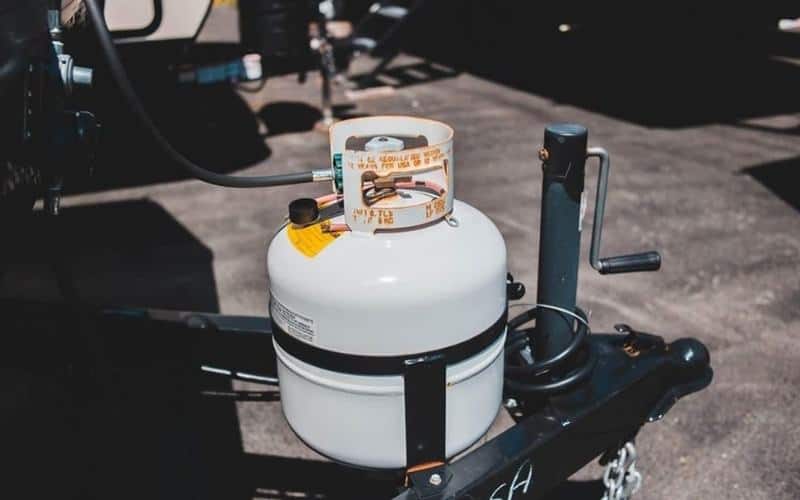
RV Propane Tanks: How to Figure Out What Tank Size Is Right For You?
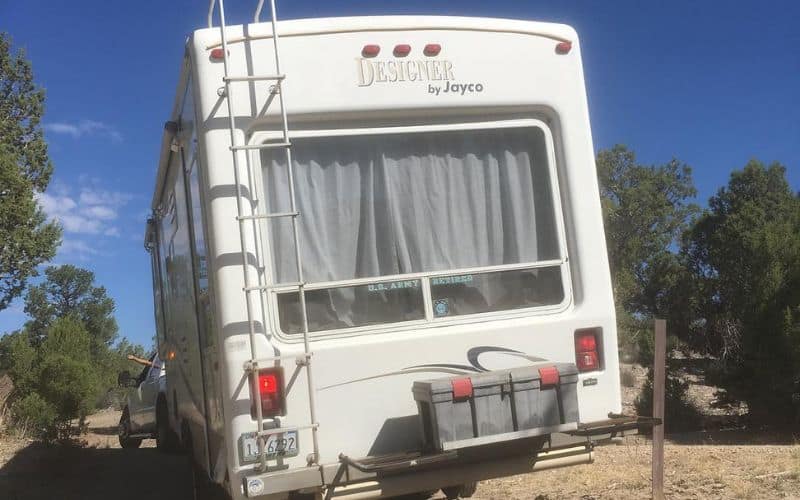
Do I Need Sway Bars to Pull My Camper Trailer?
Start typing and press Enter to search

8 Ghost Towns in Death Valley: Explore the Dust & Rust
California’s gold rush boom in the 1850’s set off a frenzy of mining unlike any that the US had ever seen. And not only was there gold in them thar hills, but also silver, copper, lead, borax and zinc. Many such mines sprang up in the dry, southern reaches of Eastern California in what is now the area around Death Valley National Park. This region isn’t called Death Valley for nothing, so when the boom started to wane, Death Valley’s formidable landscape and unforgiving climate gave little reason for the mining towns to consider prospering. And the long slow slide began.
As a result, you’ll find quite a few ghost towns in Death Valley…and in the adjacent region. We’re recommending eight of them that are worth adding to your Death Valley trip. All but three of the ghost towns are easily visited with a normal car and you have choices whether you are coming in from LA, the Highway 395 corridor or Nevada.
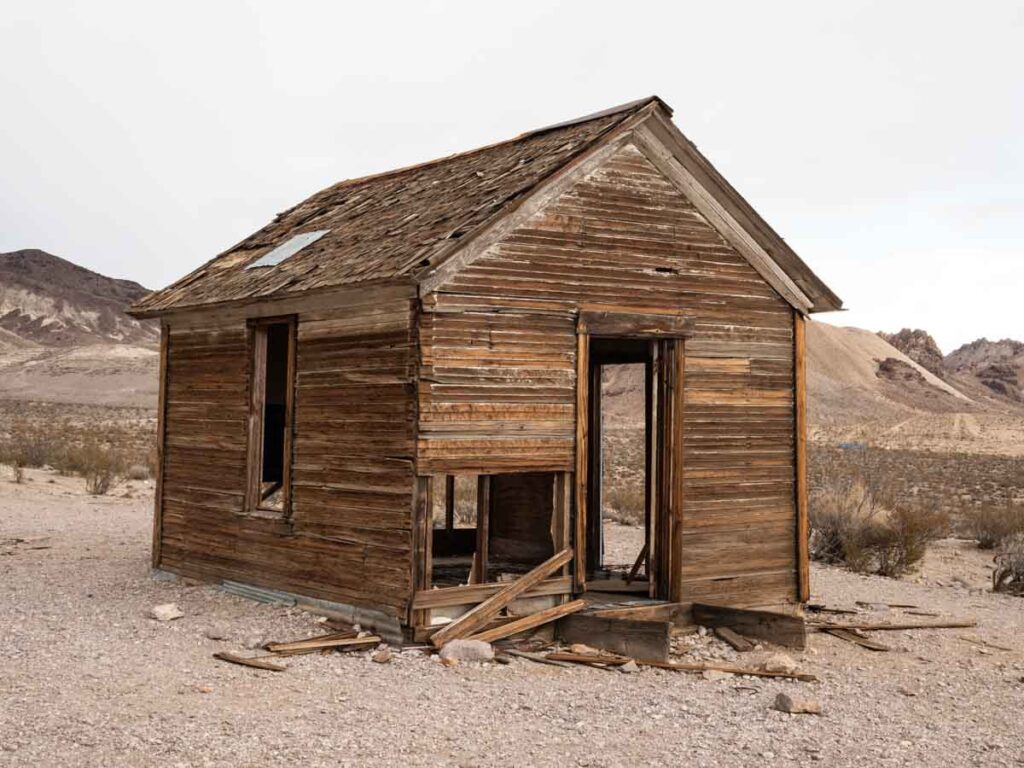
(This article contains affiliate links. This means that if you choose to purchase, I’ll make a small commission.)
Plan Your Death Valley Trip
We a veritable gold mine of resources to help you plan a trip to Death Valley (sorry, but we couldn’t resist the pun). Start with our Death Valley visitor’s guide , which includes things to do and practical tips like when to visit and how to get there. Get some fun facts about the national park. Find accommodation using our hotel guide or our camping guide . We also have a two-day itinerary (which includes some of the ghost towns), and a suggested road trip routing from SF (which includes other ghost towns).
Get guides for the popular Golden Canyon and Sidewinder Canyon hikes. Then keep driving to Joshua Tree , using our road trip guide.
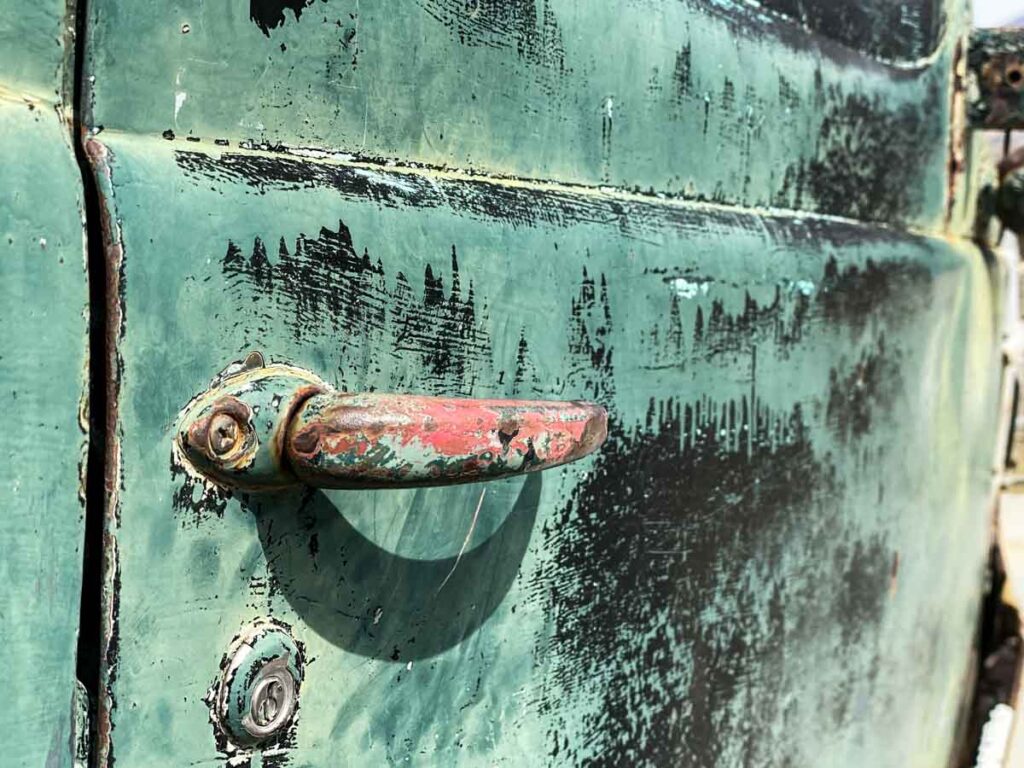
Tips for Visiting Ghost Towns in Death Valley
- Keep the gas topped up : While there are several gas stations in Death Valley, the park and surrounding area has a lot of open space and a “middle of nowhere” vibe. So keep the tank gassed up.
- Always carry water : It can be very hot in Death Valley, even during the spring and fall. Be sure to pack plenty of water, both in the car and on your hikes.
- Take an old school map : Death Valley has notoriously poor mobile reception, so you may not be able to count on Google maps to help you find some of these locations. We are huge fans of the California Road & Recreation Atlas . It’s super detailed, showing both paved and dirt roads and recreational areas.
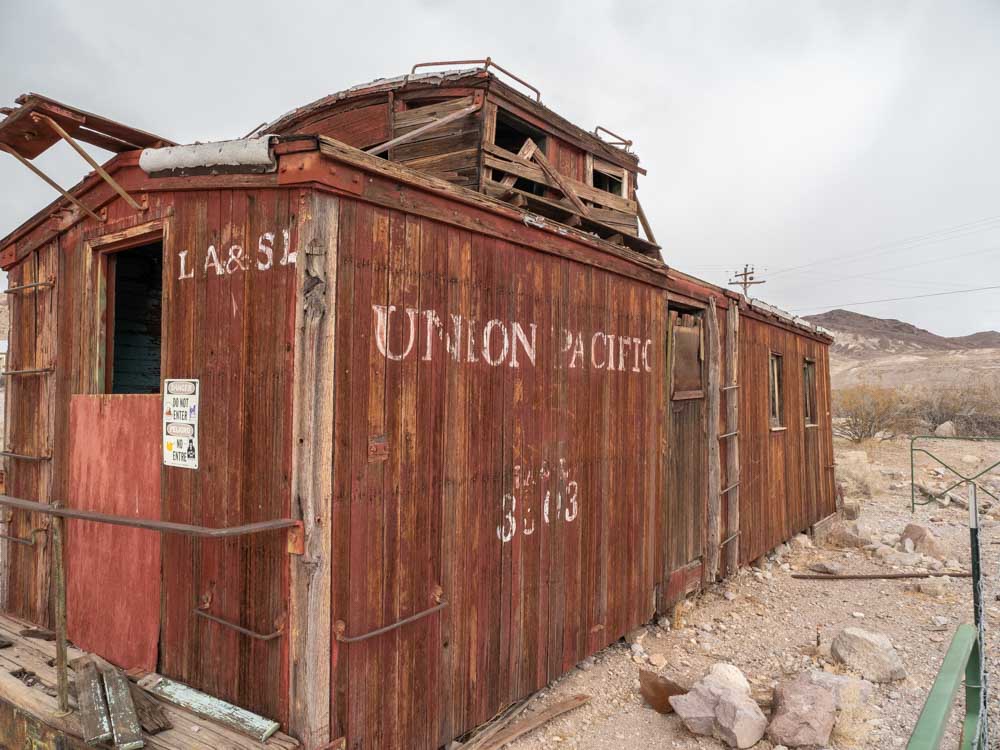
Rhyolite Ghost Town
Rhyolite was a grand boomtown. In its glory days, it had a public bathhouse, 50 saloons, and 19 lodging houses. Starting as a small mining camp in 1905, the town’s population grew to 5,000 miners in just a half a year. Charles M. Schwab’s attention elevated the town, bringing in water mains, electricity, telegraph, and telephone lines. Unfortunately, the ore diminished, leading first to mine closures and then the closure of the town’s related businesses. They cut power to the town in 1914, forcing most of its inhabitants out.
Some of Rhyolite’s remaining attractions are:
- The Tom Kelly bottle house, which is the largest and oldest bottle house in the US.
- The Goldwell open-air museum.
- Remains of the old bank, jail and train depot.
Getting to Rhyolite : Rhyolite is 4 miles west of Beatty, Nevada and and 1.5 hours northeast of Death Valley’s main activities. Here’s our full guide to Rhyolite , which has more history on the site and a bunch of pics.
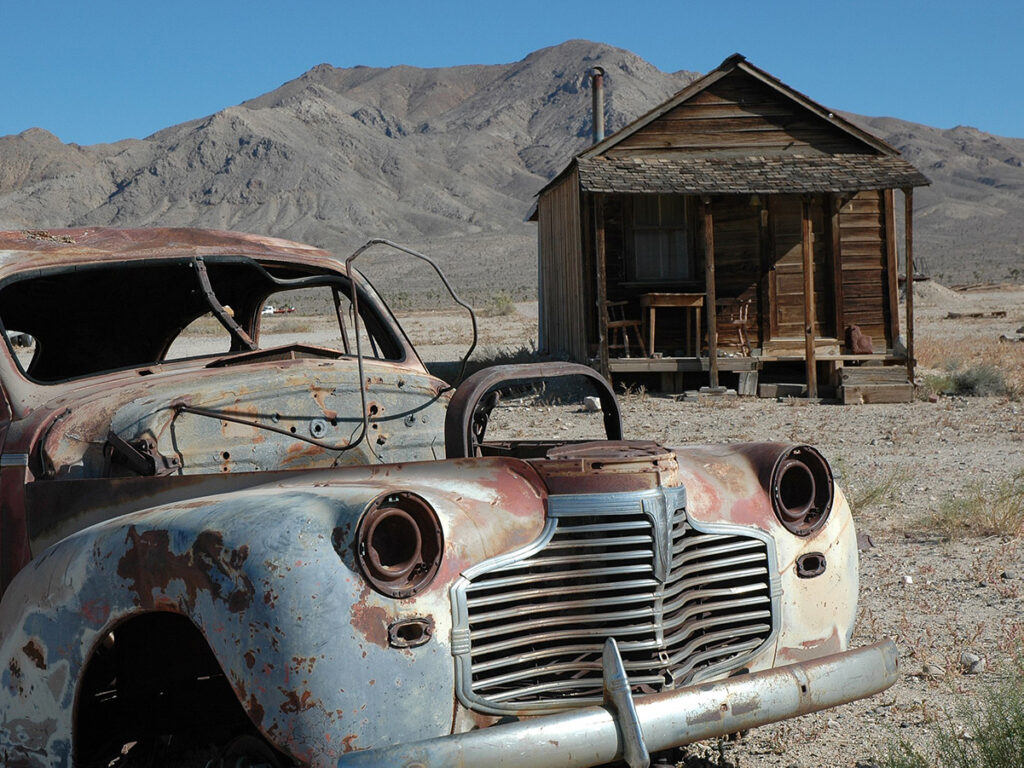
Gold Point is a ghost town with a resurrection story. It was founded in the early 1860’s as a silver mining camp. Things tootled along until the 1920’s, when gold was found there. The population topped out at 2,000 and the town supported many saloons, hotels and stores. And then came the inevitable decline.
In the late 1970’s two friends came to town and decided to do what they could to save Gold Point. They began purchasing buildings and worked with the few remaining townspeople to shore up the buildings.
Things to do there:
- The Post Office (which is also a museum).
- Self-guided tour of the town.
- Overnight stay in simple cabins .
How to Get to Gold Point : The town is a great stop if you are entering Death Valley from Nevada and also want to visit Rhyolite via Beatty, NV. The town is one hour north west of Beatty.
Chloride City
Like Panamint City (noted below), Chloride City is another Death Valley ghost town that’s located within the park borders. But it’s somewhat tricky to get to. Silver ore was found in Chloride in 1871. But the difficult location meant that it never really boomed like other sites, and calling it a “city” is generous. But mining came and went into the early 1900’s before the formidable location meant the the city started melting in to the landscape.
Things to see include:
- Building ruins.
- Mine entrances.
Getting to Chloride City : This 17 mile dirt road requires 4×4 and clearance. Going east on the Daylight Pass Road toward Beatty, look for the small sign 3.6 miles east of the Hells Gate rest stop (which also has park signage). Then head south and up.
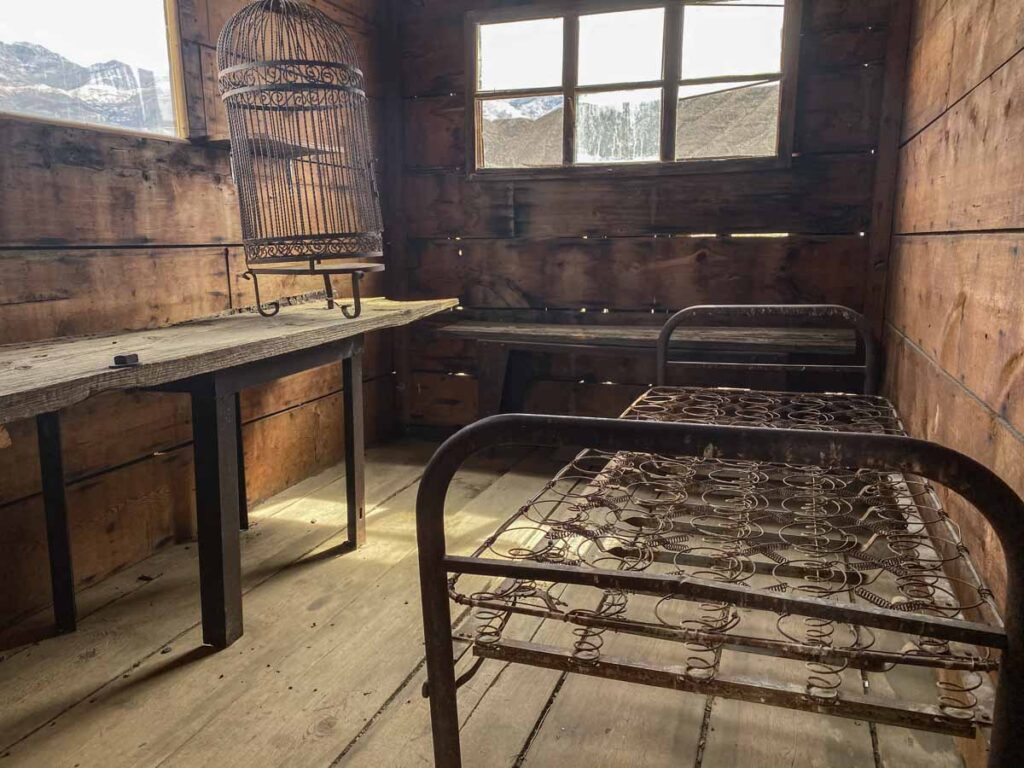
Ballarat is a little boomtown in the Mojave Desert’s Panamint Valley, at the western edge of Death Valley National Park. Ballarat rose at the tail end of the 19th-century mining rush of 1896. It was a mining supply station and a source for whisky and water, both being in scarce supply in this very dry desert. At its peak in 1897, the town was home to 500 people and had a post office, morgue, and a jail. As the lodes dried up, the post office shut down in 1917, ending the town’s heyday.
You can simply wander around visiting the old buildings, trucks and farm equipment There’s also a small store with some historic artifacts and explanatory signage. A donation is requested.
- An old graveyard and the grave of one of the last of the Rainbow Seekers– Seldom Seen Slim.
- The general store run by the ghost town’s lone resident and dog.
- Charles Manson’s old truck.
Getting to Ballarat : It’s located 40 minutes directly south of Panamint Springs and an hour west of Stovepipe Wells. It’s about an hour south of Darwin and you can do both in one shot. Along the way, don’t be surprised if you’re bombarded by a herd of feral mules. They were cut loose by the miners and now live off the land. They like carrots, should you feel so inclined.
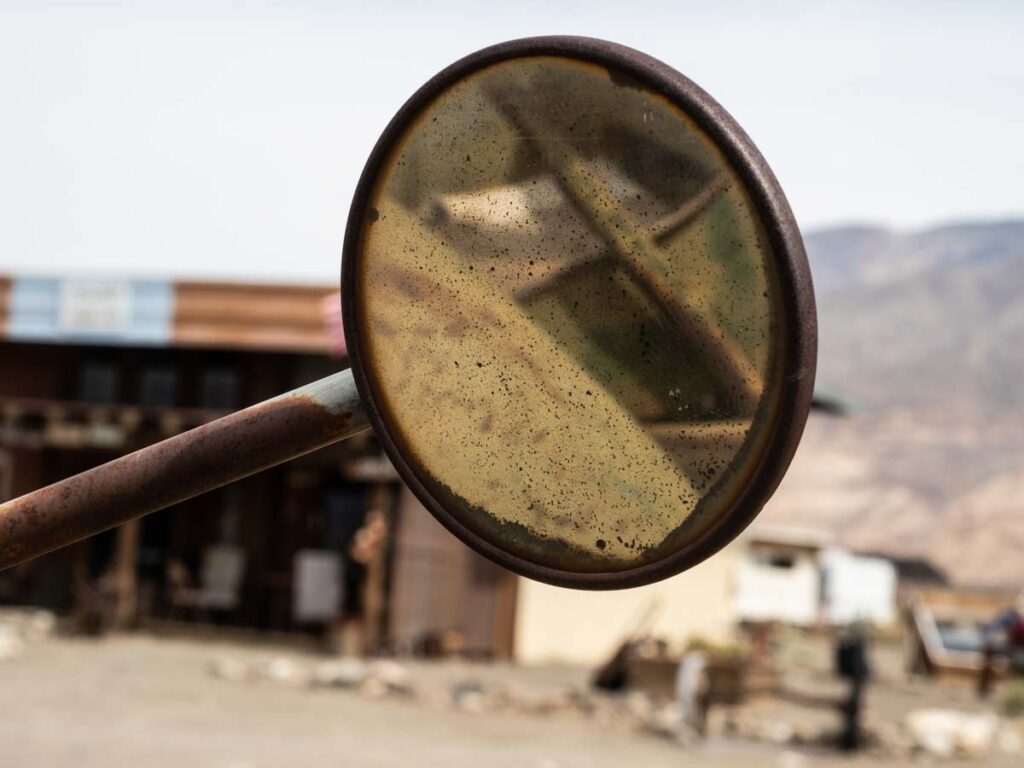
Panamint City
The Panamint City ghost town is located near(ish) Ballarat, but within the confines of the Death Valley National Park borders. This area is remote, even by intrepid 1800’s standards. And the area was a magnet for bandits. The town started booming when silver and copper were found there in 1872. Nevada Senator John P. Jones rushed in to buy up claims. But it was a very risky endeavor, given the remote location and difficult terrain. The frenzy peaked in 1874 with 2,000 miners but by 1876 a steep decline began.
- A smokestack.
- Miner cabins.
- Mining equipment.
Getting to Panamint City : Visiting this Death Valley ghost town is only available on foot and not for the feint hearted. The trailhead parking is 6 miles north of Ballarat. The trail itself is a difficult 12.6 mile out and back with nearly 4,000 feet of elevation gain. Only attempt this hike if you are an experienced backcountry hiker.
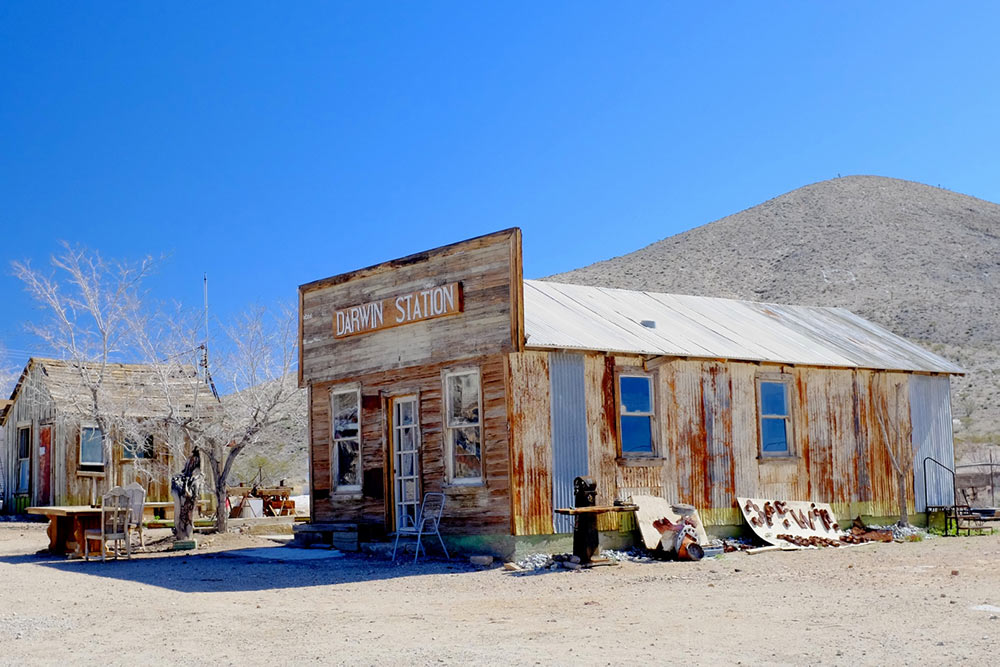
Darwin is a “kind of” ghost town located outside the western reaches of Death Valley National Park. The town borrows its name from Darwin French, a prospector who visited the area in 1850. The adjacent canyon and falls north of town are also named after him. The first settlement in Darwin came up in 1874, in the wake of lead and silver mining in the region. The post office opened in 1875 and, but for a brief closure, it’s been open ever since.
The town remained operational because of the Eichbaum Toll Road, which provided western access into the national park. But the town became isolated in 1933 when Death Valley was designated a national monument. When a a new, free bypass into the park was created, the town inevitably declined.
According to the 2020 census Darwin still has 36 residents. This isn’t a zoo, and the residents own private property, so please be considerate while wandering around.
- Old buildings from its mining heyday.
- Folk art stores and open air museum.
- Post Office, which is open 10a-2p Monday-Saturday.
Getting to Darwin : It’s located 30 minutes west and south of Panamint Springs.
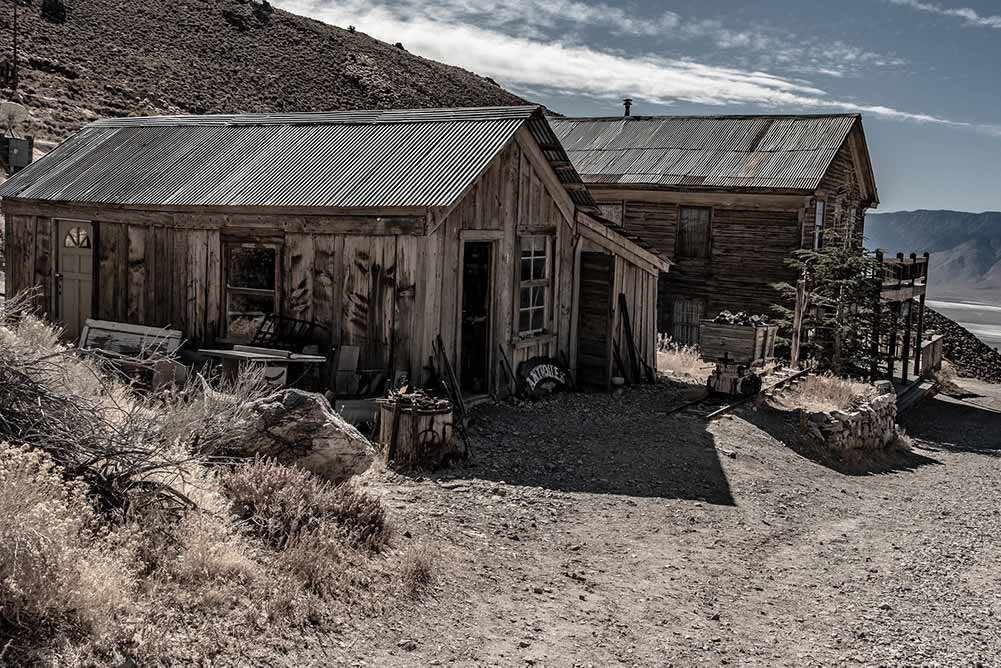
Cerro Gordo
Cerro Gordo, Spanish for ‘fat hill’ is one of the most authentic mining ghost towns near Death Valley. And while it’s not in Death Valley proper, it’s worth a stop if your trip also includes time driving the Highway 395 corridor.
Cerro Gordo was the first major silver strike in Owens Valley. Its roots date back to 1865 when Pablo Flores set up a silver ore mining and smelting point at Buena Vista peak. By 1867, more miners began flocking to the area. Some businesses were established and in 1868, a proper road was built to the remote area. This enabled mule-team wagon trains to transport more of the ore to Los Angeles.
At its peak, 1,500 people filled the camp and it developed a reputation for lawlessness. However, like the other towns listed here, the mine’s production and profitability ultimately fell, and by 1920, Cerro Gordo had only ten miners remaining. The site is now a privately owned 336 acre ghost town. The entrance fee is $10. The town is open 9am-5pm Monday-Sunday. They are open all year, but the road may be impassable during winter storms.
Things to see in Cerro Gordo include:
- Authentic feel of a 19th-century mining town tour.
- Hoist House and Assay Office experience.
- The area’s photographic scenery.
Getting to Cerro Gordo : Located 41 miles southeast of Lone Pine off of Highway 395. Getting there requires going up an 8-mile dirt road which is steep in sections, topping out at 8,500′. They advise a 4×4 car or at least some clearance.
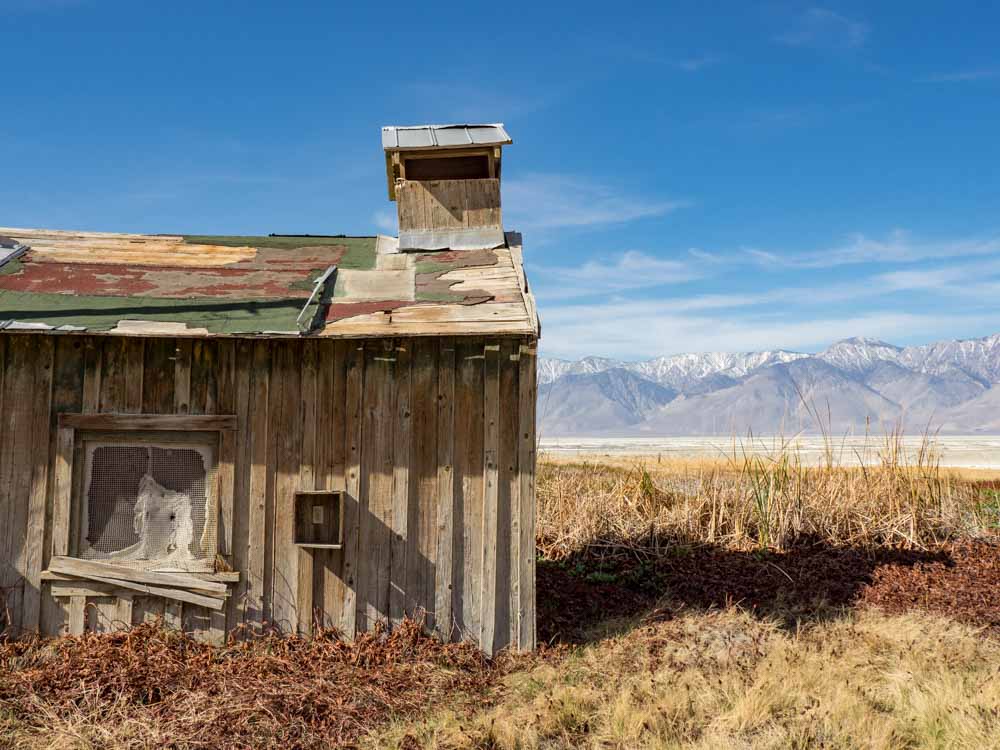
If you are getting to Death Valley from the Highway 395 corridor, you drive in right past Keeler and it’s definitely worth a quick stop. The town is one of two ‘almost’ ghost towns near Death Valley, with a human population of 71 and a sad number of abandoned buildings.
Keeler grew on the shores of Owens Lake in the 1870s as a freight terminal. By 1880, a mill was build to process ore from the Cerro Gordo mines and a rail spur was laid to help move the ore. Keeler went through several highs and lows because it was tied to Cerro Gordo’s fortunes. As noted above, Cerro Gordo ultimately Cerro dried up and then the nearby lake dried up as well, which killed the town and drove away most of the residents.
That said, there are still people living there, so please respect that when you wander the town.
Things to see in Keeler include:
- The old post office, operational since 1883.
- The Owens Lake Silver Company furnace, a historical landmark.
- Keeler cemetery, the old train depot and other mining buildings.
Getting to Keeler : It’s located 15 miles south of Lone Pine, on the western road into Panamint Springs and Death Valley.
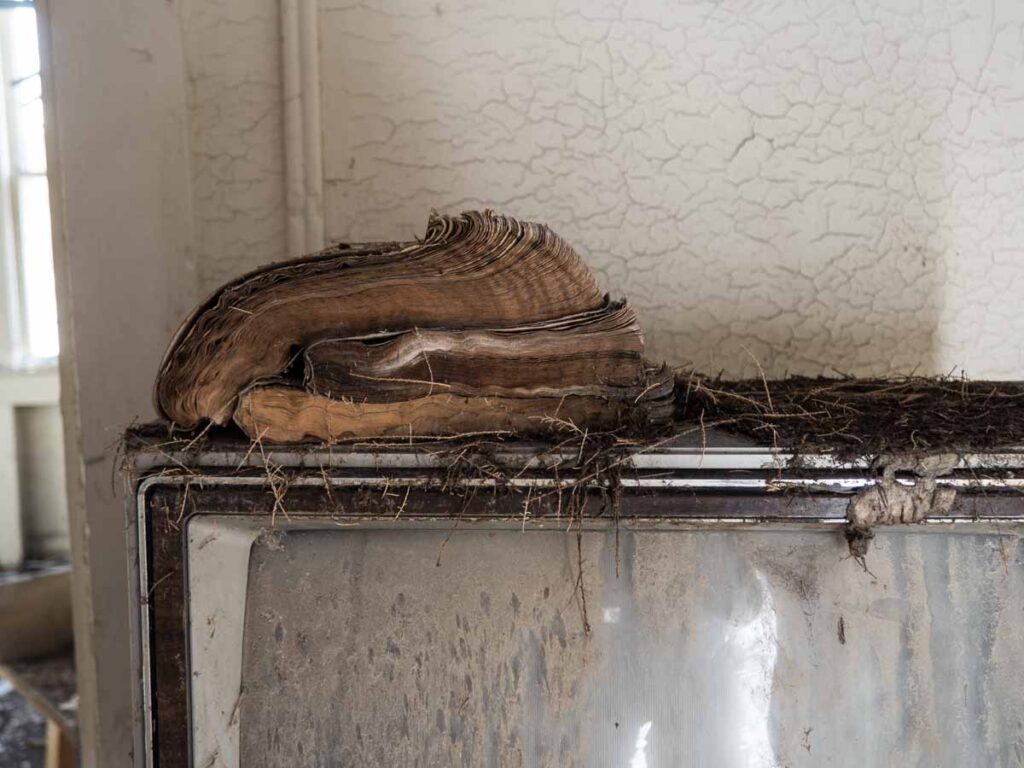
Other Things to Do in the Area
If you are getting to Death Valley via the Eastern Sierra, be sure to use our H ighway 395 road trip itinerary to find some key stops. We’ve also got guides for things to do in both Lone Pine and Bishop .
If you are also including Joshua Tree in the trip, we have a whole guide for the national park . We’ve also got a list of the best Joshua Tree hikes , a campground guide , advice on how to spend a day in the park , and things to do in nearby Joshua Tree town .
Share these ghost towns in Death Valley with your friends:

Share with your friends
Leave a Comment Cancel reply

Ghost Town Road Trip
Oct 30, 2017
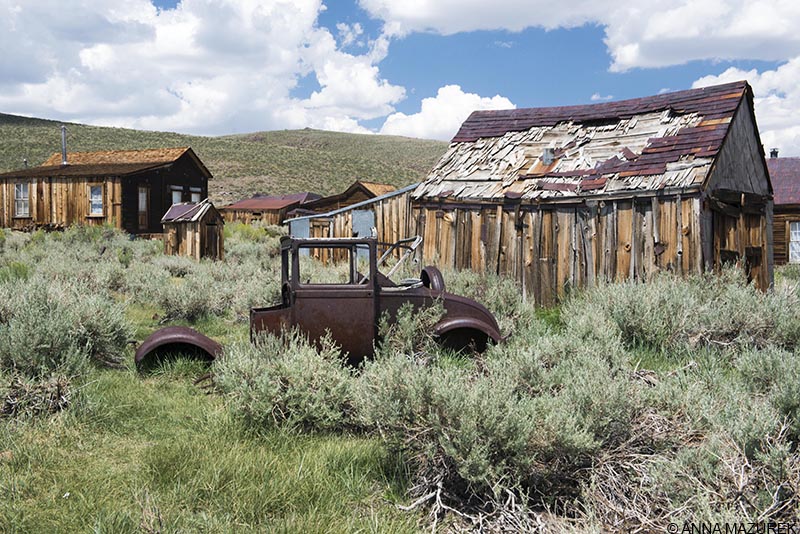
Gold was found in Bodie, California in 1859 and mining continued until 1942 when the town was abandoned. The town became a California State Park in 1962.
Ghost Town Road Trip: A Guide to Bodie, California
Let me tell you a travel secret: The most amazing places are usually the hardest to find. The ghost town of Bodie, California is one of those places. It’s literally in the middle of nowhere 106 miles south of Lake Tahoe and east of Yosemite National Park.
The former 1800s gold mining town is now a California State Park. It was preserved in a state of “arrested decay,” which means the foundations, windows and roofs were repaired and stabilized but not restored. There’s no mannequins with ill-fitted costumes or bowls of wax grapes in sight. No fake reenactments or ice cream shops. It’s refreshingly beautiful especially for someone like me who is obsessed with photographing abandoned places and ancient ruins. I squeezed in a day trip to Bodie on a trip to Tahoe when I was visiting a friend in San Francisco at the end of the summer.
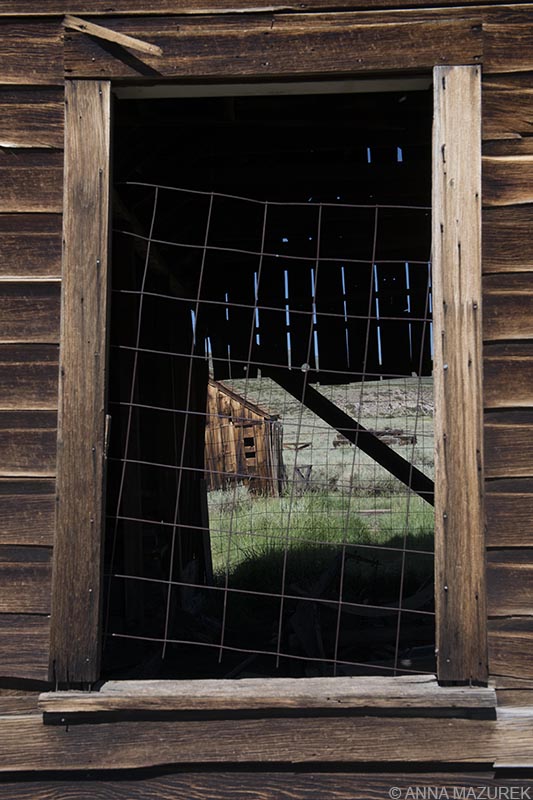
Bodie’s population ranged from 7,000 to 8,000 at its highest point.
Gold was first discovered by W.S. Bodey of New York in 1859. He died in a blizzard a few months later and never saw the town that became his namesake, which oddly enough was spelled differently. The boomtown days of Bodie started after mine collapsed in 1875 to reveal a rich body of gold ore. During the rush, the mining district included 30 different mines and nine stamp mills from 1877-1881. Unsuccessful mines started closing and the population plummeted in the early 1900s. Mining ceased in 1942. Caretakers were hired by the family of James S. Cain, Bodie’s last major landowner, to protect the town from vandals and looters. California State Parks purchased the town in 1962 to preserve the town and buildings.
Prepare to spend most of the day in Bodie. Over 50 buildings are still standing and a handful are open to the public including the 1890 Standard Mill, which is accessible only by guided tour three times a day. The town covers a large area and might feel like a bit of a workout since the town is at an altitude of 8,375 feet.
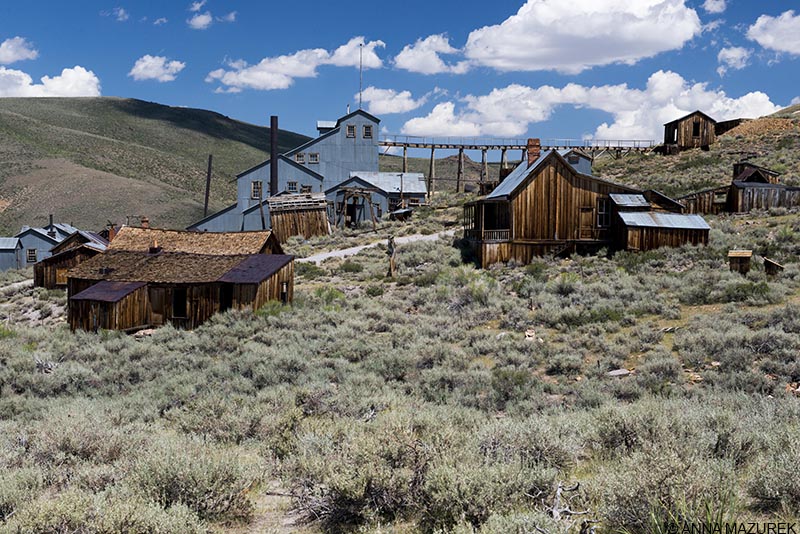
The Standard Consolidated Mining Company’s Stamp Mill was the most successful of the 30 mining companies in Bodie. It yielded $18 million over the course of 38 years. The mill is open for guided tours daily.
Once you pay the entrance fee, you are free to roam the town accept the Stamp Mill and other areas that are fenced off for safety reasons (old mine shafts). The only way to see the inside of the Stamp Mill is on a 50-minute tour, which are offered daily for $6. Tours are offered at 11 a.m., 1 p.m. and 3 p.m. from June to early September. If you’re visiting outside of that date range, ask the park museum for tour times. (I highly recommend the tour for photo opportunities.)
During the summer months, the park offers night Ghost Walks and Ghost Mill Tours featuring legends and ghost stories about the town. There are usually three different tour dates that sell out quickly.
Be sure to bring water and snacks. They do have water fountains by the restrooms, but they don’t always work.
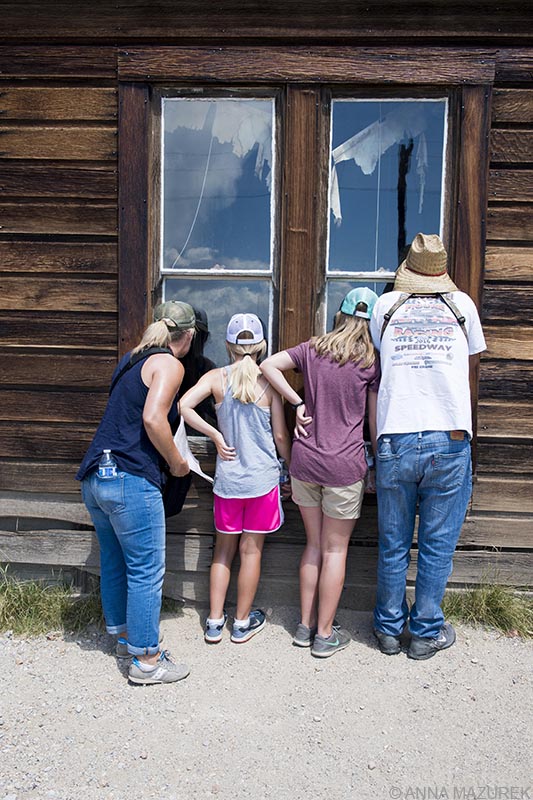
Bodie is crowded in the summer months so arrive early for the best parking and photos!
Due to the altitude (8,375 feet), it can be difficult to reach Bodie in the winter except by skis, snowmobile and snowshoes. The park is open all year.
Summer Hours (March 18th – October 31st): 9 a.m. – 6 p.m.
Winter Hours (November 1st – March 17th): 9 a.m. – 4 p.m.
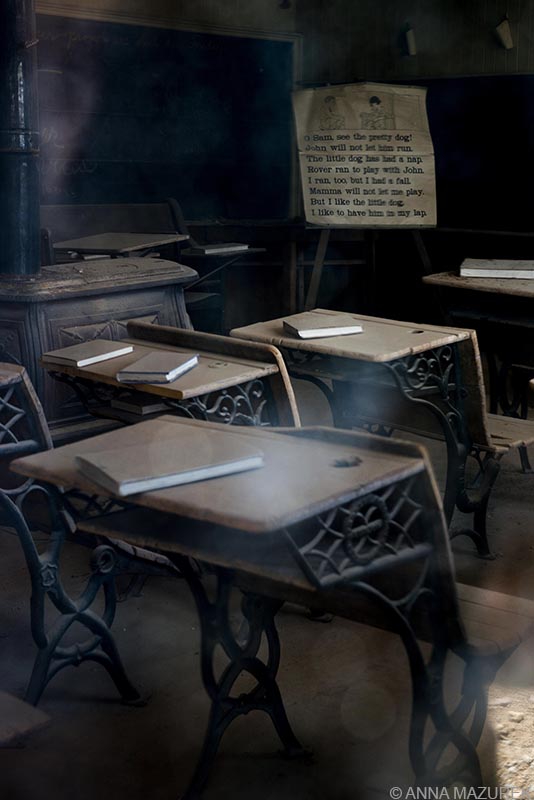
The Bon Ton Lodging House became the second schoolhouse in Bodie after the first one burned down. It closed in 1942 and had its highest enrollment of 615 from 1879-1880. This image was shot through a window, which created the semi-blurry effect.
Adults: $8 Children (age 3-17): $5 Children under age three: Free
Be sure to buy the $2 map and guide because the buildings aren’t labeled.
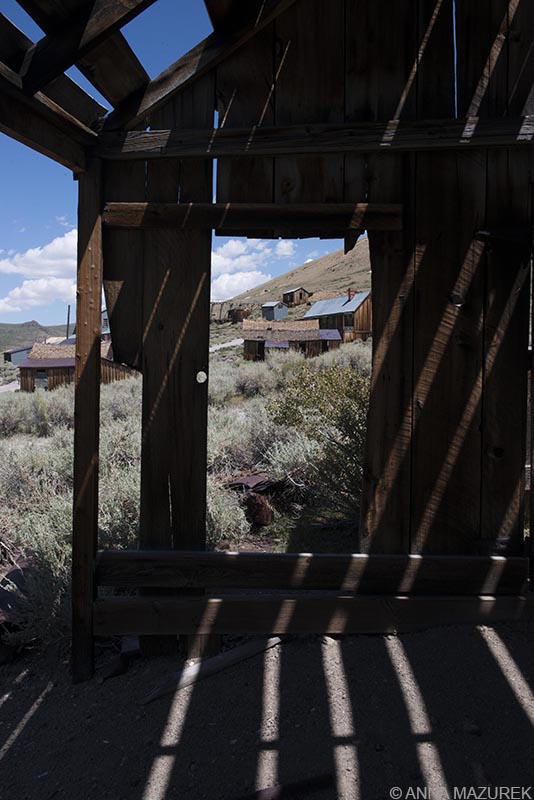
There were more than 60 saloons in the Bodie and opium dens in the Chinatown section.
How to get to Bodie, California
While the town is 106 miles southeast of Lake Tahoe, the drive takes two hours due to the tiny two-lane roads and construction at times. Cell service is spotty. Be sure to arrive early as the parking lot fills quickly. The park is 13 miles down a bumpy, dusty road from Highway 395. For more information on Bodie, visit the park website.
If you’re looking for more ghost towns to explore, check out this list of seven U.S. ghost towns that haven’t been turned into tourist traps!
__________________________________________
COMING UP NEXT
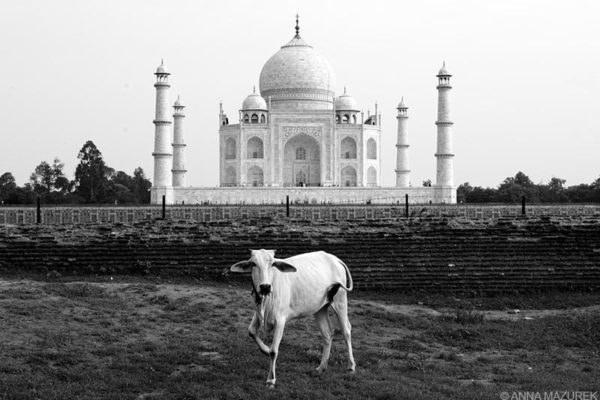
Why You Must Go to India
It is impossible it resist the charm of India. There is no place on the globe as colorful, intense, captivating, heartbreaking or complex. In my next post, I’ll dive into what makes India so amazing along with a list of must-see places in the country.
Travel Books

Recent Posts
- How I got Published in National Geographic 04/27/2024
- Guide to American Airlines Elite Status 03/30/2024
- Best Things to Do in Singapore 01/31/2024
- Best of 2023 12/28/2023
- 13 Best Travel Gifts 11/20/2023
- Travel Safety Tips: What to Pack 10/24/2023
Let's Swap TRAVEL Stories!
Sign up for my adventure updates, tips, location guides & expert interviews!
You have Successfully Subscribed!
Sign up for travel tips, location guides, expert interviews and updates from my adventures!

Bodie Ghost Town: Everything to Know About Visiting California’s Most Famous Ghost Town
* This article contains affiliate links, which help run this site at no extra cost to you.
TL;DR: We loved visiting Bodie Ghost Town to learn about gold rush history in an eerie, old, “cursed” town. This abandoned mining town of over 200 preserved buildings in Mono County is situated along an unpaved road that sometimes closes in winter. You’ll pay a small entrance fee and then be able to explore the photogenic western town and listen to free history talks.
Bodie State Historic Park is one of California’s best preserved ghost towns.
Situated on the eastern flank of the Sierra Nevada, this Old West town encapsulates California gold rush history in a state of “arrested decay.”
Below, I’ve created a complete guide to everything you need to know about visiting California’s most famous ghost town .
From Bodie State Park facts to road conditions, tour options, and the *curse of Bodie* (insert scary music), you’ll be prepped for the best Bodie experience possible after reading this article.
Note: this article contains affiliate links, which help run this site at no extra cost to you so I can keep providing free travel advice and tips.
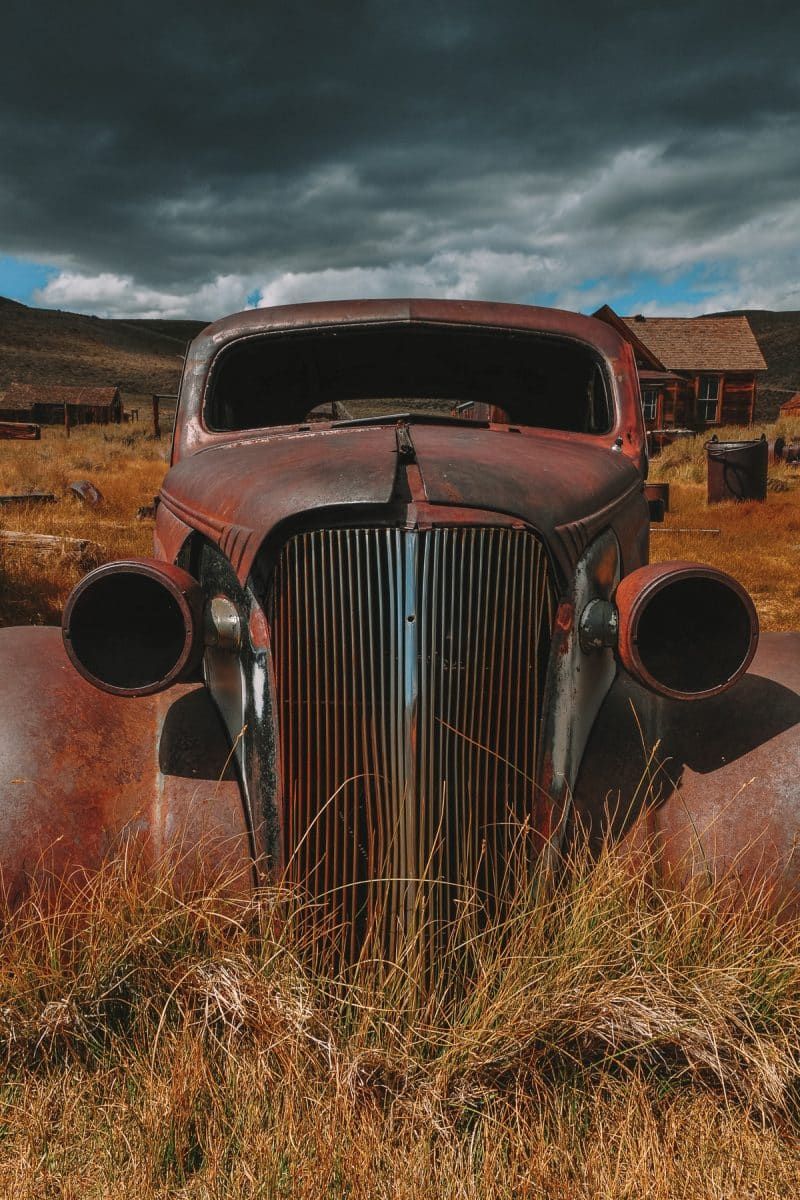
Table of Contents

Bodie State Park Practical Info
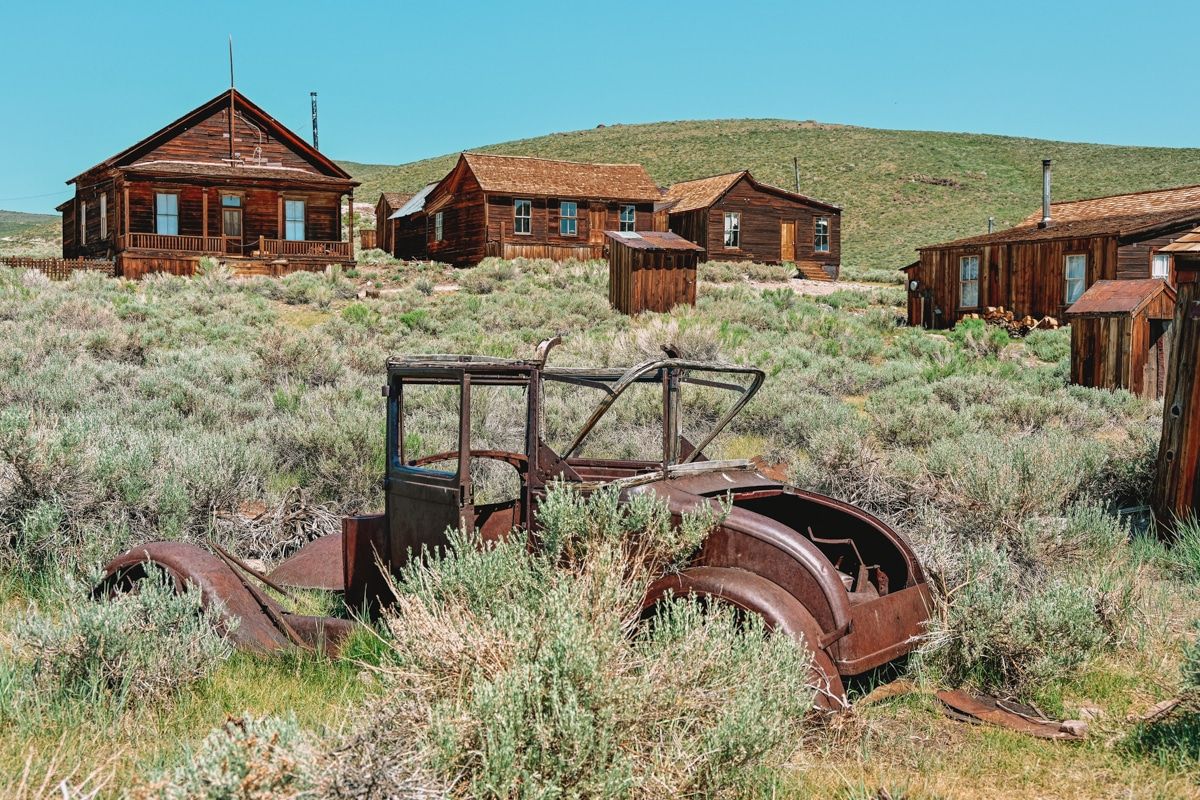
- Address: Bodie State Historic Park, CA-270, Bridgeport, CA 93517
- Year established : 1859
- Entrance fee : $8/adults and $5/kids (kids three and under are free). You can pay with a credit card at the kiosk, but if no one is there, you can place cash in the self-pay envelope in the parking lot.
- Hours : 9am-6pm (May 15-Oct 31), 9am-4pm (Nov 1-May 14)
- Amenities: Picnic area, flush toilets, museum (with bookstore). There are no commercial facilities (i.e., food and gas) at Bodie to preserve the ghost town atmosphere.
- Park website
Where is Bodie State Park in California?
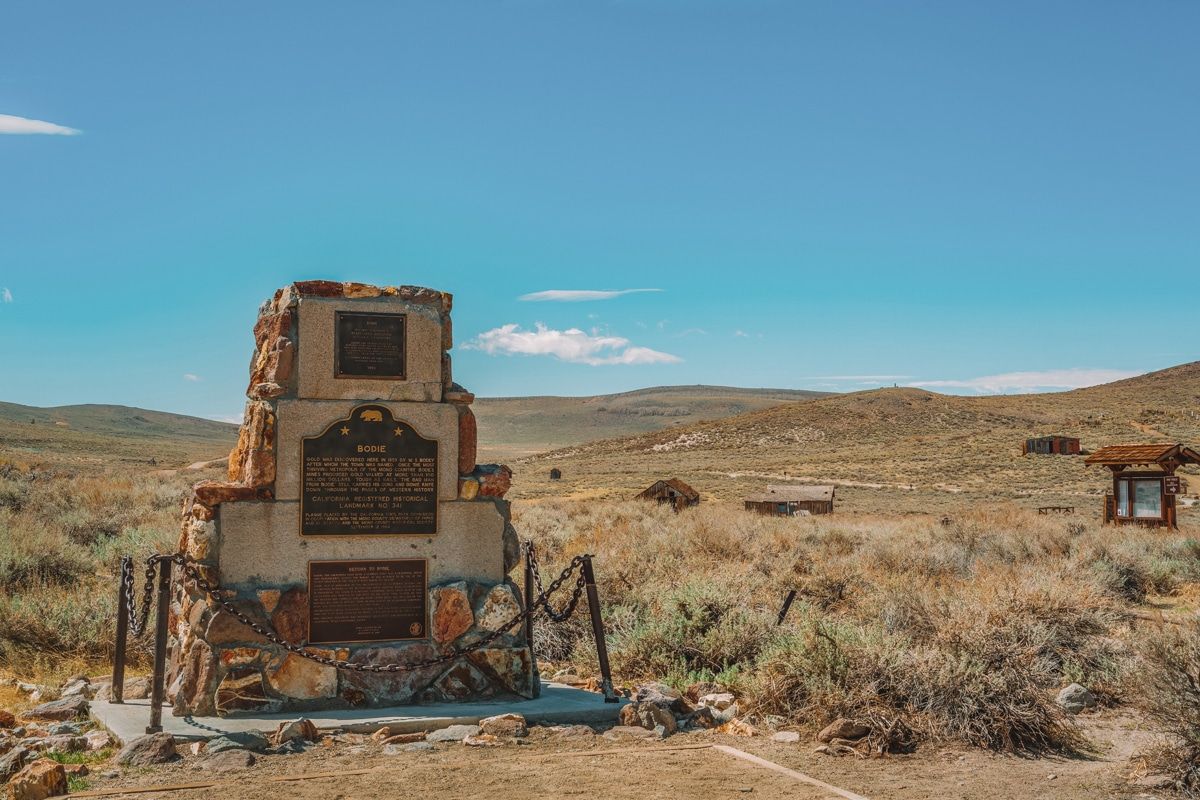
Bodie State Historic Park is located east of Highway 395 on the east side of California’s Sierra Nevada Mountains. It lies between Bridgeport and Lee Vining in Mono County.
For a broader context, Mono County is north of Death Valley , northeast of Yosemite National Park , and south of Lake Tahoe .
How to Get to Bodie State Historic Park
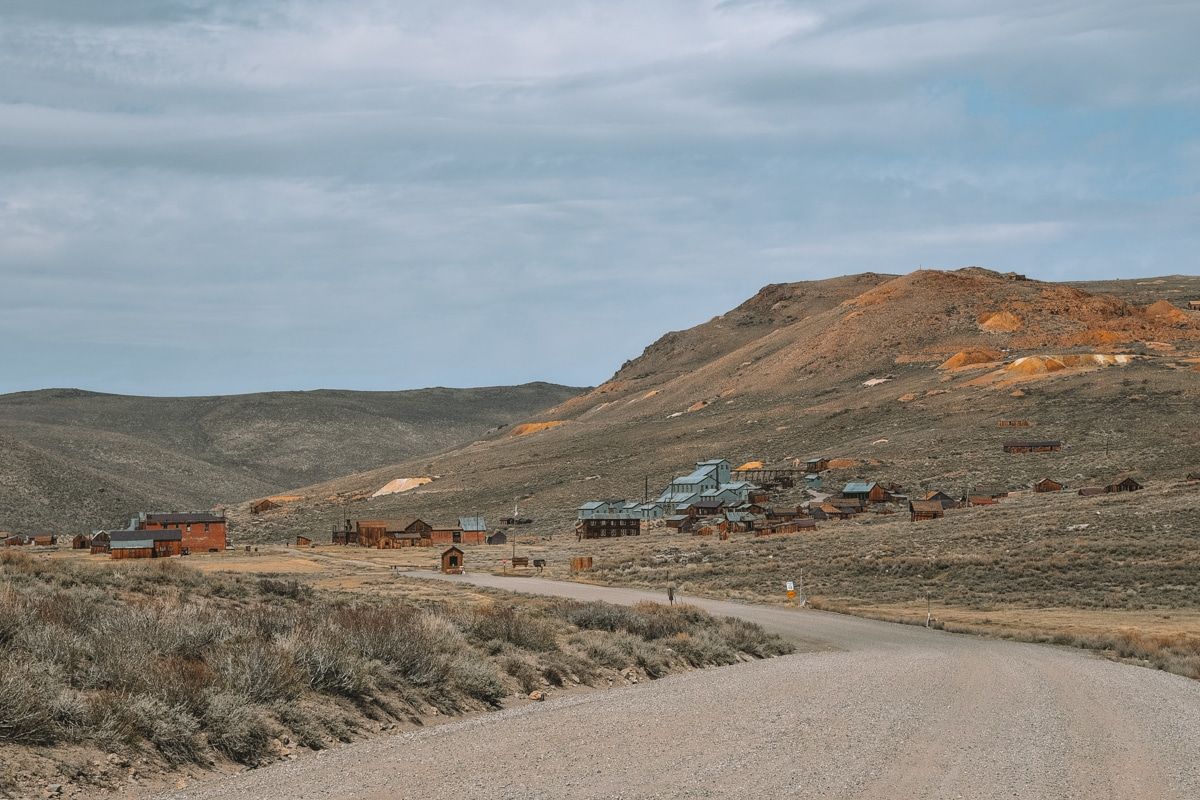
Bodie ghost town is 13 miles down state route CA-270, off Highway 395. All but the last three miles are paved roads.
Note that these last three miles can be difficult at times, especially after rain or snow. It can even become unpassable in winter and may close down.
That said, it’s perfectly fine for any type of car during most of the summer.
From San Francisco : Take I-580 E to CA-120 E to CA 108E. Go south on US-395 before taking CA-270 E to Bodie.
From Sacramento : Take CA-99 S to US-50E and then to CA-89 S before getting onto US-395 and then CA-270 E to Bodie.
From Yosemite National Park : Take US-120 E to Lee Vining and turn north on US-395 before turning east onto CA-270 E to Bodie.
From Death Valley: Take CA-190 W to CA-136 N towards Lone Pine. Take US-395 N past Mammoth Lakes and Lee Vining and turn east onto CA-270 E to Bodie.
Things to See and Do in Bodie State Historic Park
Methodist church.
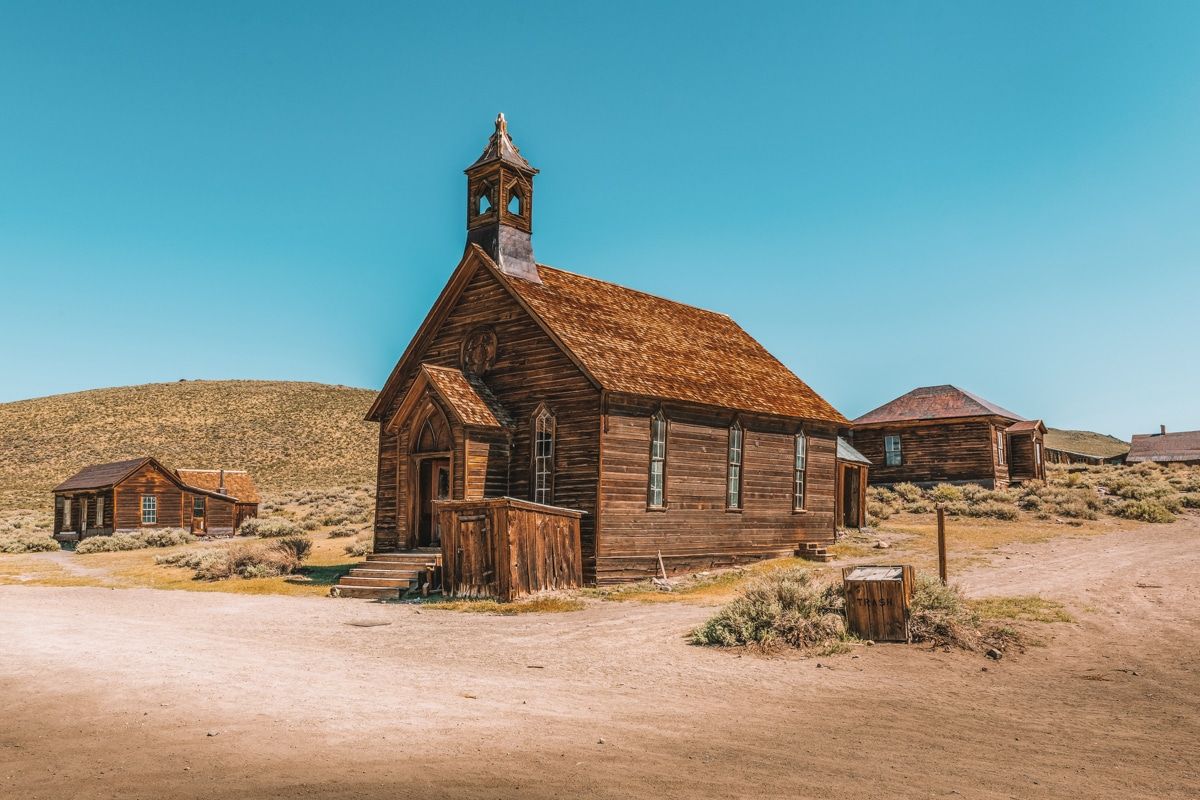
In my opinion, the Methodist church in Bodie ghost town is one of the better-preserved buildings.
Built in 1882, the Methodist church survived several fires that consumed the Catholic church.
While you’re there, ask a ranger about the two clergymen who lived in Bodie ghost town: Reverend Hinkle and Father Cassin.
J.S. Cain House
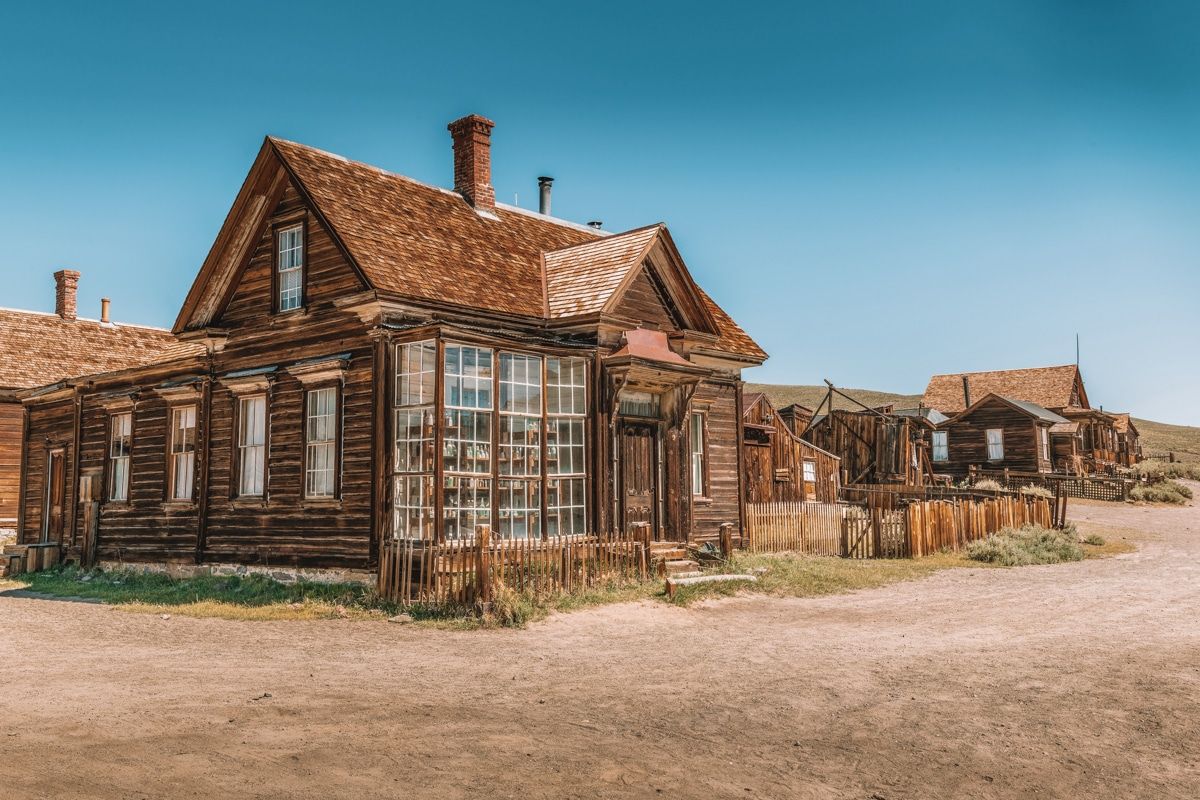
James S. Cain was a prominent businessman in Bodie. His abandoned house sits at the corner of Park and Green Streets and is supposedly haunted by the ghost of a Chinese maid.
Park rangers still live in the house (that would be a big no thanks from me), and they report that while the ghost doesn’t like adults, she loves children.
Swazey Hotel
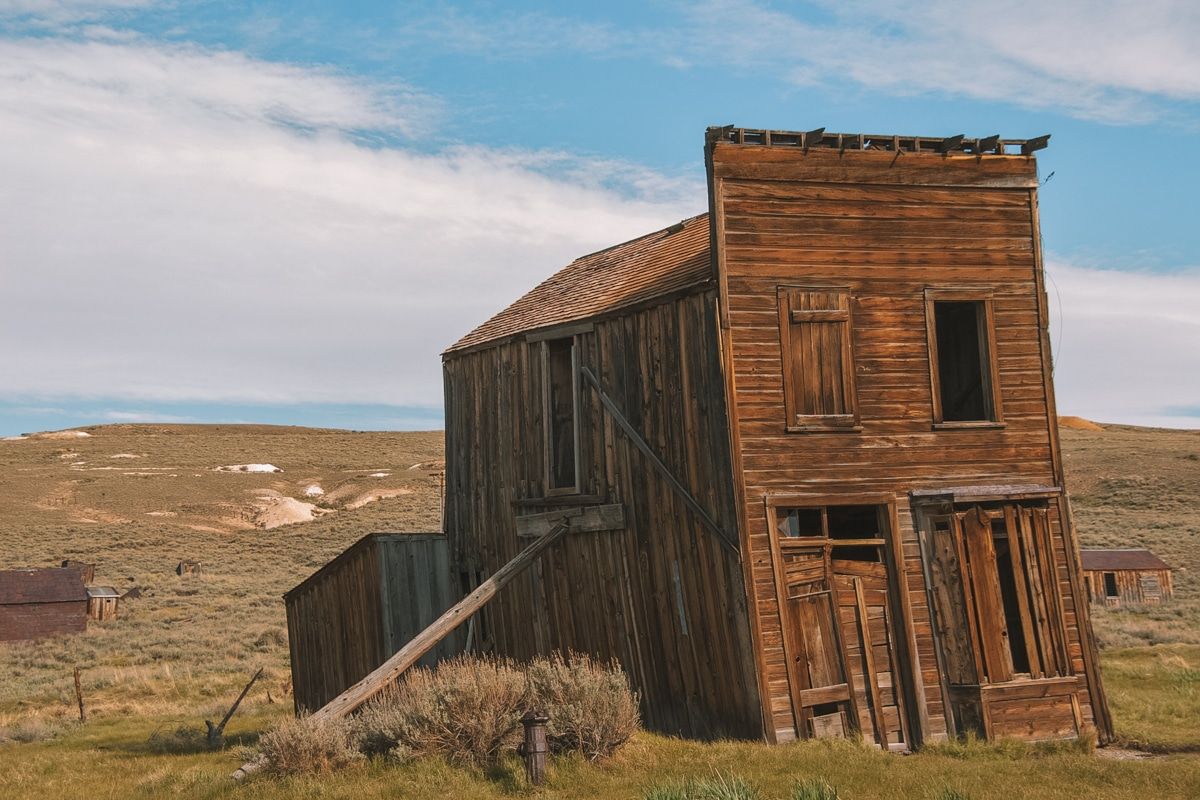
The Swazey Hotel is so picturesque because it’s slanted. Miners constructed these buildings in a hurry, after all.
There are some wooden supports on one side to keep it propped up. Over the years, this building has housed a clothing store, casino, and the Swazey.
General Store
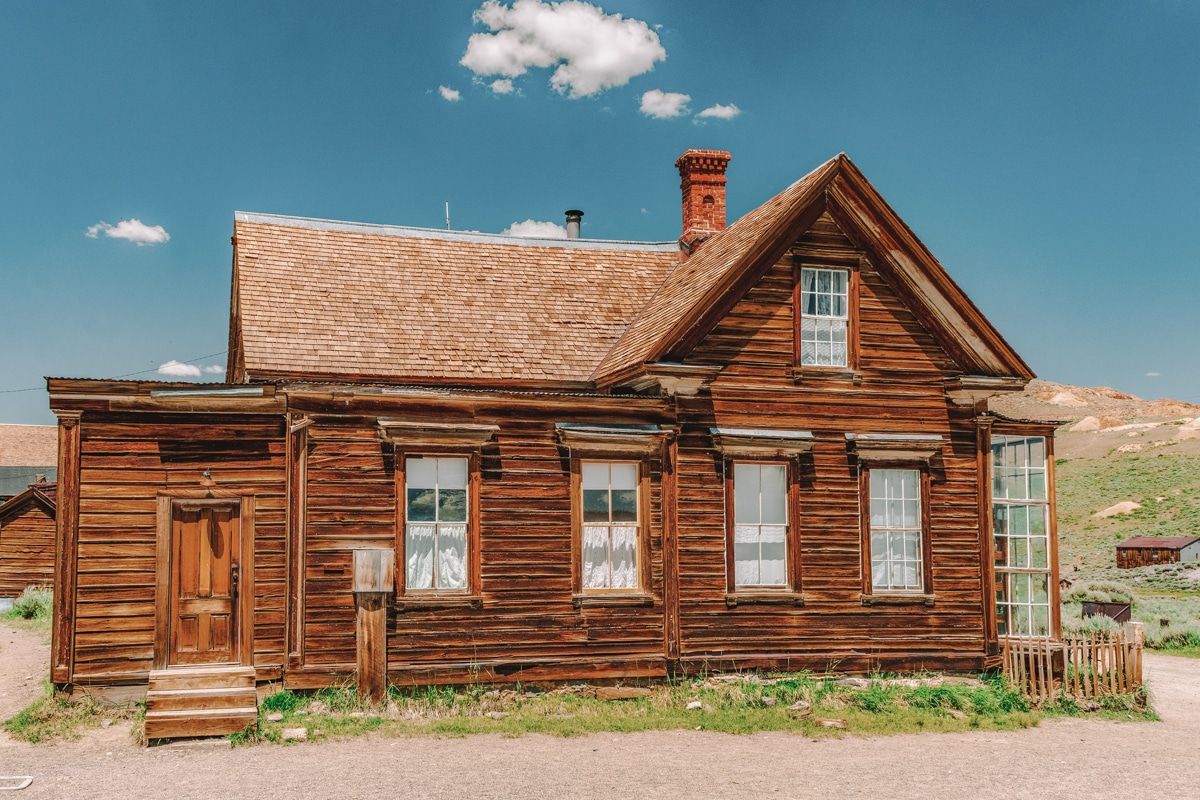
One of my favorite buildings to look inside is the general store because the goods still line the shelves!
You can see wooden buckets of sweets, canned goods, and the old cash register ready for business.
Dechambeau Hotel and I.O.O.F.
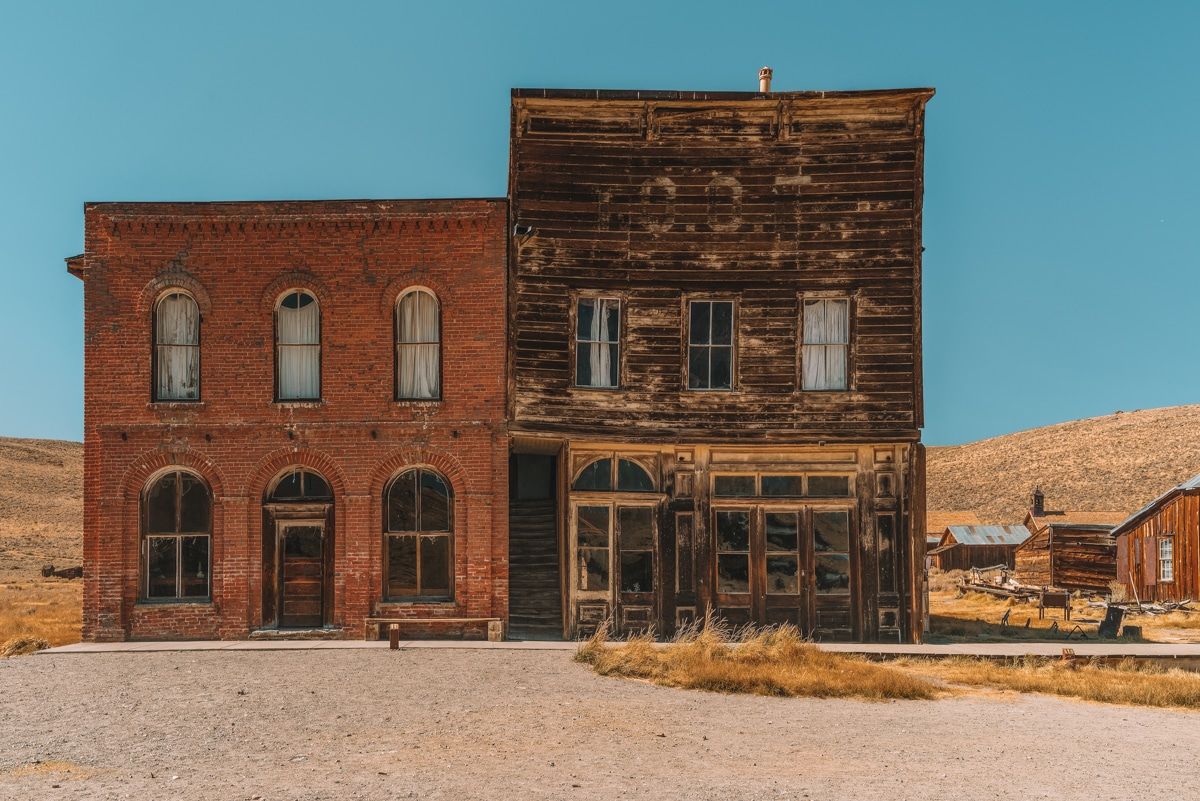
On your walk through this California ghost town, you’re bound to notice the pink brick building next to a wooden structure standing by itself.
The brick building was the Dechambeau Hotel, which featured the Bodie Cafe–one of the last businesses in operation before the town closed. Note: some sources list the pink brick building as the old post office as well.
To the right of the brick building is the I.O.O.F. Building, which stands for Independent Order of Odd Fellows.
If you squint, you can still see those letters etched above the windows. This building served as a gym and meeting hall.
Firefighting Station
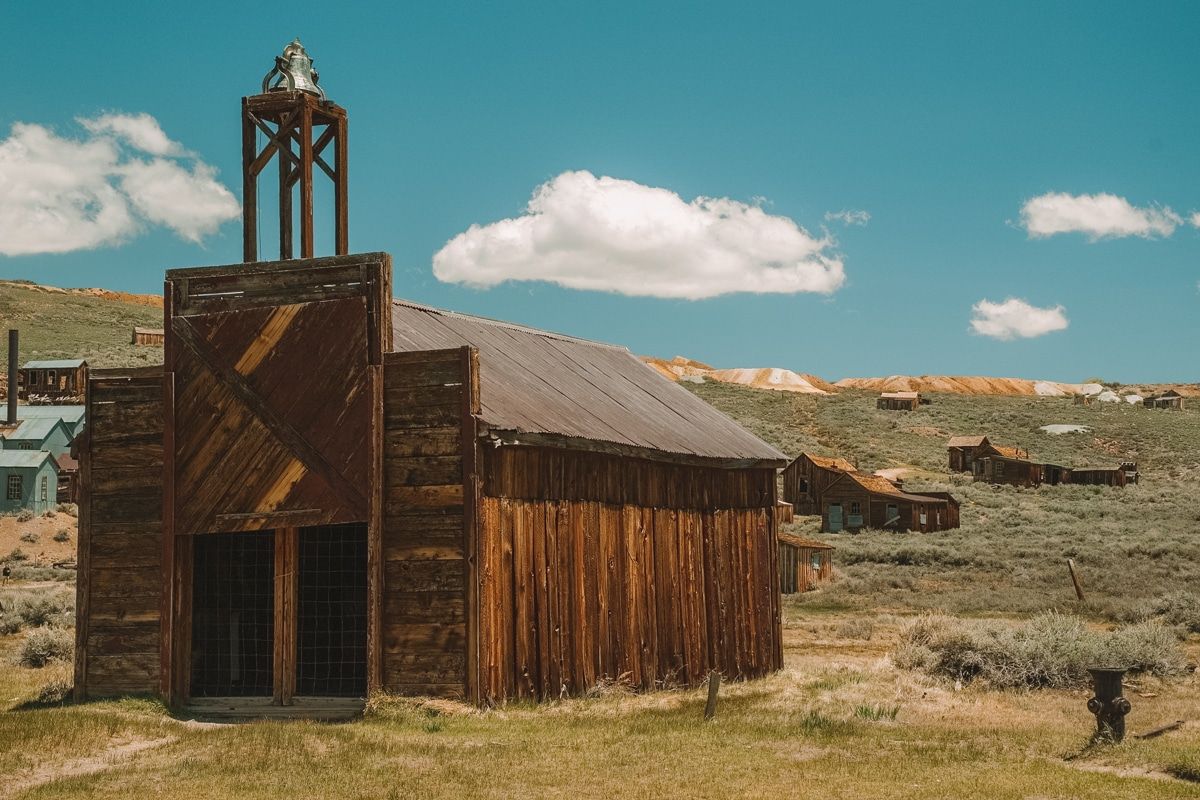
You can still see the old, horse-drawn firefighting wagons displayed in Bodie.
The town used to host an annual “Firefighter’s Ball” at the Union hall to raise money for uniforms and equipment for the firefighters.
Bodie Morgue
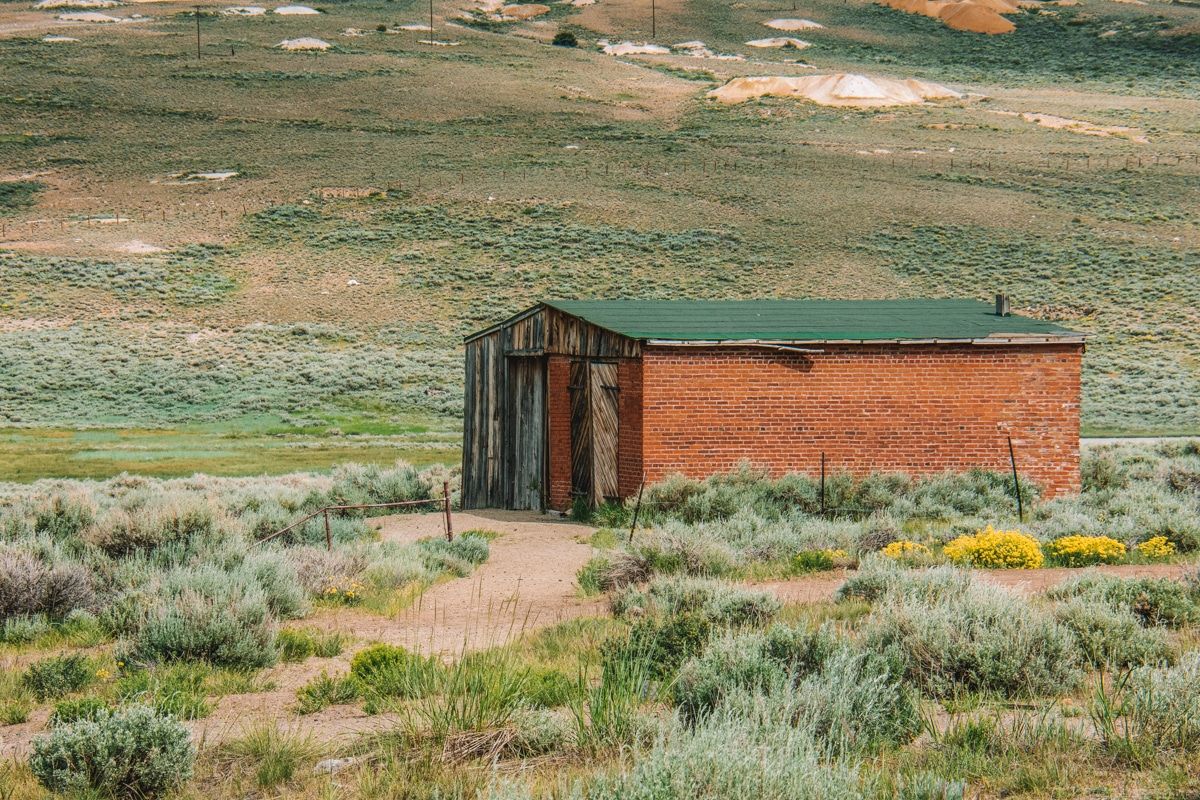
You haven’t really visited Bodie until you’ve checked out the morgue.
The Bodie morgue was built in 1910 and purportedly was originally a photography studio, hence the bright interior paint and fancy wallpaper.
Today, you’ll see dilapidated coffins strewn throughout the building.
Henry Ward was the undertaker and the cabinet maker in town. A park ranger at Bodie made this video inside the morgue–it starts to get good around 2:50.
Standard Mine and Mill
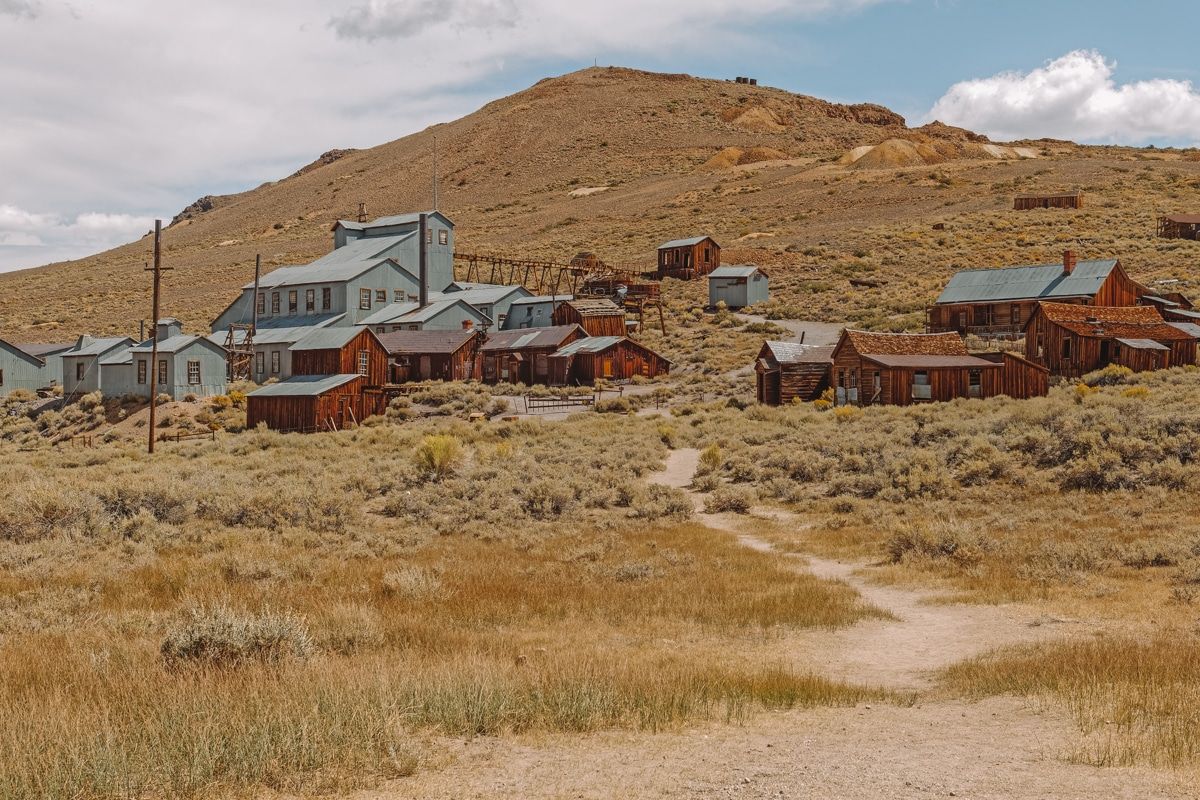
No trip to a gold mining town in California is complete without a stop at the gold mine and mill that made the town, right?
Today, you can take a tour of the mill (only available between May and October.)
Take a Tour

The Bodie Foundation, a non-profit dedicated to preserving Bodie, offers many fun tours.
Free History Talks
These are held most days at 10 am and 4 pm. Double-check at the entrance kiosk when you arrive.
Stamp Mill Tour
$6/person, most days at 11 am, 1 pm, and 3 pm.
Private Town Tours
These are pricey. It’s a minimum of $200 for groups from 1-4, and $50 for each additional person. The tour is two hours long.
Twilight Tours
From 5-7 pm May through September, you can get an after-hours tour of this far west town.
Ghost Walks
You can take a nighttime Bodie Ghost Walk tour for three nights only. The tickets go quickly, and the pre-sale begins in March (I’m totes going to be looking out for these next year!).
There’s an astronomy program, too, once the ghost walking is over.
Practice Photography
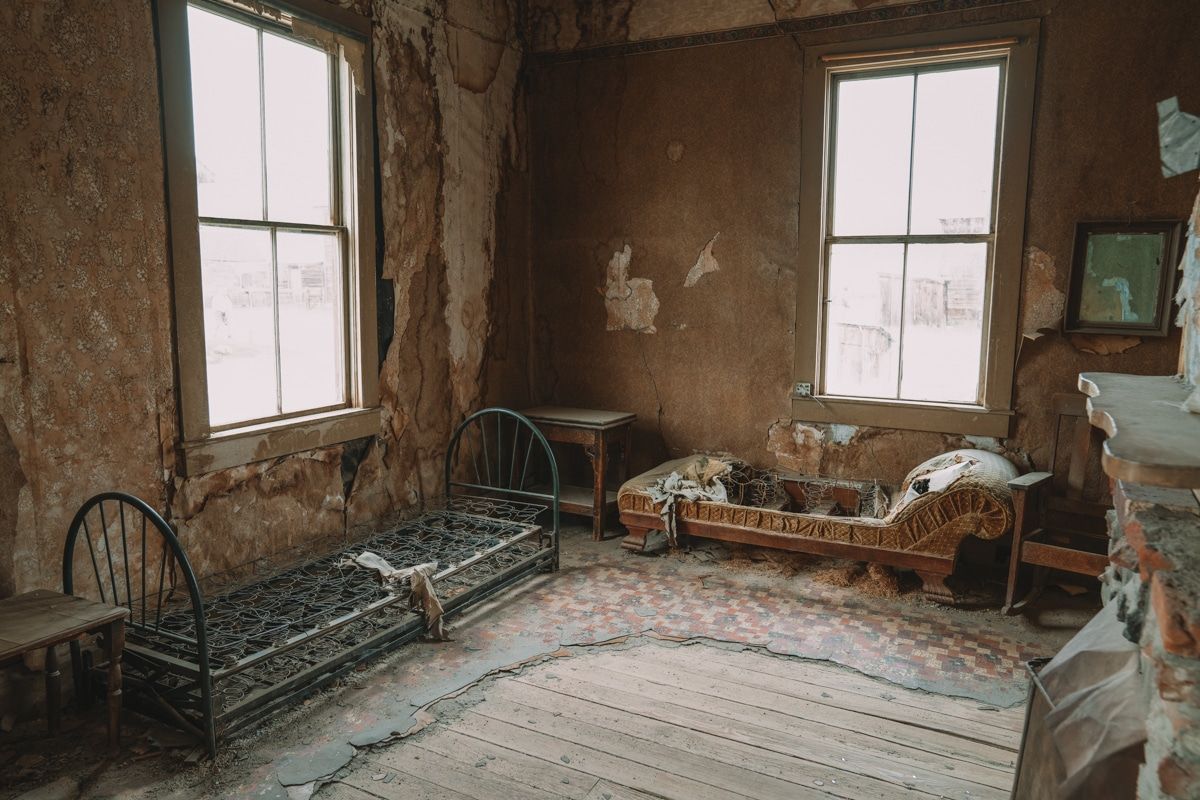
Ghost towns provide a natural backdrop for photography. Check out Bodie Foundation’s workshops if you’re gung-ho about Bodie photography.
Photography Workshops
These workshops allow you to access the interior of some buildings (with an escort, of course). The proceeds from these workshops directly help Bodie preservation projects.
Where to Stay Near Bodie Ghost Town
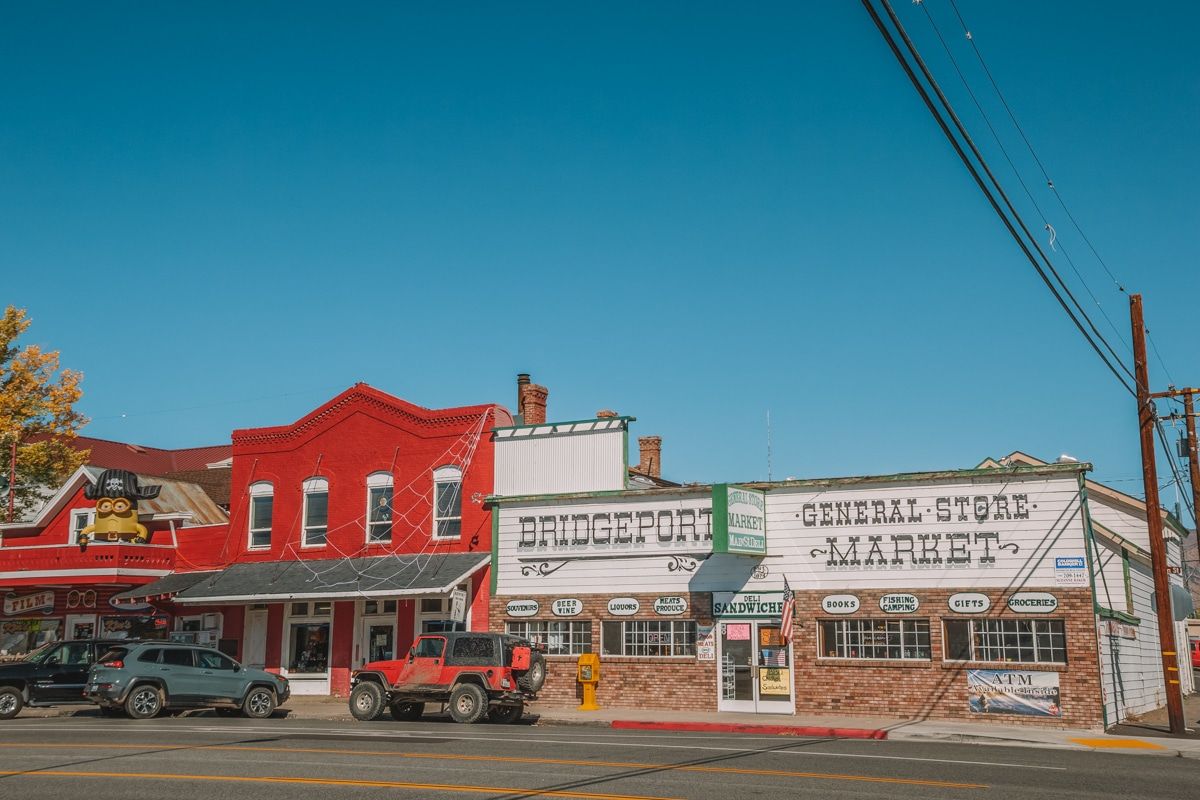
There isn’t a campground in Bodie State Park ghost town, but there are many camping options or hotels near Bodie.
Mammoth Lakes Condo (1 hr 15 mins): Mammoth Lakes is a charming little mountain town south of Bodie ghost town on Highway 395. Mammoth Lakes is close to June Lake, another popular tourist destination.
Virginia Creek Settlement (33 mins): Virginia Creek Settlement in Bridgeport, CA offers rustic accommodations and an Italian restaurant on-site, all within 30 minutes of the ghost town of Bodie.
Lundy Canyon Campground (42 mins): Lundy Canyon Campground, north of Lee Vining, CA, off Highway 395, offers the best camping near Bodie State Park.
History of Bodie State Park
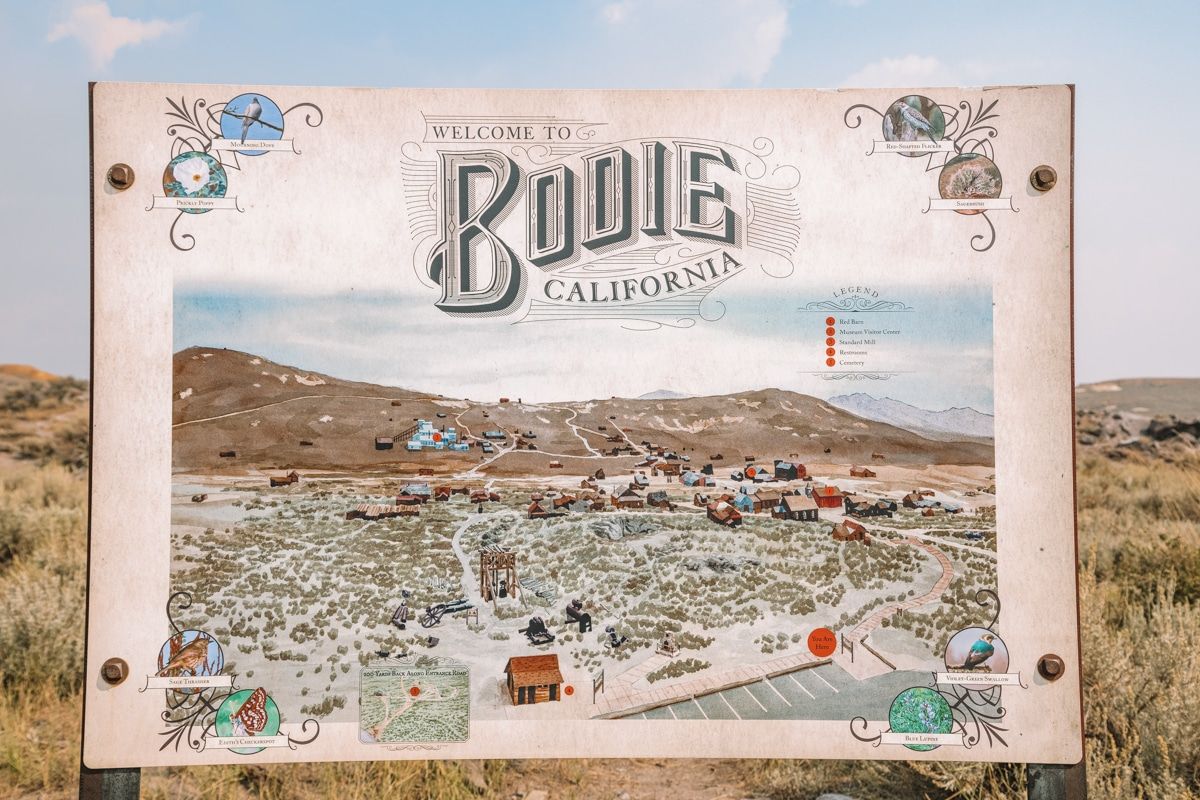
The land currently known as Bodie State Historic Park was the traditional homeland of the Western Mono, Washoe, and Northern Paiute tribes.
Today, people visit to walk the deserted streets of this abandoned California mining town known as Bodie.
Waterman S. Body discovered gold in the hills north of Lee Vining in 1859. Although he died before he could earn a fortune from it, the location of the gold didn’t remain a secret.
In the 1870s, the nearby Bunker Hill Mine hit pay dirt and was profitable for the next 25 years.
By 1879, the small town had boomed to a population of 10,000. Like many Wild West towns in the gold rush era, Bodie developed a reputation for lawlessness.
At its peak, Bodie had over 60 saloons, gambling halls, opium dens, three breweries, and a red light district–like an Old West version of Las Vegas.
Streetfights and murders were, apparently, an almost daily occurrence here. Despite the danger, several tamer businesses also existed, including a post office, two churches, and a school.
The gold and silver couldn’t last forever, however. By 1882, the town’s population had declined significantly.
By 1886, only 1,500 residents remained and a massive fire in 1892 pretty well ended Bodie’s productive history.
By 1942, the last residents left this Old West town for good.
In 1962, Bodie ghost town was designated a state historic park and a National Historic Landmark.
Park managers have chosen to leave this national historic site in a “state of arrested decay,” which means they’re allowing Bodie to remain as is without any major renovations.
Bodie State Park Weather & Best Time to Visit
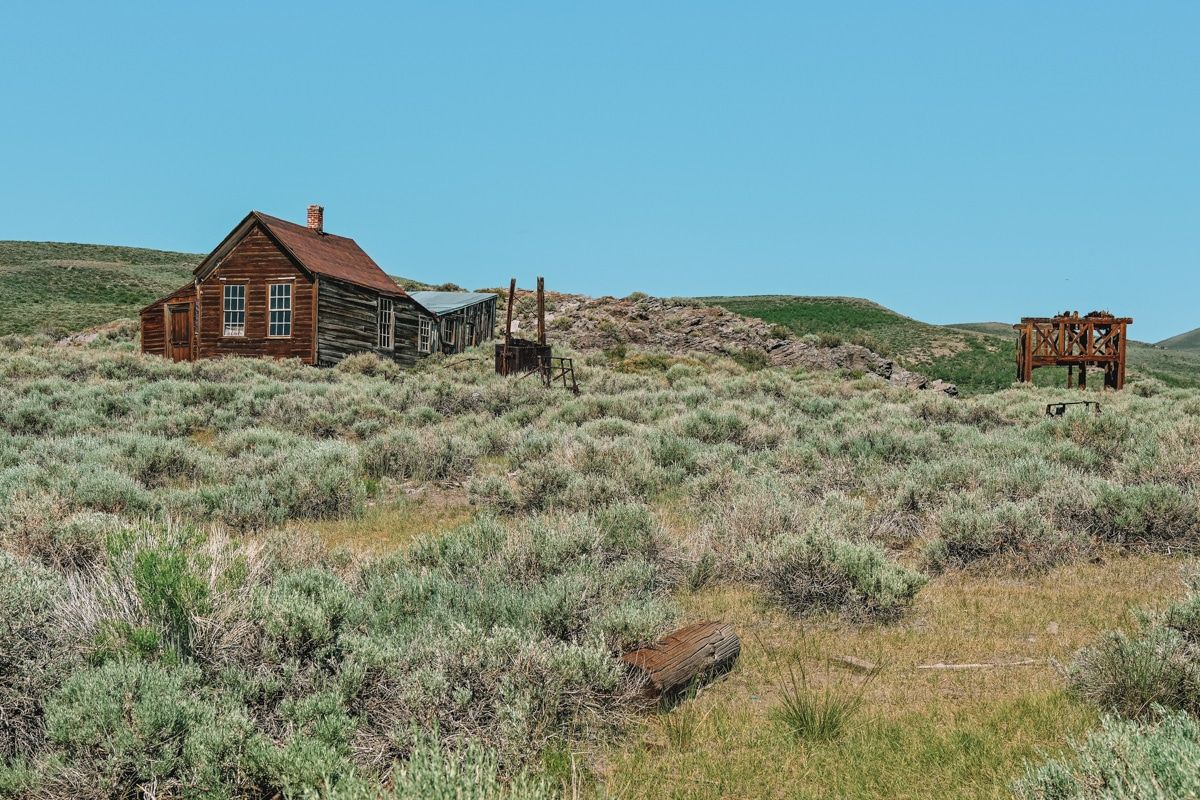
The best time to visit Bodie State Park is in the late spring, summer, and early fall.
Bodie State Park’s elevation is relatively high (8,375 ft), so the winter can be snowy with an impassible dirt road.
Tips for Visiting Bodie State Historic Park
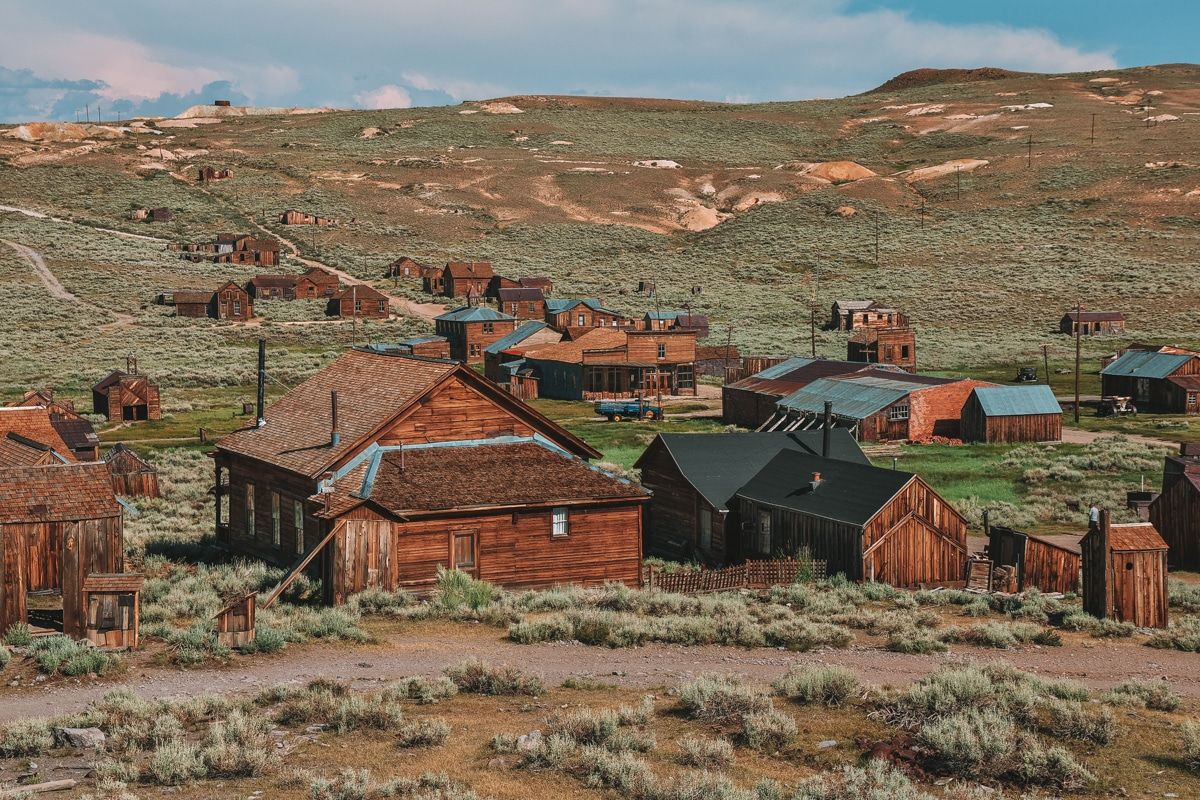
Check Road Conditions in Winter
If you’re visiting in winter, check the Bodie State Historic Park website and the Caltrans Road Information website (for SR 270), or call the Mono County Information Office at 800-845-7922.
State Route 270 closes in winter when there’s enough snow accumulation.
Don’t Take ANYTHING
Theft has been a problem at Bodie for decades. Bodie ghost town is a historic site, so please don’t collect any informal souvenirs while walking the grounds.
Not only does this diminish the park’s historical value, but you will be cursed.
Seriously, the curse of Bodie says that if you take anything, you’ll bring misfortune upon yourself.
Don’t take my word for it. Read through the hundreds of remorseful letters and packages sent back to Bodie over the years.
“You can have these godforsaken rocks back. I’ve never had so much rotten luck in my life. Please forgive me for ever testing the curse of Bodie.” –2004 Letter to Bodie
Sadly, even if you mail your stolen item back, park staff can’t just “put it back.”
They have no idea where you took it from, so that item will sit in a closet from then on, and no one will be able to enjoy seeing it in context.
Check the Entrance Hours
Unlike many California state parks , which are usually open 24/7, you can’t visit Bodie ghost town at night.
The reason is for both the park and public protection. The summer hours (May 14-October 31) are 9 am-6 pm, and the winter hours (Nov 1-May 14) are 9 am-4 pm.
Fun Facts About Bodie State Park
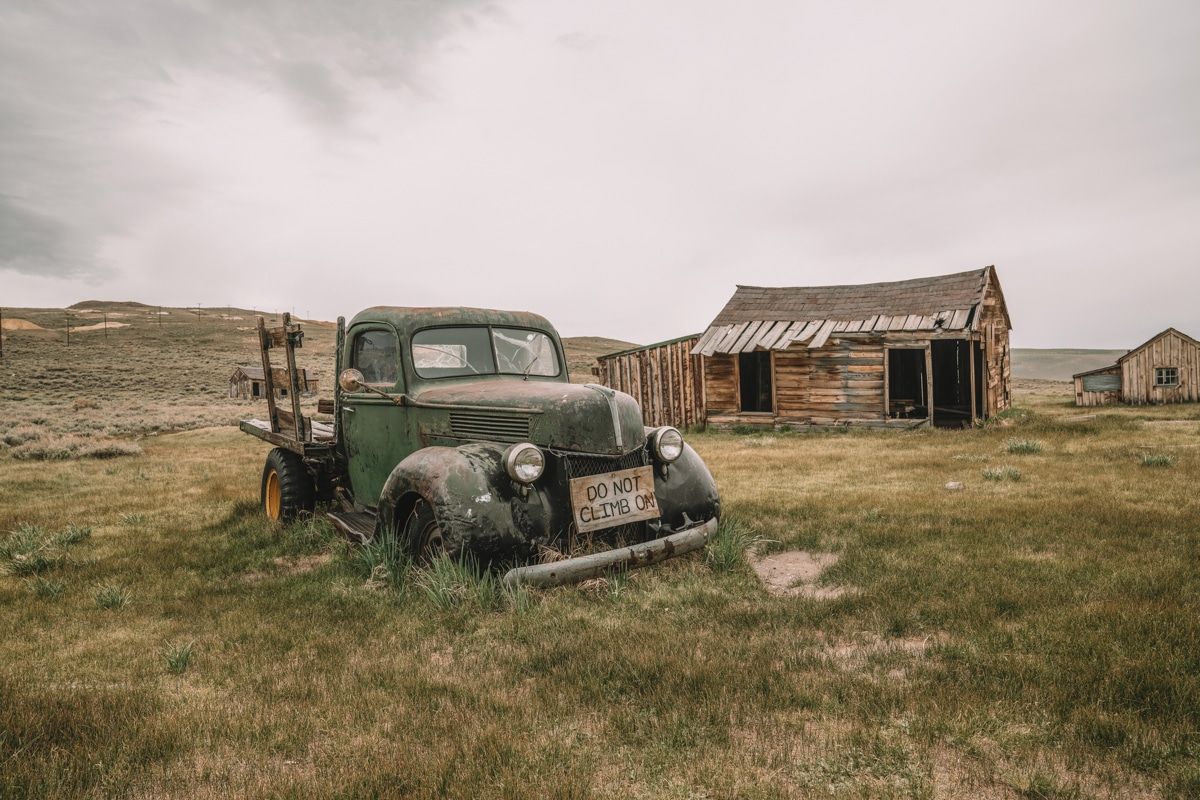
- The town of Bodie mined more than 38 million dollars in gold and silver.
- There are almost 200 abandoned buildings in Bodie ghost town.
- Many Chinese immigrants worked in Bodie at its peak.
- Several buildings on Main Street were moved there from other parts after the July 1892 fire.
- A two-year-old boy playing with matches started the 1932 fire. This fire destroyed 95% of the buildings in Bodie.
- Bodie’s building interiors remain intact, with shelves still stacked with goods and furniture.
FAQs About Bodie State Historic Park
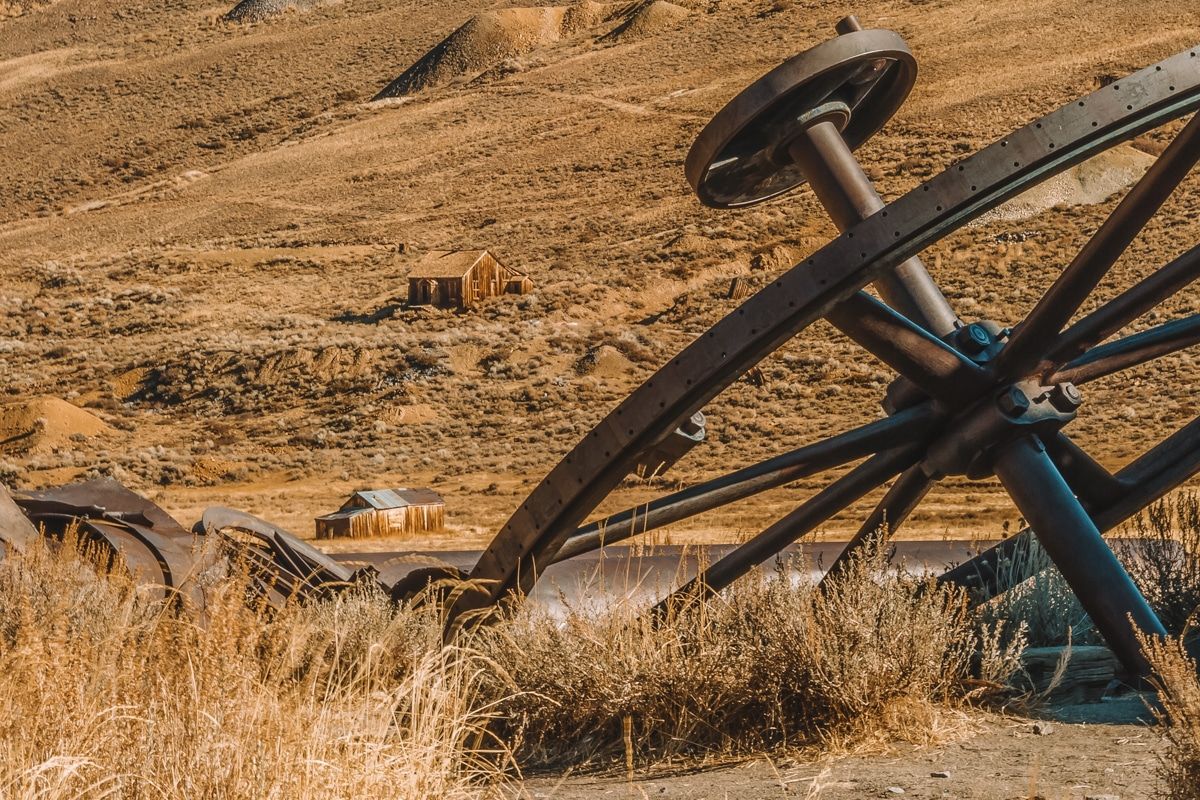
Why is Bodie State Park so cold?
Bodie State Park is so cold because of its high elevation. In Northern California, at an elevation of more than 8,300 feet, it can get very chilly. So, bring a jacket when you visit.
Is Bodie worth visiting?
Absolutely! The small town of Bodie, California is the best-preserved ghost town of the California Gold Rush .
With nearly 200 abandoned buildings still standing in a state of arrested decay, you’ll get a vivid sense of what the gold rush in California was like.
Is the road to Bodie paved or do you need a 4WD?
Bodie ghost town is 13 miles down State Route 270, east of US-395. All but the last three miles are paved roads, and you usually don’t need 4WD.
With that said during the winter season and the days after rainstorms can be difficult to drive the road to Bodie. Always stay on designated roads.
What is the curse of Bodie?
This gold mining ghost town is one of the only California state parks that comes with a curse.
As it goes, anyone who takes anything–even a rock–from the far west town of Bodie will experience bad luck, illness, and mysterious accidents.
About once a week, Bodie State Park receives a remorseful letter from a “cursed” person who foolishly takes something from the site.
Who founded Bodie?
Bodie, CA was founded by Waterman S. Body in 1859 after discovering gold in the hills north of Mono Lake. The town, Bodie, is a slight misspelling of Mr. Body’s actual name.
Why did Bodie, California become abandoned?
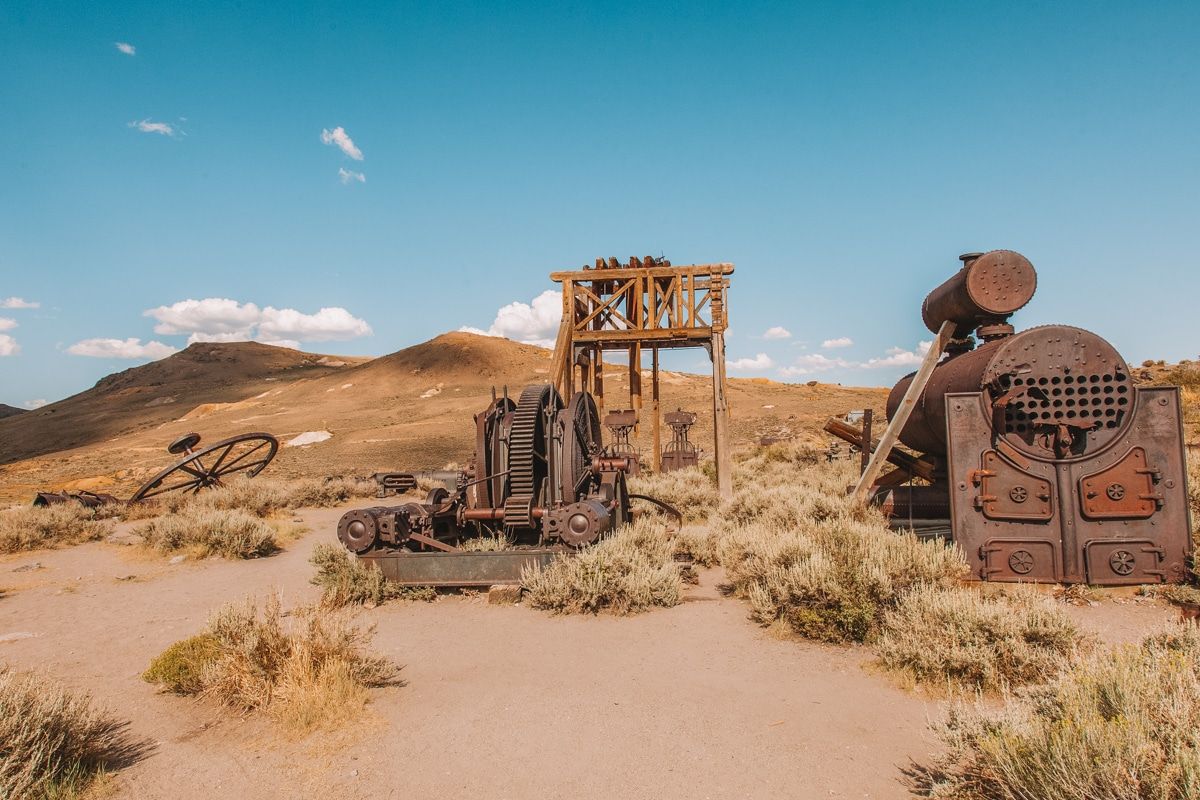
Bodie, California became abandoned due to a combination of factors. The primary reason is that the gold and silver in the Bodie Hills dried up.
Second, two massive fires damaged significant parts of the town in 1892 and 1932.
When did Bodie, California become a ghost town?
Bodie, California became a ghost town in 1942 when the last residents left the Old West town for good.
Is Bodie, California haunted?
The Wild West ghost town of Bodie is definitely haunted. I mean, if you believe in that kind of thing.
In its heyday, street fights and murders were almost daily, so it’s not lacking angry spirit material. There have been numerous ghost sightings in many of Bodie’s buildings.
Is Bodie Ghost Town open?
Bodie ghost town is open all year. However, in the winter months, the road to Bodie may close.
In winter, you can access Bodie State Historic Park via snowshoe or snowmobile.
How much time do you recommend visiting Bodie Ghost Town?
There’s a lot to see in this small town! Plan to spend at least half a day exploring Bodie.
What’s there to do near Bodie, California?
The Old West town of Bodie is just east of Yosemite National Park, south of Lake Tahoe, and north of Mammoth Lakes, so there is *plenty* to do around Bodie ghost town.
ABOUT THE AUTHOR

Meredith Dennis
Meredith is a biologist and writer based in California’s Sierra Nevada. She has lived in 6 states as a biologist, so her intel on hiking and camping is *chef’s kiss* next level. One of her earliest camping memories was being too scared to find a bathroom at night on a family camping trip. Thankfully, she’s come a long way since then and she can help you get there too!
Planning a Sierra Nevada vacation? Check out these related articles below!
Best Hot Springs in & Near the Mammoth Lakes Area
Best California Hot Springs to Soak In
Lake Tahoe Camping Guide
Best Lake Tahoe Hikes
Where to Find the Best Camping in Kings Canyon National Park
Sequoia National Park Camping
Best Hikes in Sequoia National Park & Kings Canyon
Best Campgrounds in Yosemite National Park
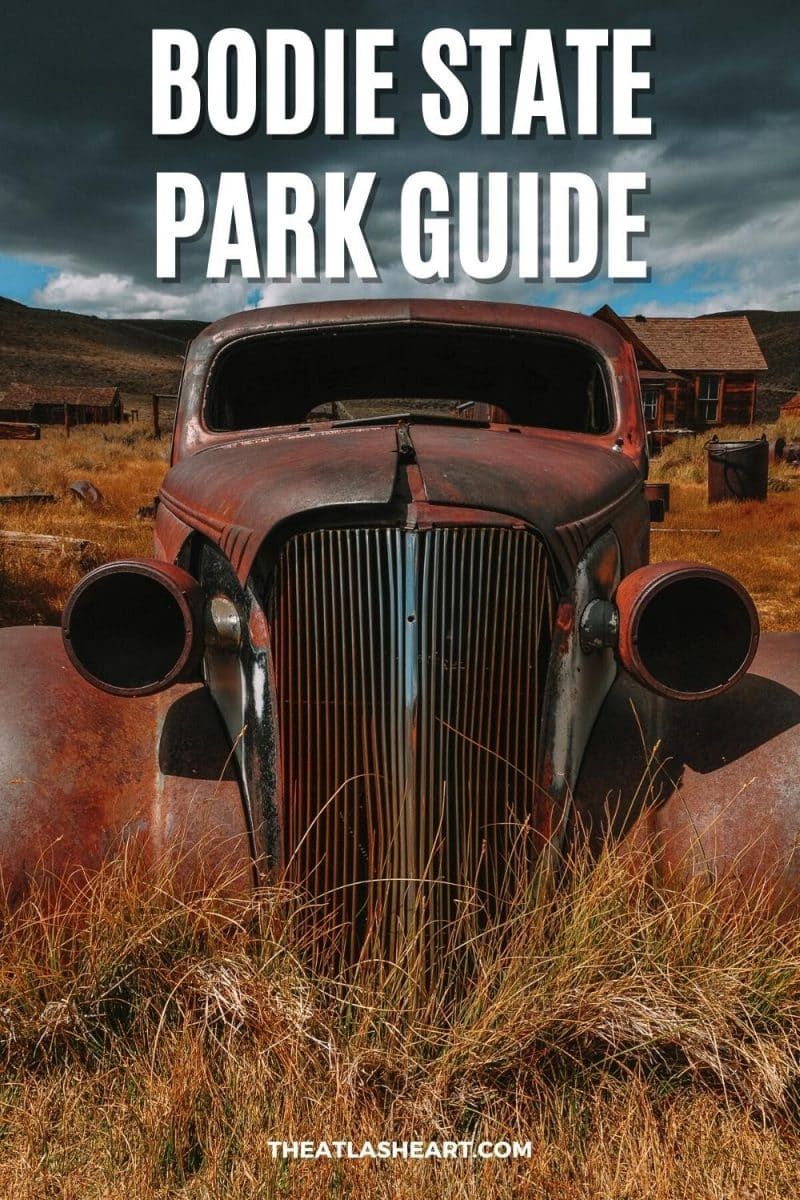
Pin this image for future reference
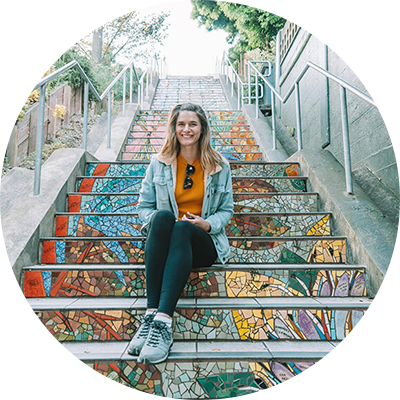
Hi, I'm Mimi! I'm an outdoorsy Californian who has spent over 28 years immersed in the incredible natural beauty that California has to offer. My goal is to inspire others to get out and find their next adventure in California. Whether it’s escaping to an alpine lake in the Sierras, finding peace among the giant redwoods, or road tripping down the PCH, there’s always more to explore in this beautiful state.
2 thoughts on “Bodie Ghost Town: Everything to Know About Visiting California’s Most Famous Ghost Town”
Is bike riding inside bodie ok?
Very well written and informative. Thank you. My friend is coming to visit from Florida in August and I wanted/will plan a day trip from Reno, Nevada for us. It sounds like a terrific place for us to visit. Mom wants to come along as well😃
Leave a Comment Cancel reply

The Atlas Heart is a California travel website dedicated to showing you the best of the Golden State from a local perspective.
As an Amazon Associate, I earn from qualifying purchases.
©2024 The Atlas Heart
How to have the ultimate road trip to Bodie, a ghost town in California
Can you drive to bodie, a ghost town in california, how long is the road to bodie in california, why did bodie become a ghost town.
Is the road to Bodie ghost town open?
Jump to navigation

Error message
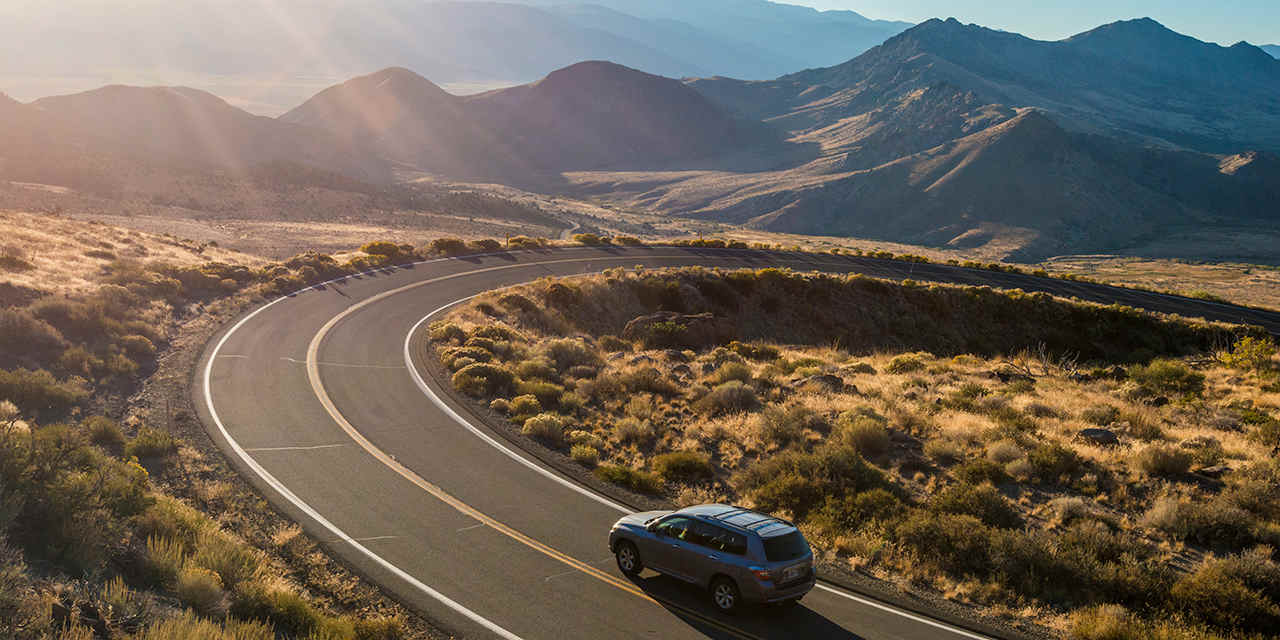
Time to hit the road and explore the Golden State
Endless sunshine, amazing cities, best-in-class theme parks, incredible natural treasures—no matter what you want to do and see on your next vacation, California has it.
But here's the best part: California has all the iconic destinations you've dreamed of visiting, plus a countless number of incredible off-the-beaten-track experiences. With our exclusive trip itineraries, you can visit bucket-list landmarks like Yosemite, then follow a wine road or visit a craft brewery. Top theme parks, secret beaches, city finds—they’re all here in easy-to-follow road trips that visit every corner of the state. So start dreaming about your next California vacation—and dream big.
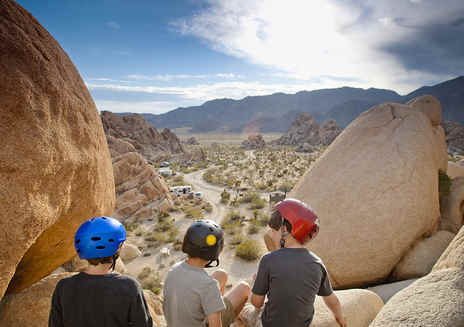
Kids always want something to bring home from a holiday. ...
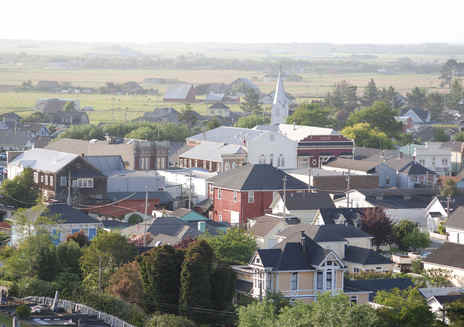
A fairytale come to life, this remote village features carefully preserved Victorian-era century homes, a visual and architectural feast. On a peaceful foggy morning or...
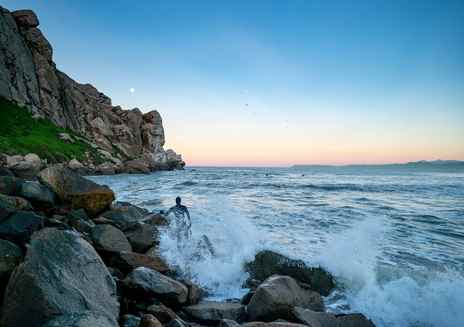
This highlight-filled drive from Santa Cruz to Big Sur showcases some of the most iconic views and attractions on Highway 1.
Why you should drive California's scenic Highway 395

Jan 29, 2021 • 6 min read
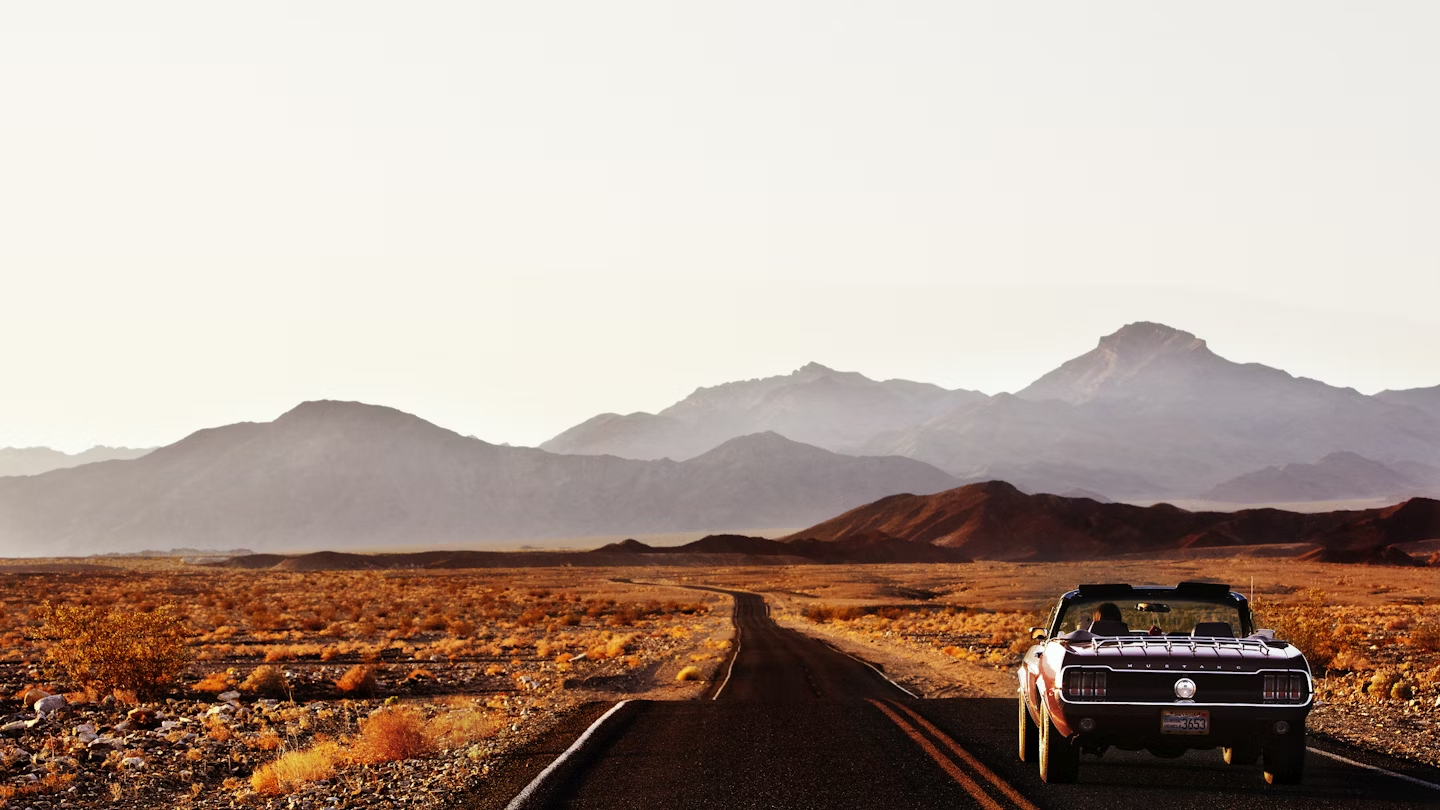
A road trip along California’s Hwy 395 from Lake Tahoe to Death Valley will take your breath away © Mark Read / Lonely Planet
US Highway 395 is California ’s backbone. Running east of the Sierra Nevada mountain range, it’s also a road of superlatives: highest, lowest, hottest, deepest, oldest – the 395 passes close by a whole host of -ests. And then there are the ghost towns, living towns, ski resorts, tufa formations, film locations and more.
Yet for all its many attractions, it’s relatively unexplored, especially compared to California’s other big name draws. It takes about four days to get a good feel for the region so join us on a north-south, semi-secret, always spectacular road trip.

Day one: Lake Tahoe
Start your adventure in Tahoe , a year-round destination for outdoor enthusiasts, with skiing in winter and just about every other activity the rest of the year (the east shore’s Flume Trail is a must for mountain bikers). The lake is the calm centerpiece of the action, famous as the largest alpine lake in North America and for its amazingly clear water – thanks to its height (6225ft above sea level) and the water’s depth (1644ft in places) algae can’t grow here, allowing unparalleled underwater views.

Stay and eat: For easy access to the 395 stay in South Lake Tahoe at Basecamp Hotel . Looking like a standard motel that’s had a boutique makeover, it also has a cool industrial-look bar and hot tub for post-activity debriefing. For eating options, book in advance for Cafe Fiore because its superb Italian food is no secret. Or for solid American cooking head to Evans or the Beacon Bar & Grill , both west of town on the way to not-to-be-missed Emerald Bay.
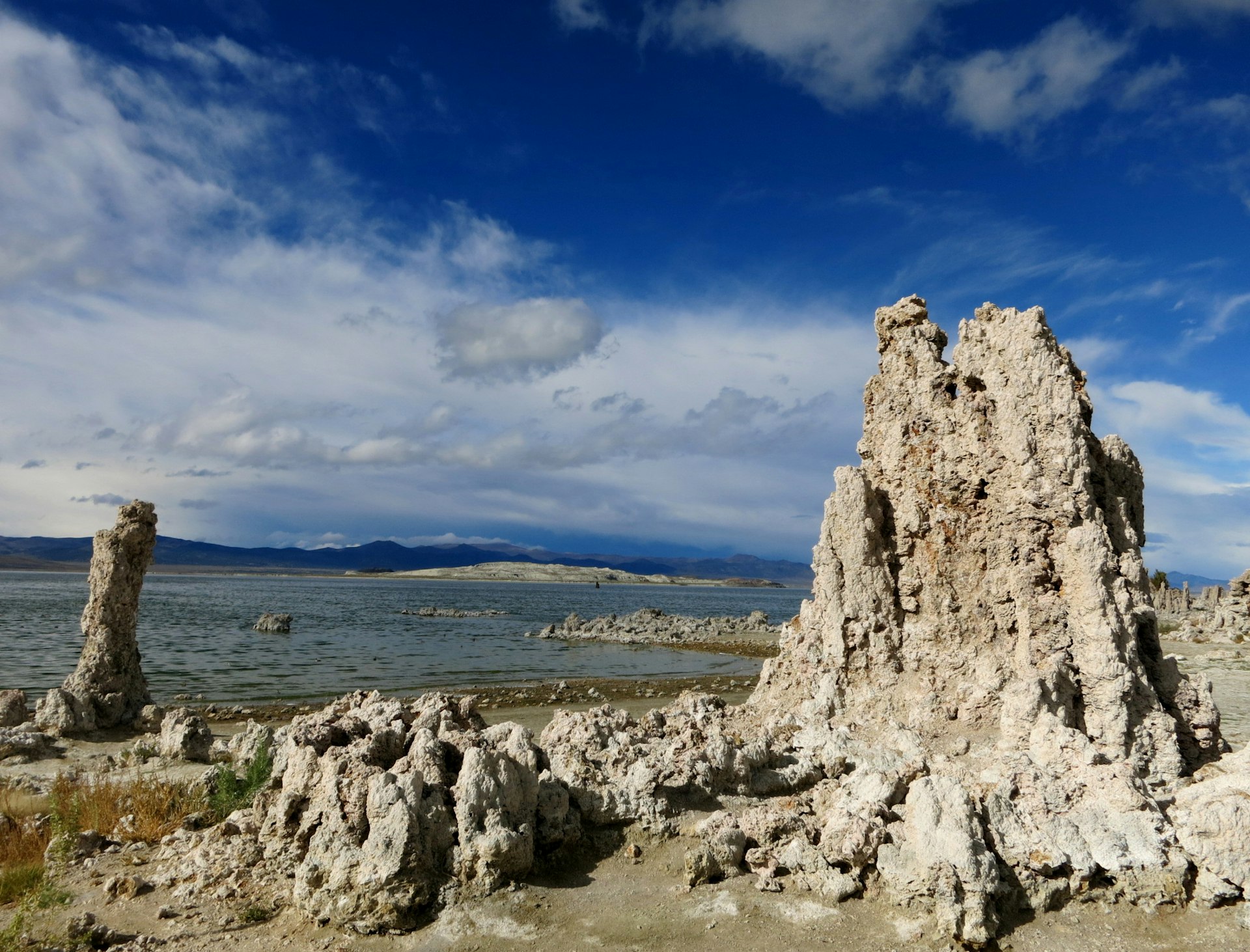
Day two: Tahoe to Mammoth Lakes
Two hours south of Tahoe, on a side, not fully paved road off the 395, you’ll find Bodie , a mining ghost town with (allegedly) real ghosts. Take a self-guided tour with the map from the small museum, peering into homes eerily still filled with their last owner’s belongings. Or go on a guided tour to gain access to otherwise closed-off buildings.
Just 45 minutes south is Mono (pronounced moh-no) Lake . Head to the South Tufa Area where you can learn more about the weird, tower-like limestone formations known as tufa (created by the action of the lake’s water with the salts in it), the billions of tiny shrimp that call the lake home, and, if you’re here in autumn, the millions of migrating birds who feast on the shrimp and flies.
From Mono Lake it’s a 30-minute drive to Mammoth Lakes , regional hub, famous ski resort and a great place to spend the night.

Stay and eat: Time it right (it’s generally only open in the evenings) and Mono Inn , on the 395 just north of Lee Vining, will give you one of the most memorable meals-with-a-view you’ll have along the whole route. For sleeping, Mammoth Lakes has plenty of decent, alpine-style options including Tamarack Lodge . For an evening of fine food and fun, nowhere in town beats Mammoth Rock ‘n’ Bowl , a bowling alley/arcade downstairs with an excellent, French-influenced restaurant upstairs.

Day three: Mammoth Lakes to Lone Pine
Start your day with a short detour west to Minaret Vista , a stunning panorama taking in a large swath of the Sierra Nevada – imagine the very different reaction that early settlers would have had when faced with this daunting natural barrier. Then drive, hike or bike around Mammoth’s eponymous lakes and check out the curious basalt columns of the Devil’s Postpile.
Back on the 395, it’s only 100 miles to Lone Pine but there’s plenty to see and do on the way. Stop at Bishop for any supplies you might need and make the side trip to Ancient Bristlecone Pine Forest to see trees that are the oldest living things on earth – some have been around for 5000 years.
Just before you reach Lone Pine , be sure to call in at the Manzanar National Historic Site , a Japanese internment camp from WWII. The story told here, of how thousands of Japanese Americans were seen as a security threat and forcibly moved from the coast to live in the harsh desert environment, is an overlooked and controversial episode in the country’s history.

Arriving in Lone Pine it’s tempting (and you should definitely give in to temptation in this instance) to take Whitney Portal Road as it winds up thousands of feet to the trailhead for Mt Whitney itself. The drive goes past the Alabama Hills , a popular film location for dozens of movies and TV shows thanks to its varied landscapes.
The hike up the highest peak in the lower 48 states is straightforward – the path, opened in 1904, had to be easy enough for mules carrying building materials for the Smithsonian Institution shelter at the summit, constructed to observe a transit of Venus – but obtaining the permit for the climb is not quite so simple: there’s a lottery held each year to restrict numbers. Whether you have a permit or not, it’s worth the drive up here for the views on the way, the fresh mountain air, and the chance to eat and pick up souvenirs (and tales of the trail) at the Whitney Portal Store .

Down in Lone Pine, the Museum of Western Film History delves more deeply into the area’s connections with shows like The Lone Ranger and movies such as Django Unchained . The scenery around the town has doubled as everywhere from India to Spain – pick up a locations map from the museum to explore more.
Stay and eat: The Whitney Portal Hostel & Hotel (run by the same people who run the store at the trailhead) is the best place to stay in town, with both dorm beds and motel-style rooms available – ask for one with a view of the mountain. Just along the road is Lone Pine’s best place to eat, Seasons , serving up well-cooked, hearty dishes.

Day four: Lone Pine to Death Valley
Leaving the Sierra Nevada and the 395 behind, it’s time to hit Death Valley , notorious as the hottest place on earth: 134°F (56.6°C) was recorded here in 1913. It’s also the largest US national park outside Alaska. The lowest point in North America, Badwater Basin, is here too, an area of strikingly white salt flats sitting at 282ft below sea level.
Along with Badwater, it’s worth visiting Zabriskie Point to see the erosion-carved rocks that appear to ripple across the landscape. To cool off, head up to Dante’s View where the rewards are not just lower temperatures (you’re at nearly 5000ft here) but also the chance to end your trip with a view of the contiguous US’ highest point, Mt Whitney, in the distance, and North America’s lowest point, Badwater Basin, below you. Have your camera ready.
Stay and eat: There are three main sleeping and eating areas in the park: Panamint Springs ; Stovepipe Wells ; and The Oasis at Death Valley . Most accommodation options are of the classier motel variety. For a relaxed setting, the Toll Road Restaurant has filling fare, as does Panamint Springs Resort. Grab a refreshing beer to toast the end of your trip along the highway of superlatives.
You might also like:
How to see the Yosemite firefall in 2021 california's-10-best-hiking-trails-link" href="https://www.lonelyplanet.com/articles/california-best-hiking-trails"> California's 10 best hiking trails california's-top-experiences-link" href="https://www.lonelyplanet.com/articles/top-25-experiences-in-california"> California's top experiences
Clifton Wilkinson traveled along the 395 with support from Visit California. Lonely Planet contributors do not accept freebies in exchange for positive coverage.
Article first published in October 2015, and last updated in January 2021.
This article was first published October 2015 and updated January 2021
Explore related stories
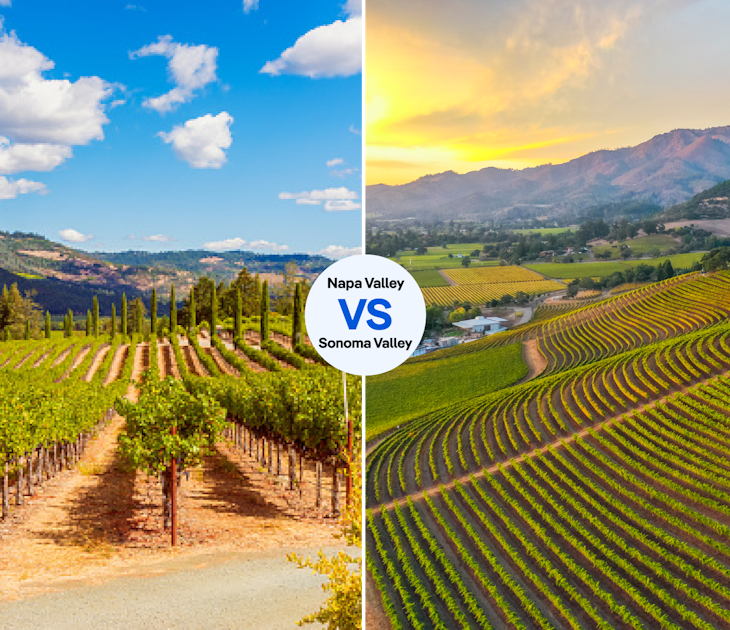
Apr 29, 2024 • 7 min read
These two winemaking regions of California have much to recommend them. So we invited two writers to make the case for each.

Apr 29, 2024 • 11 min read
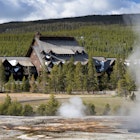
Apr 22, 2024 • 13 min read

Apr 17, 2024 • 6 min read

Apr 17, 2024 • 4 min read

Apr 15, 2024 • 8 min read

Apr 14, 2024 • 8 min read
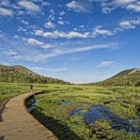
Apr 14, 2024 • 6 min read

Apr 13, 2024 • 9 min read
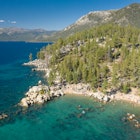
Apr 13, 2024 • 6 min read
- Skip to primary navigation
- Skip to main content
- Skip to primary sidebar
- Skip to footer

The Opinionated Travelogue of a Photo Maniac
- Middle East
- North America
- South America
- Pacific Islands
- FOOD & WINE
- TRAVEL GUIDES
- TRAVEL RESOURCES
- Rants & Raves
- Travel Blogger Interviews
- Contact Form
- Privacy Policy
- Featured Elsewhere
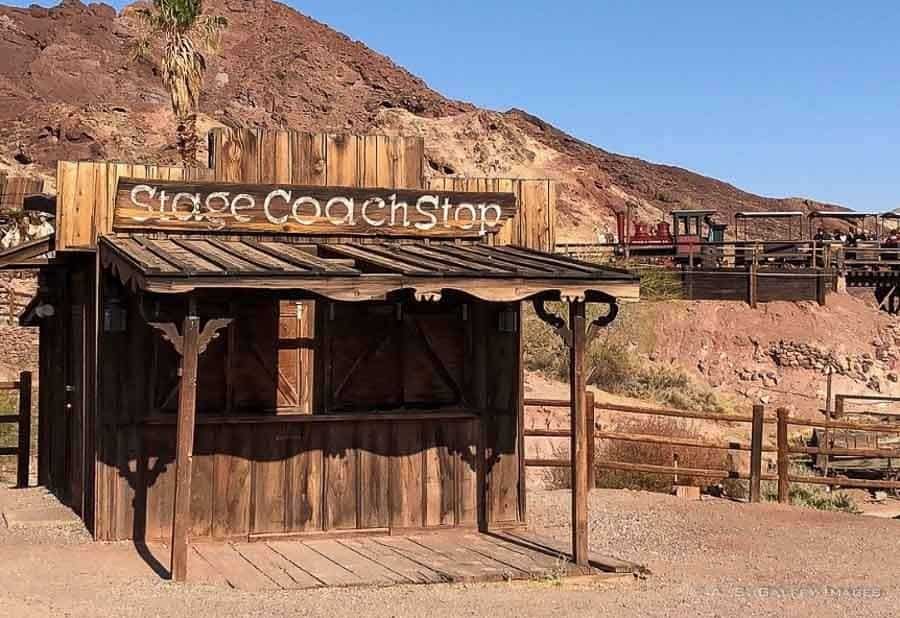
The Ultimate Guide to Visiting Calico Ghost Town
Last Modified: August 23, 2023 // by Anda // 22 Comments
Somewhere on the long desert drive between Los Angeles and Las Vegas , lies Calico, one of the most popular ghost towns on Route 66 , in California. At least for me. But not everybody shares my opinion.
For ghost town devotees, Calico is this over-commercialized town that plays to idealistic Old West stereotypes. Even so, if you have never seen a ghost town before, Calico may be a fun place to experience.
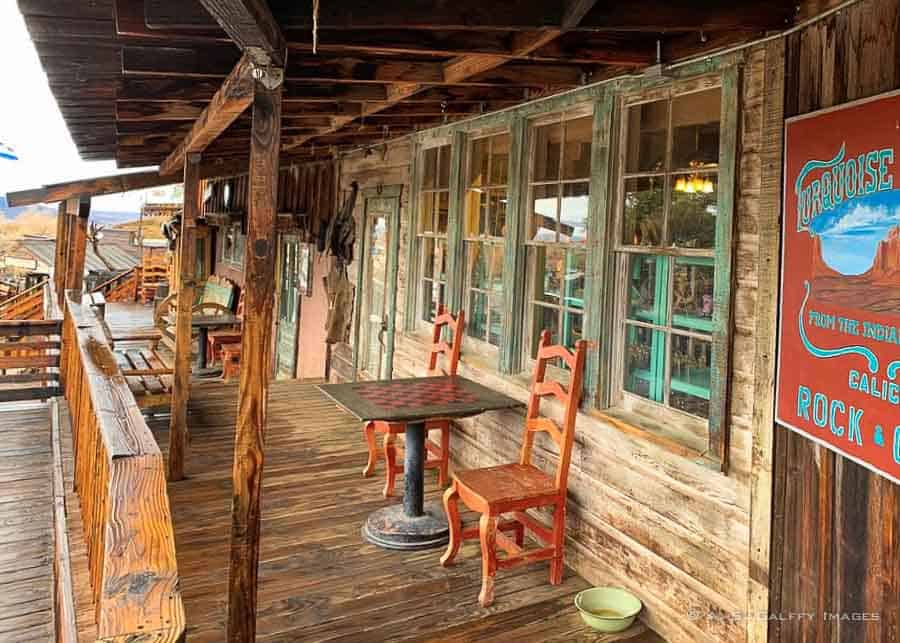
Table of Contents
A Brief History of Calico
What to expect in calico ghost town, maggie’s mine, mystery shack, odessa railroad, lane house and museum, old school house, best time to visit calico ghost town, how to get to calico ghost town, where to eat in calico, where to spend the night in calico.
The discovery of gold and silver in the second half of the 19th century changed the face of California completely. Thousands of people lured by the promise of riches began heading west in order to “ see the elephant ,” as the California Gold Rush was often called.
Little towns began sprouting like mushrooms around the gold and silver mines. One of these towns was Calico, in the upper Mojave Desert, which developed around the Calico Mining Company.
The story of Calico is not any different from that of the many other mining boomtowns gone bust after marked collapsed.
In the late 1800’s the town was buzzing with prospectors searching for its mineral riches. Silver was discovered here and the Calico became one of the richest mining districts in the state.
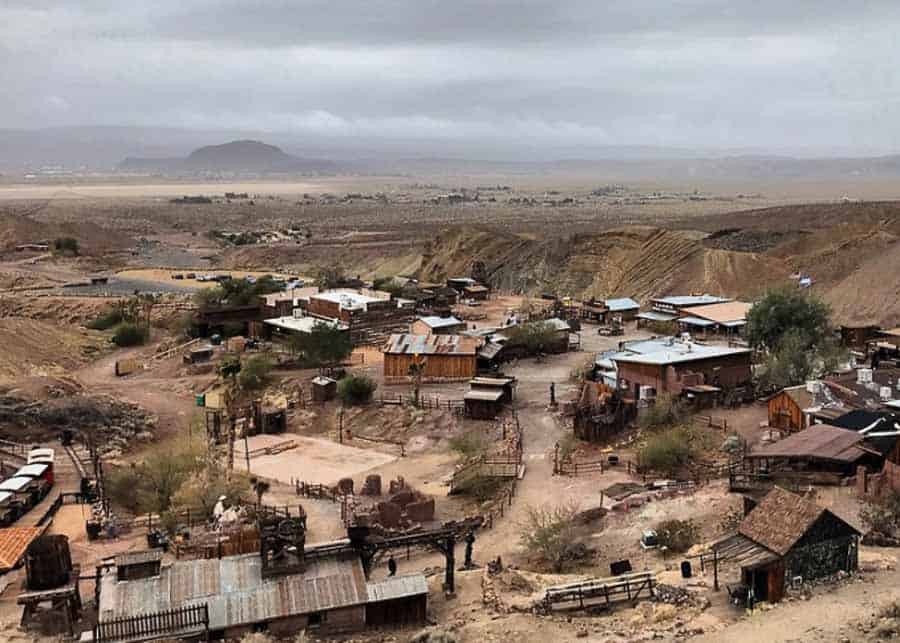
By 1886 the town’s population peaked to 1,200 souls. Calico had a wide variety of businesses and shops, hotels, a jail, saloons, a Chinatown, and –like any respectable town– a redlight district.
But when the silver market collapsed later that decade, the town fell into decline. Miners and their families began moving away in search of other opportunities.
As a town, Calico had a turbulent existence, burning down to the ground in the fall of 1883. After its abandonment in the 1930s, the town stayed neglected for almost 20 years. In 1950, Walter Knott – the owner of Knotts Berry Farm in Buena Park– converted Calico into a tourist attraction.
READ NEXT : How to Spend an Incredible Day in L.A.
Calico is a county park where people come to imagine life in an old mining town. Only five of the original town buildings still exist today. The others are recreated replicas of their originals.
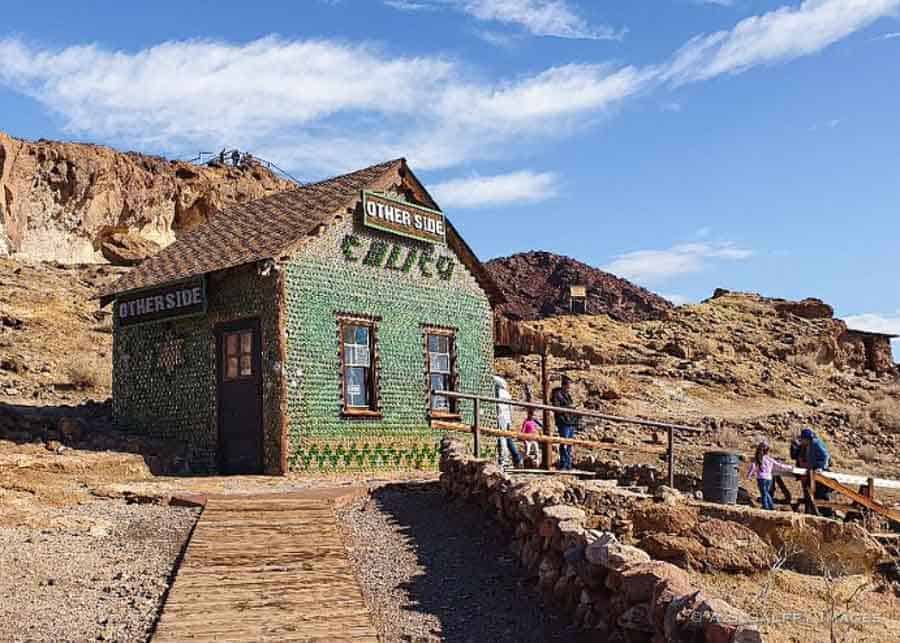
Unlike Bodie where you get a feeling of isolation and abandonment, Calico is anything but deserted. The ghost town of Calico is a joyful and populated place where at any time of year you’ll cross paths with hundreds of tourists. It feels more like Jerome, which is an ‘alive-an-well’ ghost town .
While Calico is not exactly authentic, I think it’s still a nice place where you can experience the Old West. And if you are a photo enthusiast, you’ll find a lot of photo opportunities here.
Top Sights to See in the Ghost Town of Calico
Scattered throughout Calico are numerous shops, restaurants and historic sites that you should visit. The shops sell all kinds of trinkets, antiques, candy, western clothing, and more. Even if you don’t want to buy anything, it’s still fun to browse through them.
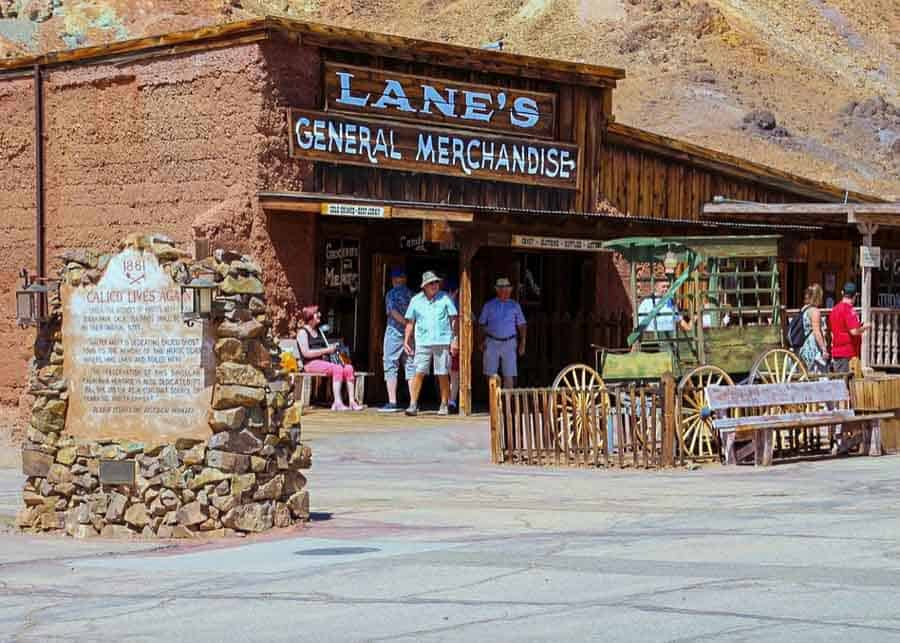
The park also operates mine tours, gunfight stunt shows, gold panning, and a small a rail road. If you want to partake in some of these activities, you’ll have to pay extra.
Back in the 1880s this was a working silver mine. Today the mine is safe and open to the public to walk through. A quick self-guided tour will give you an idea how the mines of Calico looked. There is a display showcasing some of the minerals found locally.
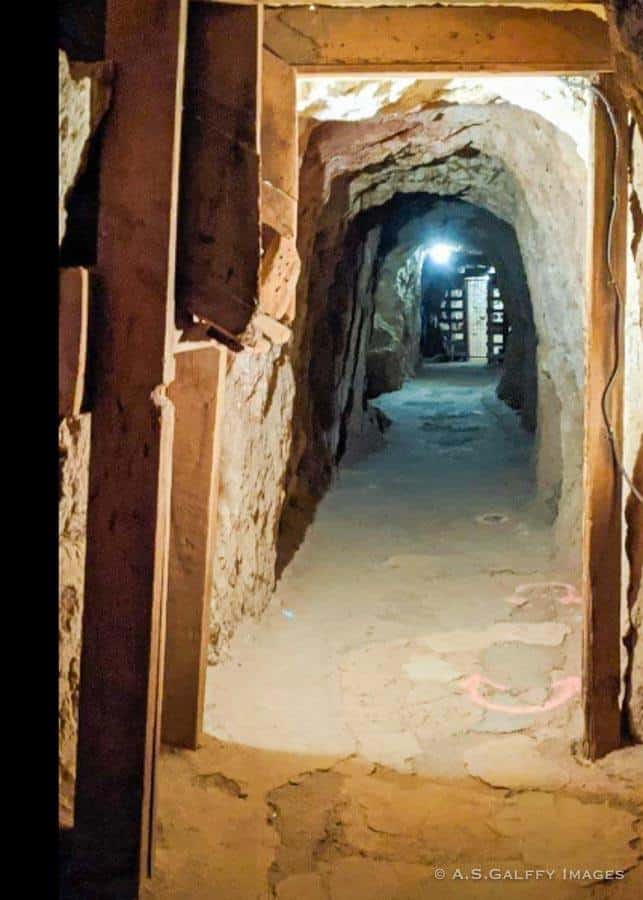
Want to see water running uphill? How about a broom swapping by itself? If you take a guided tour of the famous Mystery Shack you’ll see all these and find out more about Harry Dover, the guy who created the shack.
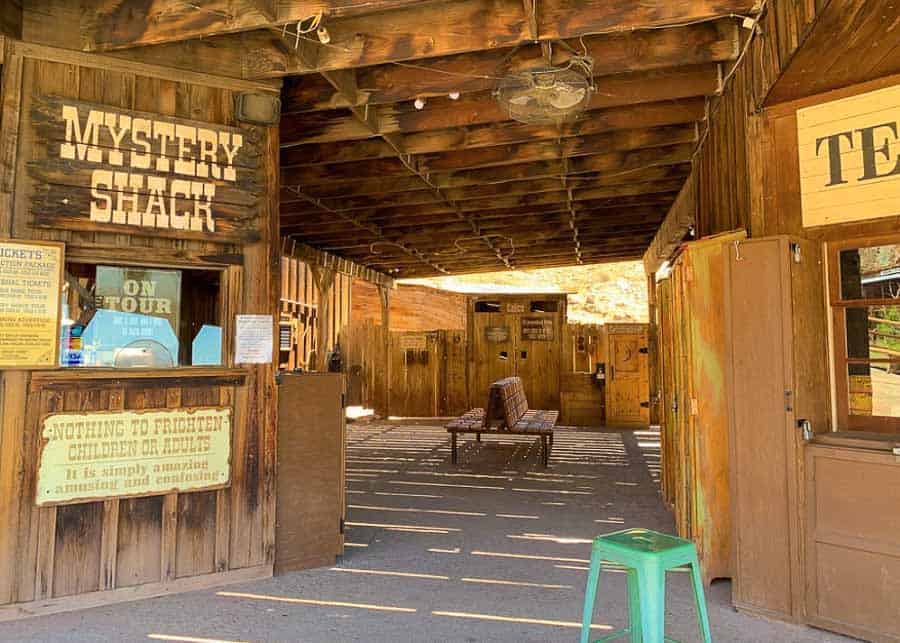
This small working railroad was installed in Calico Ghost Town in 1958 and has been working ever since. The train tour takes you around the hill and lasts about 10 minutes. Along the way you can see some of the old mining equipment and many of Calico’s historical sites.

If you want to find out about the former Calico Mining District, you should visit he Lane House and Museum. The museum building is one of the five original adobe structures from the late 1880s that have survived the test of time.
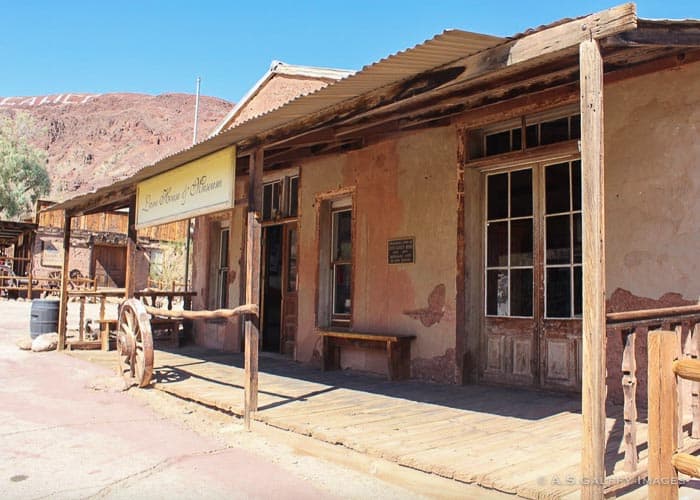
Although the building has undergone many changes over the years, you can still see some of the old features, like the transom windows, an electrical wiring from the 1930s, and furnishings that belonged to the Lane family who lived here from the 1920s to the 1960s.
At the top of the town, just as you hit the end of the road, you’ll see the building of the Old School House. This is a replica, but it still makes you feel nostalgic about that era..
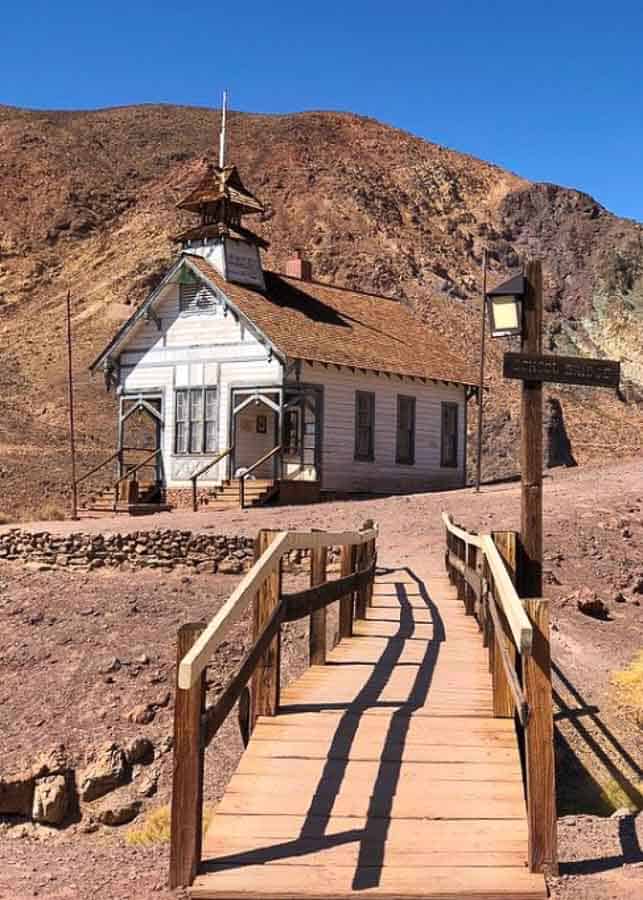
Calico Ghost Town is open year round, except Christmas Day. Given its location in the Mojave Desert, it’s rarely overcast or rainy in Calico, which is a good thing.
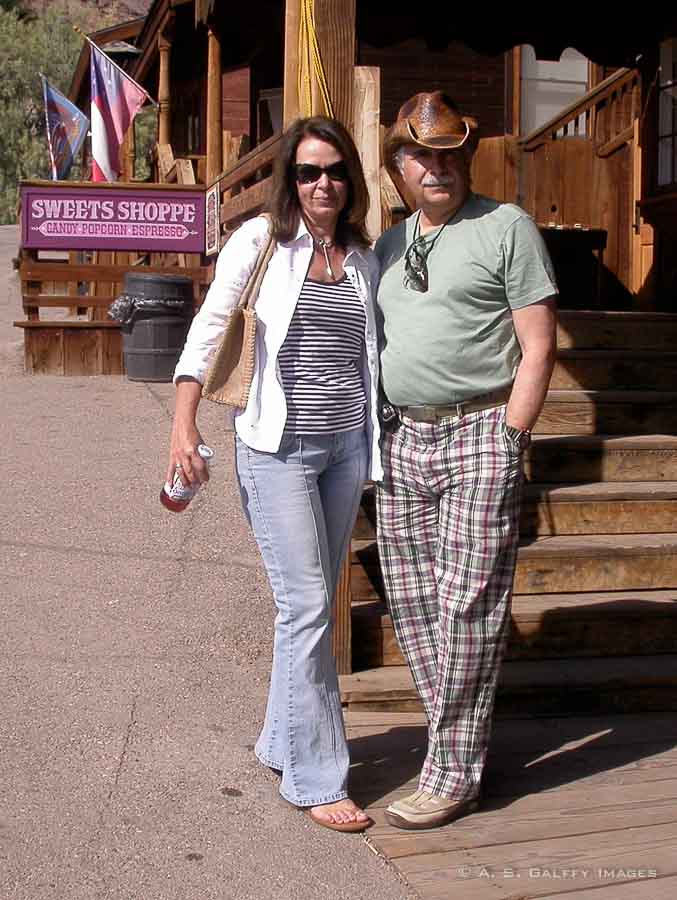
The best time to visit is between October and May, when the weather is cooler. However, if you don’t have a choice, the summer months may work as well. Although the temperatures will be above 100ºF, the weather is very dry in the desert, so it doesn’t feel so bad.
- Calico is open daily from 9am-5pm.
- $8 – adults
- $5 – Youth (4-11)
- Children 3 & Under – Free
Calico Ghost Town is located on 36600 Ghost Town Road in Yermo, just east of Barstow, on California Interstate 15.
The driving distance between Los Angeles and Calico is 127 miles (1 hour and 50 minutes). If you don’t have a car, the best way to get from Los Angeles to Calico is by bus which takes 2h 5m and costs $40 – $65.
If you are coming from Las Vegas, the driving distance is 149 miles (2 hours and 13 minutes) via I-15 S.
There are several places where you can eat in Calico. Most of them are decent, but they all have higher prices as you would expect in any amusement park.
If you are looking for a full-service restaurant, Calico House is probably the one. They serve breakfast, lunch, and dinner and have a wide selection of dishes on their menu.
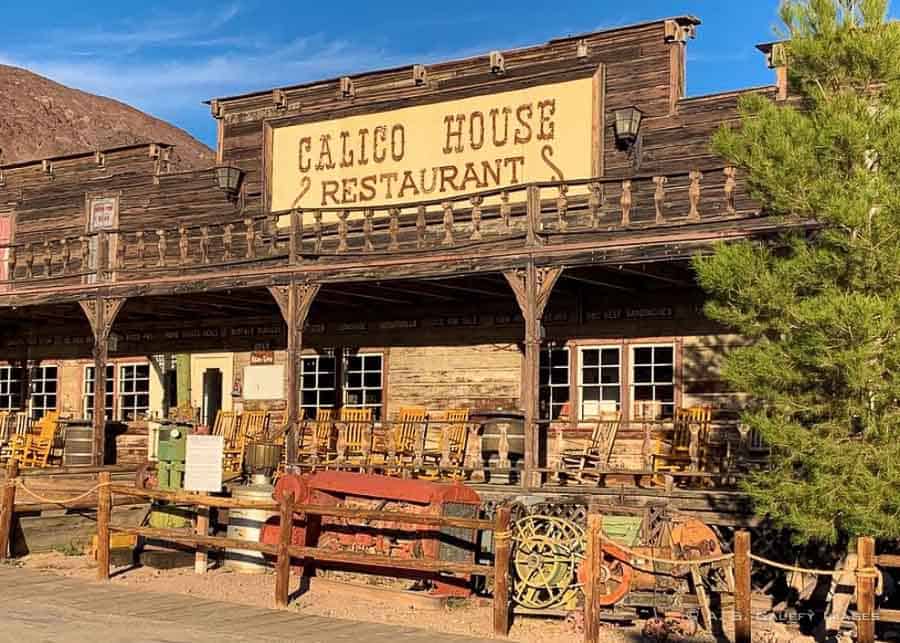
There is also a patio from where you can enjoy the beautiful mountains around and watch the little train going around.
Located at the top of Calico Ghost Town, Old Miner’s Café is another nice choice for lunch. The restaurant serves hamburgers, a variety of sandwiches, salads, hot dogs, ice cream and more.
Lil’s Beer Garden Saloon is basically a snack bar located on one of the original buildings that still looks just like an old-fashion saloon, with swinging doors. It’s a nice place to get a drink and get a pizza or a hot dog. The pictures up on the wall of all the old history gunslingers, outlaws and sheriffs are nice to look at.
Calico Ghost Town can be easily visited as a day trip from Los Angeles , or from Las Vegas. However, if you decide to spend the night around here, I recommend staying in Barstow, just 15 minutes away from Calico.
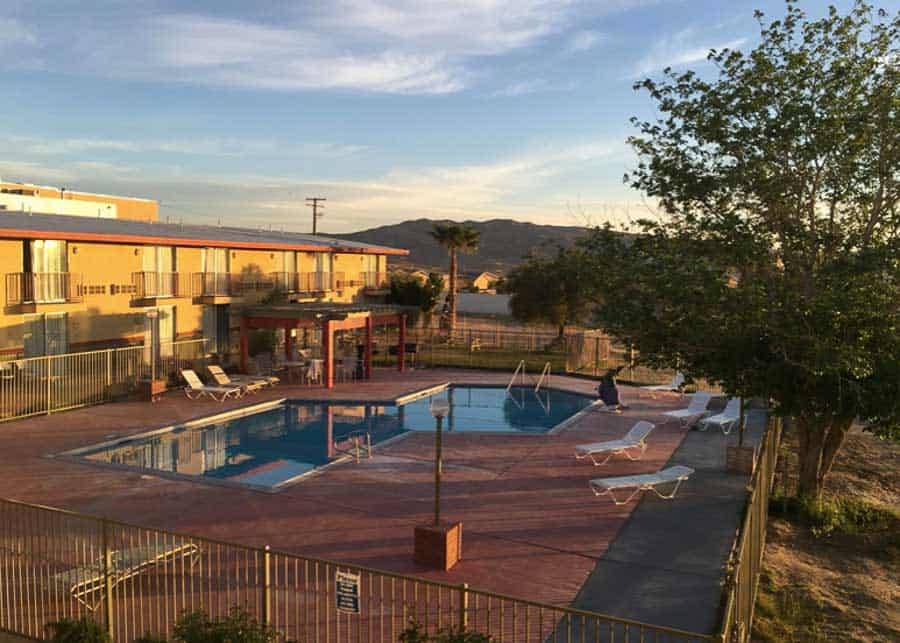
It’s not the most fancy town but it’s O.K, considering that you are in the middle of the desert. Check your favorite hotel booking sites for rates and availability here.
There is also a camping site nearby where you can rent a cabin on pitch your own tent. The pay for the site varies according to hook-up access. Each site is restricted to 4 people, 1 car and 1 tent.
Please pin this post for later:
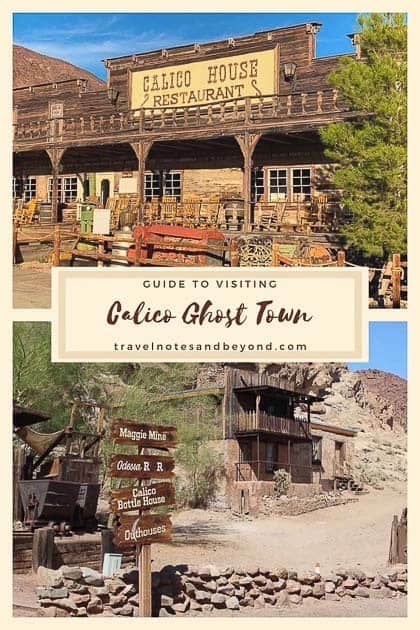
Anda is an award winning travel writer, avid globetrotter and passionate photographer. She is the voice behind "Travel Notes & Beyond," a collection of stories and travel impressions from her wanderings around the world. When she is not busy writing, traveling, or editing photographs, you can find her hiking in the foothills behind her house together with her husband and their dog.

Reader Interactions
October 6, 2023 at 10:39 am
I absolutely love this place. We come here for days at a time. The sheer peacefulness of this place is amazing. Mornings and evenings are heavenly.
Plus I get to off road.
Elizabeth Nees
May 29, 2023 at 12:14 pm
Around 1960 my family traveled through Calico Ghost Town during vacation. I was a child, perhaps 9 years old. I remember standing at a bar and being served a “chocolate phosphate”. It was delicious! also, the man behind the bar told us the bar itself was exotic, and historically relevant—- it had been brought from around the cape. Is this true?
Is the bar still there? Do they still serve phosphates? thank you.
May 29, 2023 at 1:18 pm
The bar is still there, but I have no idea if they still serve “chocolate phosphate.” But if I return to Calico I’ll make sure to ask. It’s interesting to see how some events from our childhood still linger in our memory.
October 6, 2023 at 10:35 am
I’ll ask. I’m here for the weekend
January 31, 2022 at 7:56 pm
I used to work at the Marine base riding stables & we took trail rides to Calico several times a day. It took about 1.5 hours each way & we would spend an hour in Calico, I never did get tired of it. When I was a little girl a friend had burros & mules there & took out rides. I actually would like to see it again as I haven’t been here since 1975.
January 31, 2022 at 11:34 pm
It seems you’ve known Calico for a long, long time. It would be interesting to visit it again, after all these years.
March 27, 2016 at 10:20 am
We’ve been to a few ghost towns, but not toCalico yet. I agree, these can sometimes feel a bit commercial but it’s still fun to sidle up to the bar in the saloon and order a frosty mug of sarsaparilla!
Anda Galffy
March 27, 2016 at 11:29 am
I agree, Corinne.
March 27, 2016 at 8:21 am
Ha,ha, that’s funny, Shobha! I’m sure your kids would enjoy Calico.
Mark Schultz
December 13, 2021 at 4:09 am
Visited 30 years ago going back to visit this winter great history and well restored town great day trip when you fly into Vegas.
December 13, 2021 at 11:39 am
Winter is a great time to visit Calico, because it’s not so hot.
Clare (Suitcases and Sandcastles)
March 26, 2016 at 5:21 am
This is absolutely fascinating. I’ve never visited a ghost town and really like the sound of this although perhaps Bodie would make a better first start. That school house reminds me of the one in Little House on the Prairie! #TheWeeklyPostcard
March 26, 2016 at 1:53 pm
It doesn’t really matter what ghost town you start with. They are all very charming, even though some of them are more touristy than others.
Rhonda Albom
March 25, 2016 at 8:01 pm
I haven’t heard of Calico, but like you, I have been to many ghost towns. I used to like them, but I think I have seen too many. I also never heard the expression “see the elephant.” Fun and interesting post. Love the photos.
March 26, 2016 at 3:55 pm
Thank you, Rhonda. I would still like to see some ghost towns before I declare myself ‘bored’ of them.
Ruth - Tanama Tales
March 25, 2016 at 7:25 pm
I have wanted to visit Calico for a long time since you see the signs every time you visit Vegas. Last time I had plans to visit, we ended up in Death Valley. Even if it is not that authentic, I wold like to visit to learn about the history. In December, I went to Tombstone which is not authentic at all but I wanted to visit anyway (I wanted to complete the trio of most famous mining towns in Arizona: Jerome, Bisbee and Tombstone).
March 26, 2016 at 1:55 pm
I’ll have to visit Tombstone, even though you say it’s touristy. I’m sure I’d like it anyway.
Mary {The World Is A Book}
March 25, 2016 at 7:11 pm
We’ve passed by Calico many times on the way to Vegas but never exited to visit. This gives me a good idea of what to expect. I think my kids would actually enjoy this. We’ve never been to Bodie or Jerome so I’ve got nothing to compare to. Looks like a fun little stop to break up the drive.
March 26, 2016 at 1:56 pm
I’m sure you’d enjoy visiting Calico. I went there six-seven times so far so for me it’s no longer too exciting, but if you’ve never visited the town you’ll like it.
Lyn @thetravellinglindfields
March 25, 2016 at 1:38 pm
We have been to lots of ghost towns, including Bodie which we loved, but never Calico. It does look worth a visit next time we are in California. I am like you, I love ghost towns.
March 25, 2016 at 1:42 pm
If you like ghost towns, you’ll surely enjoy Calico. Although not as authentic as Bodie, Calico is still worth a visit.
Lydia C. Lee
March 25, 2016 at 1:10 pm
Leave a Reply Cancel reply
Your email address will not be published. Required fields are marked *
Save my name, email, and website in this browser for the next time I comment.
COPYRIGHT NOTICE
All rights reserved © Travel Notes & Beyond. The material on this website is protected by copyright law. Republishing the content on this blog (including text, photography, etc.) is strictly prohibited.

AFFILIATE PROGRAM DISCLOSURE
Some of the pages and posts of this blog contain links to products and services that may be useful for my readers. When clicking on these links you will have the option to purchase or register for a service at no extra cost to you, but doing so can help me offset the costs associated with running this blog. Thank you for your support!
Daytrippen.com
Your Trip Starts Here
Ghost Towns In California, Nevada, and Arizona
by DayTrippen
- Odnoklassniki icon Odnoklassniki
- Facebook Messenger
- LiveJournal
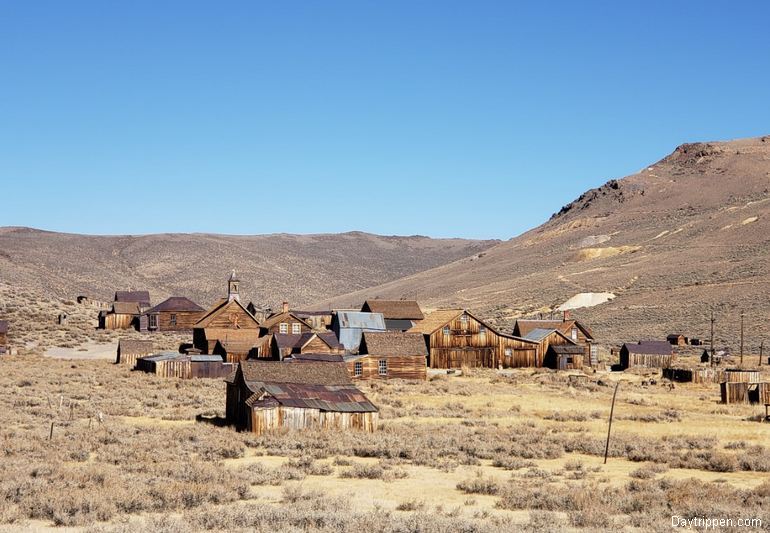
Explore the ghost towns of California and Nevada, where you can witness the remnants of abandoned buildings and experience the revival of some towns as popular tourist destinations. While some of these towns require a four-wheel drive to access, most can be explored in any vehicle. Visiting these ghost towns is an exciting adventure that offers a glimpse into the past and an opportunity to learn about history. Nevada Ghost Towns – Arizona Ghost Towns
California Ghost Towns
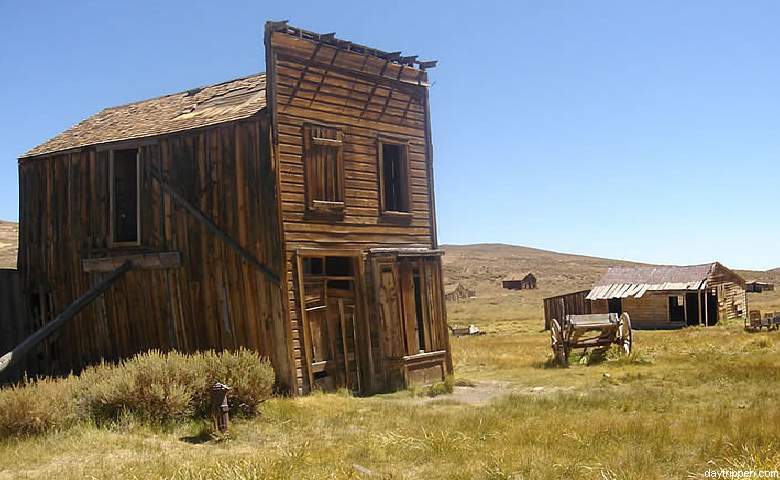
Bodie Ghost Town California High Sierra
Bodie Ghost Town is an excellent example of an abandoned, old-west mining town in California. Bodie is the official California Gold Rush ghost town. Bodie is located seven miles south of Bridgeport via Bodie Road (the last three miles are unpaved.) The California Department of Parks and Recreation cares for this unique ghost town. With around 200 buildings, you will have plenty of exploring to keep you busy.
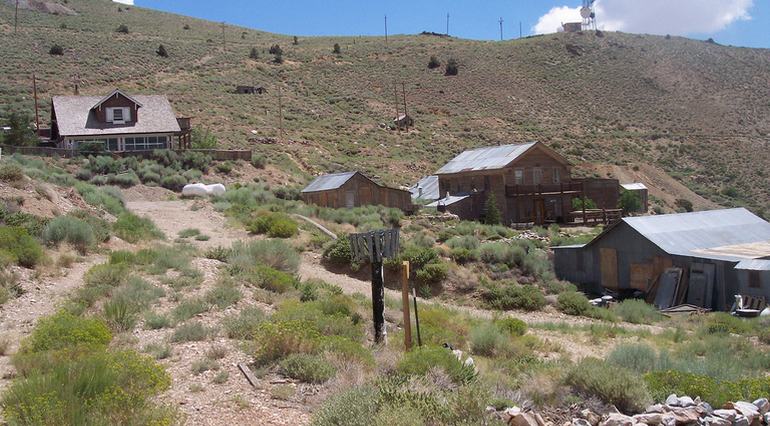
Cerro Gordo Ghost Town Owens Valley
Cerro Gordo Ghost Town in the Inyo Mountains high above California’s Owens Valley. Cerro Gordo is on private property, and you’ll need permission from the owner to access the property. The mine and town are visible from the road but do not enter without permission. Cerro Gordo is eight miles up a steep gravel road from the Owens Valley town of Keeler.
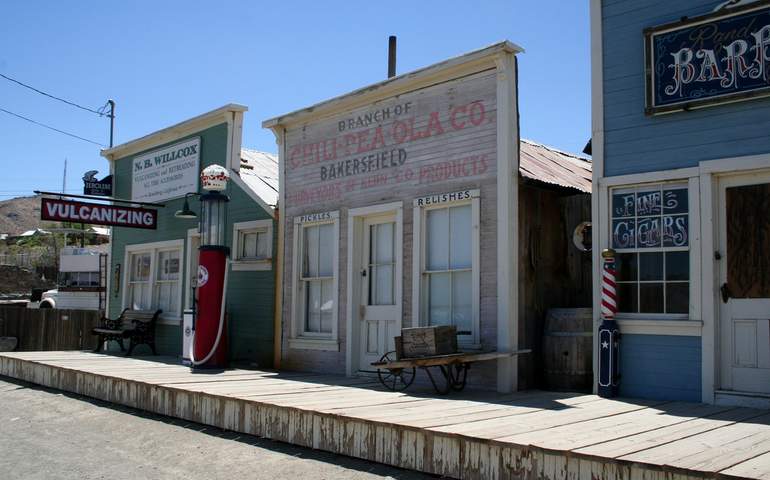
Randsburg Ghost Town Kern County
Travelers will be transported back to California’s early gold mining days when they visit the Living Ghost Town of Randsburg. Although gold fever is no longer the main draw, the town still has an invasion of tourists, mainly summer travelers passing through the area, who stop to explore the town’s historical past. They are scattered along Butte Avenue between various dilapidated structures and historical monuments, including a tiny jail cell and rusted-out abandoned vehicles.
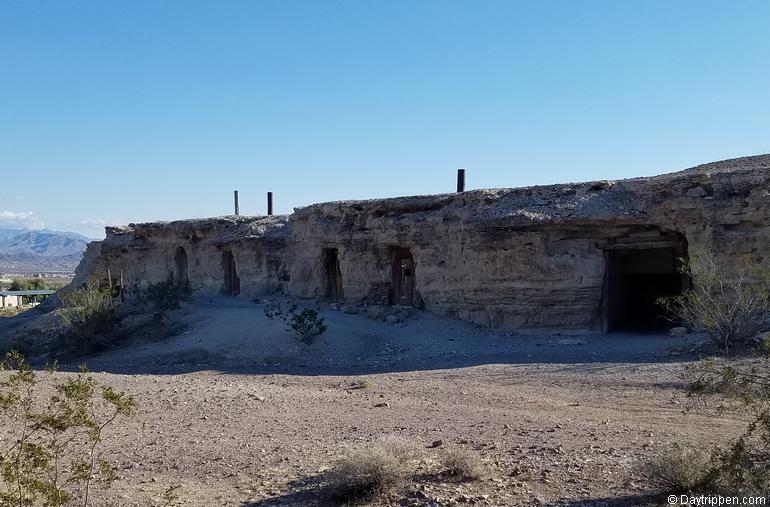
Dublin Gulch Miners Cave
Dublin Gulch was inhabited for over 100 years before being abandoned. Miners carved these living quarters into the side of a canyon near the entrance to Death Valley. The stone walls kept them comfortable in the summer and warm in the winter. Most of the caves consist of one room. However, a few of the most resourceful inhabitants dug several chambers. One of the cave dwellings even had a garage. As the mines played out, the miners moved on. More recent inhabitants included hippies and hobos. By the mid-seventies, all of the cave homes were vacant.

Calico Ghost Town Barstow, CA
Calico Ghost Town is a family-friendly friendly adventure near the high desert town of Barstow, California. At its height, Calico boasted a population of 1,200 people and over 500 silver mines. The usual assortment of bars, brothels, gambling halls, and churches existed. These days, the Calico is populated mainly by tourists, but well worth a look. Calico Ghost Town is off Interstate 15, three miles from Barstow.
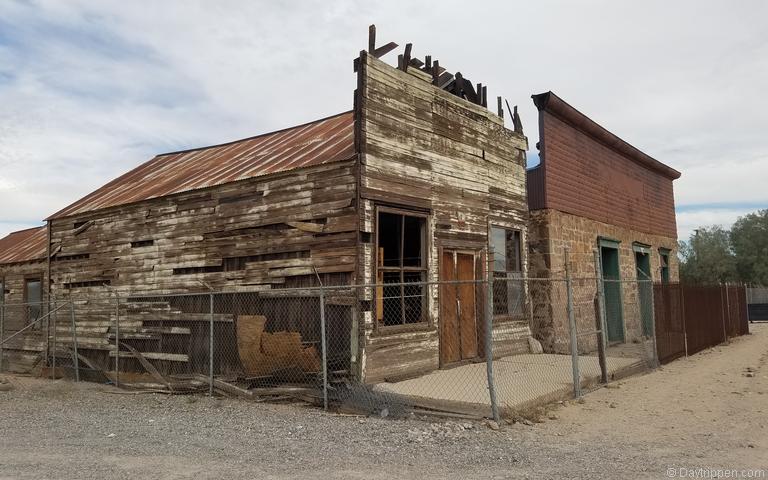
Daggett California
Daggett was once a bustling mining town with two railroads, saloons, hotels, and three blacksmiths. These days, Daggett is bordering on being a ghost town. Plenty of remnants of the glory days, including The Stone Hotel and Alf’s Blacksmith shop that built 20-mule team wagons to transport ore from the nearby Calico Hills.

Keeler Ghost Town Owens Valley
Keeler once had a population of around 2500 people. Today, there are only 50 residents. Keeler has several landmarks on the eastern shore of the mainly dry Owens Lake, including the town swimming pool and the dilapidated train depot.

Mentryville Ghost Town Newhall, CA
Mentryville Ghost Town is a California Historic Landmark in the Santa Susana Mountains near Los Angeles. Mentryville is California Historical Landmark numbers 516-1 and 2. The few remaining structures, including a restored thirteen-room Pennsylvania-style mansion, the one-room Felton schoolhouse, and a period barn, are silent reminders of a long-gone era. Oil industry-related, and other artifacts are found along some trails leading into and out of Mentryville.
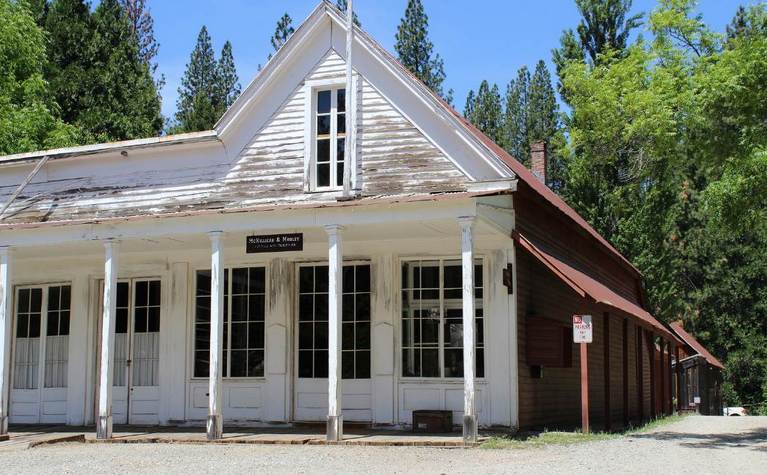
North Bloomfield Malakoff Diggins
The California gold rush town of Bloomfield grew from a small mining camp (Humbug) into a city of nearly 2000 residents. Bloomfield. After most of the gold was recovered, the town faded as quickly as it rose. Today, the ghost town of North Bloomfield and the Hydraulic mining area are located in Malakoff Diggins, Historical Park.
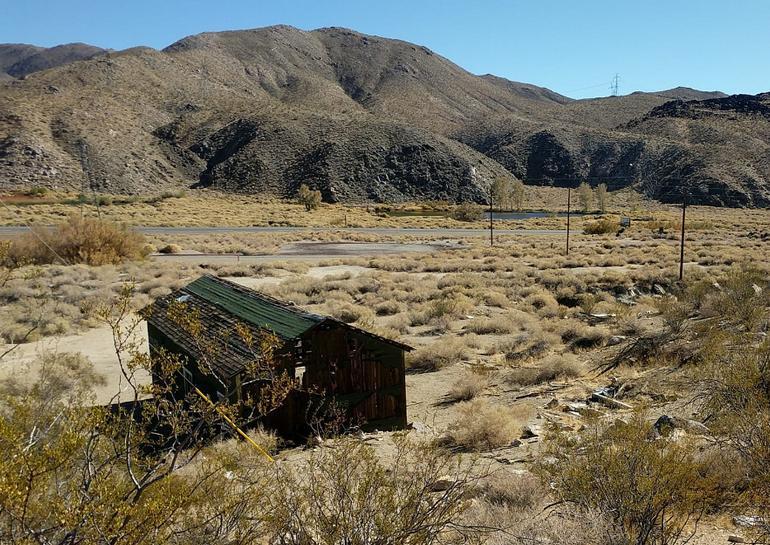
Little Lake Inyo County, California
Little Lake is a historic site in Inyo County, California. It is situated just off U.S. Route 395 at the southern end of Owens Valley. The town served as an important stop for travelers between Los Angeles and the Eastern Sierra. It was established as a rest stop for travelers, especially after the Los Angeles Department of Water and Power dammed the site’s eponymous landmark in 1905 as part of the Los Angeles Aqueduct project.
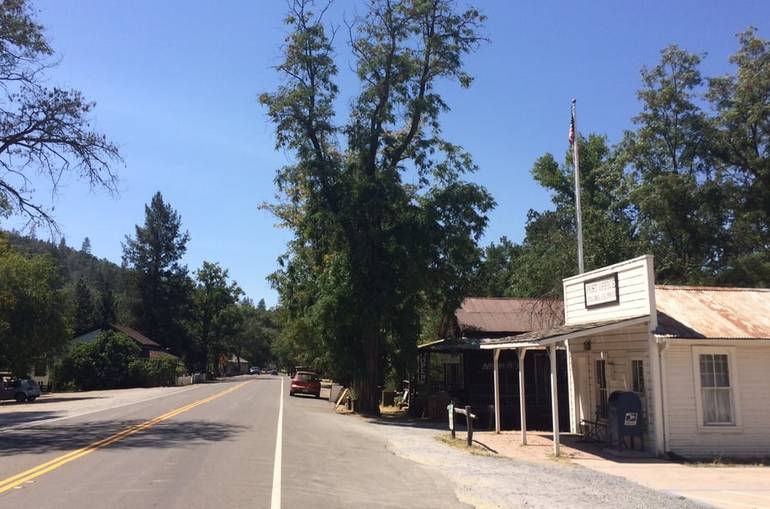
Coloma California
Coloma is where the gold was discovered in Northern California. Marshall Gold Discovery Park in Coloma features miners’ cabins, a general store, a replica of Sutter’s Mill, and various historic buildings dating back to the mid-1800s. The town of Coloma today is a small community, with much of its original layout preserved within the state park. Its history and legacy serve as a reminder of the transformative impact of the California Gold Rush on both the state and the nation.

Pioneertown Yucca Valley, CA
Pioneertown Yucca Valley is not an actual Ghost Town but a western town built for filming movies in the 1940s. There is a saloon, livery stables, a post office, and a marshal’s office. During the summer, mock gunfights are held on the main street. The road to Pioneertown is a California Scenic Drive; if you like desert scenery, you are in for a real treat as you drive out to the old western town.

Melody Ranch Ghost Town
Melody Ranch has a nearly 100-year history in the film industry. It started in 1915 as a location for filming westerns. At that time, it was known as Monogram Movie Ranch. While not a real ghost town, it certainly looks the part. A small museum is on-site, and tours of the ranch and western village are available for groups with reservations.
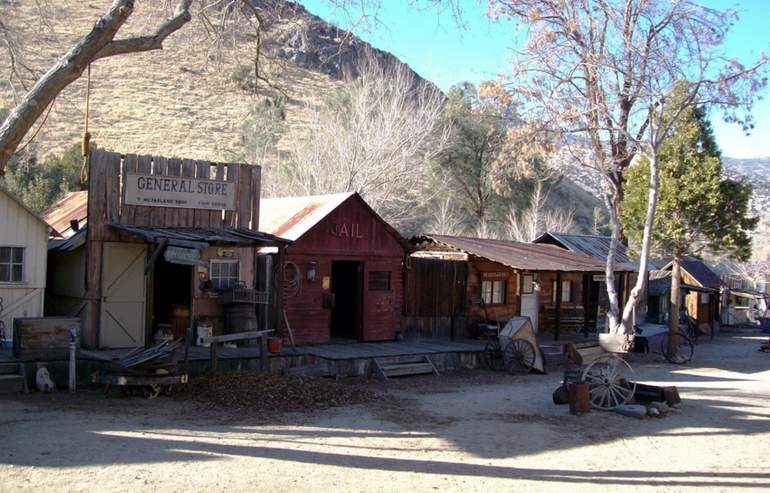
Silver City Ghost Town Lake Isabella
Silver City Ghost Town features 20 historic buildings with thousands of treasures from mining camps and other local frontier settlements. While the town itself is not original, nearly all structures, along with their creepy mannequin displays, are authentic. Silver City is a diamond in the rough for antique lovers, with thousands of artifacts on display throughout the property. Some of them are for sale in the town’s main building.

Chemung Mine Mono County
Chemung Mine is located on the back road to Bodie Ghost Town. Chemung Mine is about 15 Bridgeport Reservoir via Masonic Road (dirt and gravel.). 4WD may be needed depending on road conditions. The Chemung Mine and Mill are worth checking out for Western history buffs. The area has several smaller mine sites and ruins from the Ghost Town of Masonic, California.
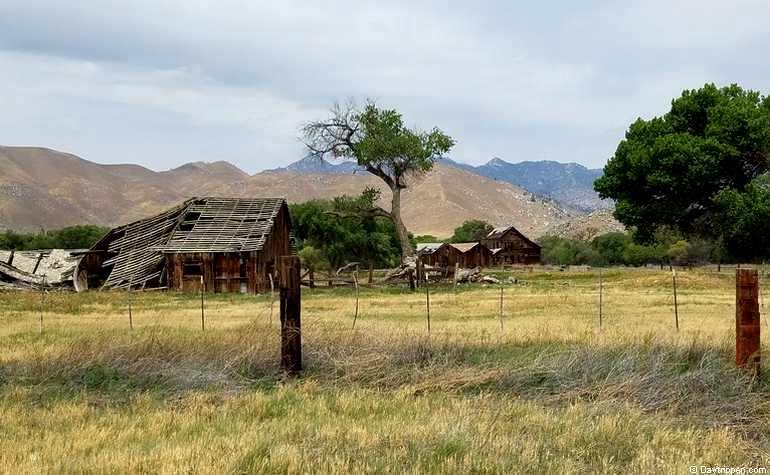
Brown Flour Mill
Built-in 1878, the Brown Flour Mill is one of the oldest structures in the Kern River Valley. What was once the Andrew Brown Ranch is now part of the Kern River Preserve. The buildings are off-limits but can be viewed from Highway 178 or via a nature trail around the old mill buildings. The Brown Flour Mill is located at Highway 178 and Kelso Valley Road east of Lake Isabella .

Knott’s Berry Farm Ghost Town
The middle of Orange County, California, is probably the last place you would expect to find a ghost town. While primarily a tourist attraction, this ghost town has original and replica buildings. Ghost Town buildings include the Gold Trails Hotel, formerly from a ghost town in Arizona, The Blacksmith Shop, Bird Cage Theatre, Boot Hill, Western Trails Museum, and The Ghost Town & Calico Railroad.
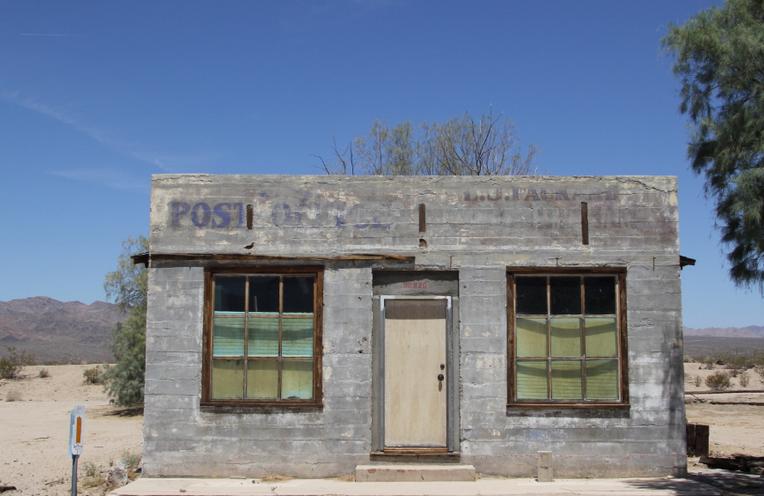
Kelso California
At one time, the population of Kelso, California, was nearly 2,000. In 1947, the nearby Vulcan Mine shut down, and the town’s residents slowly moved away. Today, the skeletons of a few buildings remain, along with a wonderfully restored train depot. The Spanish-style depot is a museum and visitor center for the Mojave National Preserve.

Death Valley Junction
Death Valley Junction was once a bustling stop along the Tonopah and Tidewater Railroad. Today, Death Valley Junction is not much more than a ghost town. The gas station is permanently closed. The Amargosa Death Valley Cafe is usually open on weekends, and a couple of times a year, you can watch a ballet at the Amargosa Opera House.

Leadville Ghost Town
Leadfield is located at the head of the Titus Canyon near Death Valley. Leadfield was only an active mining town for about two years. There was never any lead mined here. It was a boondoggle thought up by C.C. Julian to sell mine claims to unsuspecting investors.

Locke California
Locke came to be in 1915. It is a town built by the Chinese for the Chinese population of workers after many were displaced due to a fire in nearby Walnut Grove. This tiny little town is on the National Registry of Historic Places because it is the only town in the United States built by Chinese for Chinese. At the same time, not a ghost town, Locke is well worth a visit for history buffs.
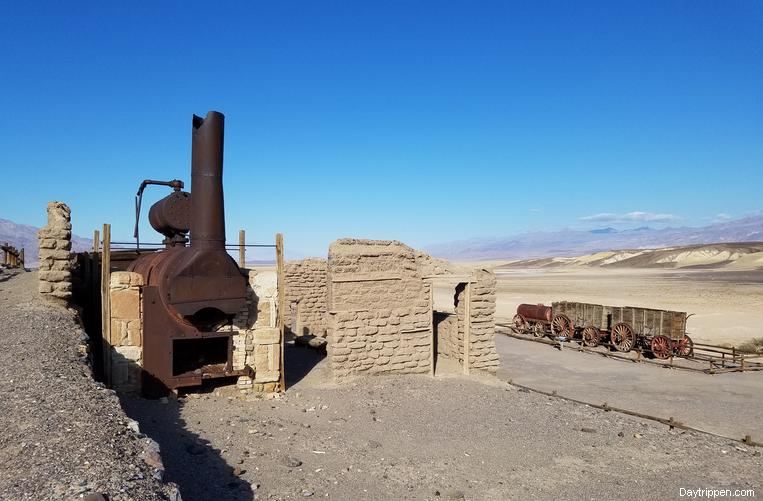
Harmony Borax Works
Harmony was an active mining camp between 1882 and 1888. About 40 workers, primarily Chinese laborers, were used to process borax at the facility—several adobe buildings And the mill, including a dining hall and company store. Harmony Borax Works is one mile north of Furnace Creek Death Valley Visitors Center. A paved road can easily reach the ruins of Harmony Borax Works.
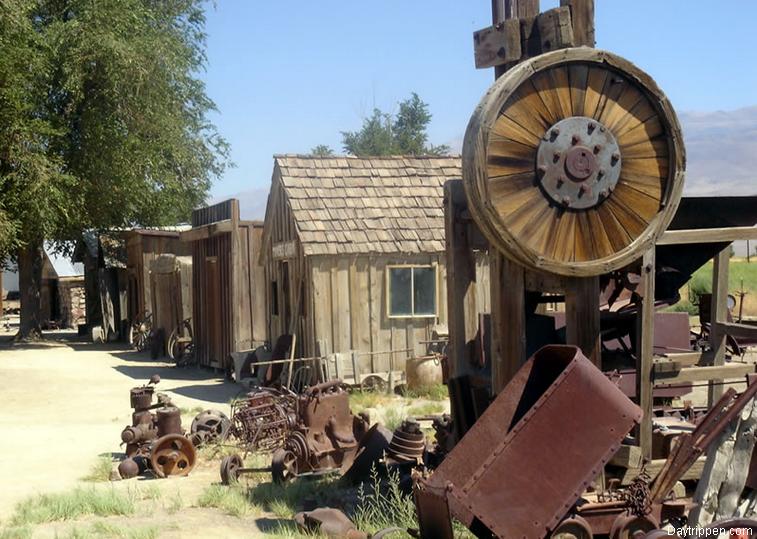
Laws Owens Valley
Laws museum and historical site preserve the Owens Valley railroad town of Laws. See the original train depot of the Carson and Colorado Railroad, plus many historic buildings from the unique city. Railroad artifacts and mining equipment around the Owens Valley are displayed on the museum’s grounds.
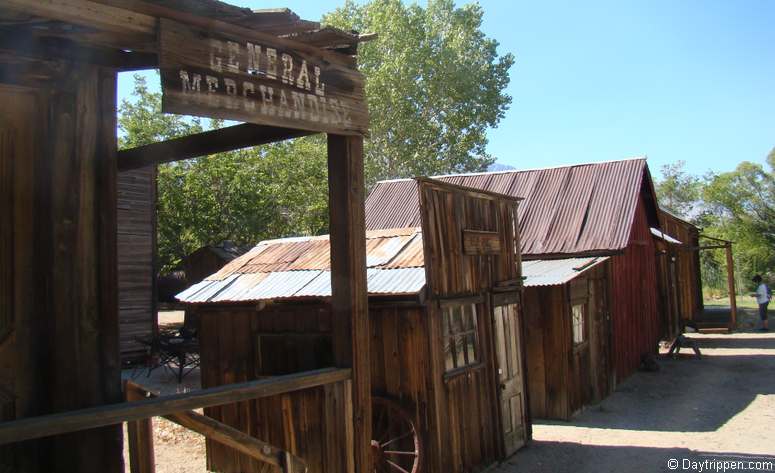
Little Pine Village
Tiny Pine Village is on the grounds of the Eastern California Museum of Independence, CA. While not an authentic ghost town, the village is made from buildings salvaged from mining camps in and around Owens Valley. The museum houses a massive collection of artifacts about the history of the Owens Valley. The Eastern California Museum is worth stopping while traveling along Highway 395.
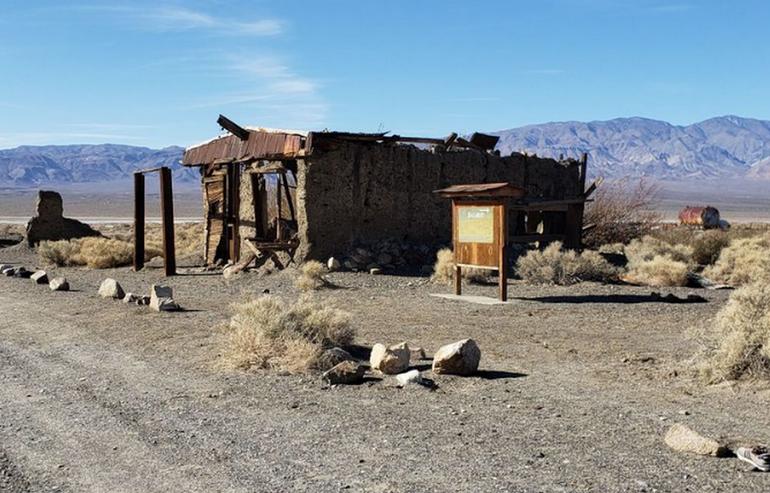
Ballarat Ghost Town
Ballarat lasted only a few years, just long enough for the nearby mines to play out of minerals. Between 1897 and 1905, several hundred individuals resided in Ballarat. The town had multiple saloons, numerous hotels, a Wells Fargo station, and a post office. Once the ore was exhausted, only a few miners and prospectors remained before ultimately abandoning Ballarat. Today, visitors to Ballarat can stop by the Ballarat Trading Post, which may or may not be open, and view the remnants of the town. Ballarat can be accessed from California 178, north of Trona; there is a historical marker at the Ballarat Road turnoff.

Harmony California Central Coast
The little town of Harmony was founded in 1869. The Harmony Valley Dairy produced butter, cheese, and buttermilk, popular with Highway One tourists. William Randolph Hearst was said to stop sometimes on his way to Hearst Castle. In the mid-1950s, the dairy relocated to San Luis Obispo. The town was abandoned until the 1970s when it became popular with hippies. Today, a few hardy soles call Harmony home and rely on passing tourists to make a living.

Limekiln State Park
Rockland Lime and Lumber Company operated a small operation along the Big Sur Coast for three years in the late 1800s. Limestone was extracted from the canyon and processed into line using four large kilns. The nearby redwood forest provided the fuel to run the furnaces. The remains of furnaces and foundations of a few buildings are on an easy hike from the Limekiln State Park’s campground.
Nevada Ghost Towns

Nevada has some impressive ghost towns. Most were temporary mining camps; however, a few still survive today as tourist attractions. Our list of Silver State Ghost Towns will continue to grow as we travel around Nevada.
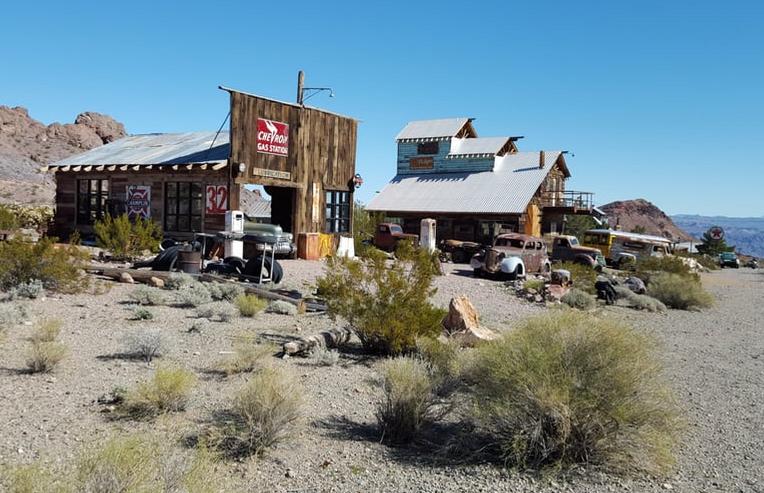
Nelson Ghost Town
Nelson Ghost Town is a gold mine turned tourist attraction about 40 miles south of Las Vegas. Techatticup Gold Mine was the most productive mine in Eldorado Canyon and operated from 1861 to 1942. Today, gold mine tours are offered to the general public. This historic property has been the location of numerous music videos and movies.
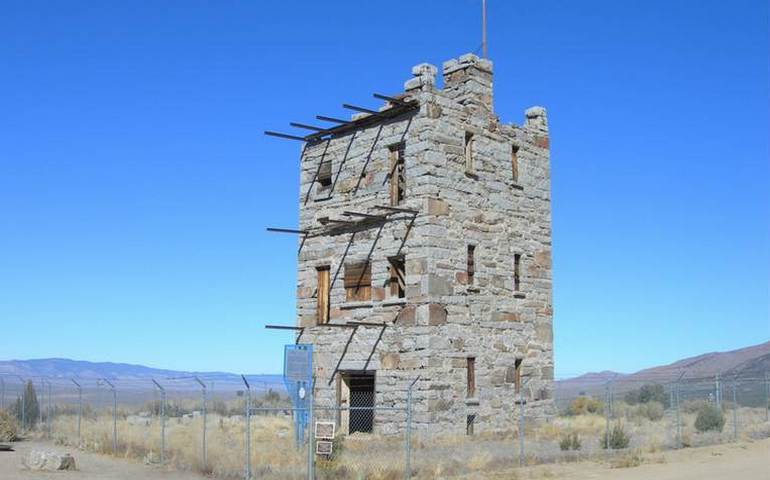
Stokes Castle Austin, Nevada
Stokes Castle sits above the mining town of Austin, Nevada. Mining baron Anson Phelps Stokes briefly used this unusual stone tower as a summer vacation home. While not a ghost town, Austin, Nevada, has some remarkable old buildings, including the International Hotel, the oldest in Nevada.
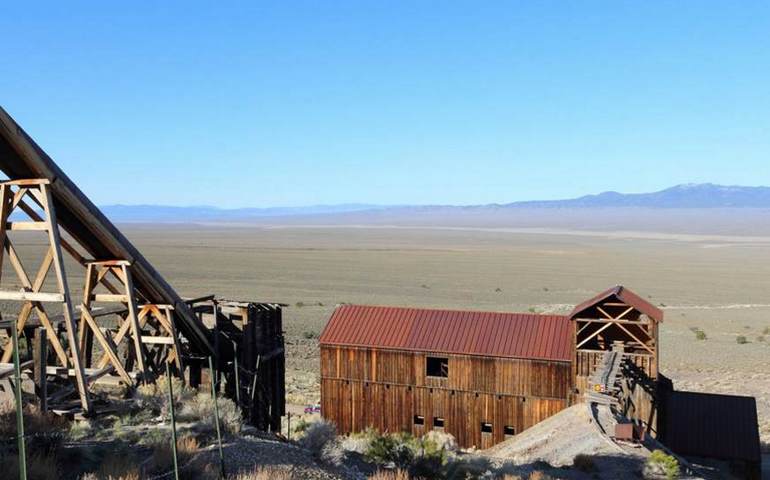
Berlin Ghost Town, Nevada
Berlin is one of the best-preserved Ghost Towns in Nevada due to its remote location and year-round park ranges. This silver mining boomtown boasted over 250 residents in its heyday. Many of the buildings still have the original artifacts. A self-guided walking trail with numerous signs tells the story of the Ghost Town of Berlin, Nevada.
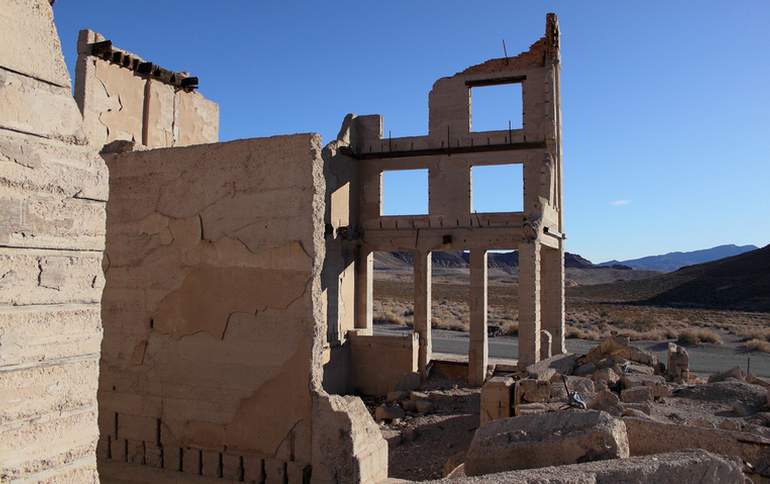
Rhyolite Ghost Town, Nevada
Rhyolite was once a mining town of 10,000 people with over 50 saloons and 18 grocery stores. Today, all that is left is a few buildings. 1907, the city boasted concrete sidewalks, electric lights, water mains, telephone and telegraph lines, daily newspapers, and a monthly magazine. Rhyolite Ghost Town is 4 miles west of Beatty, Nevada, on HWY 374.
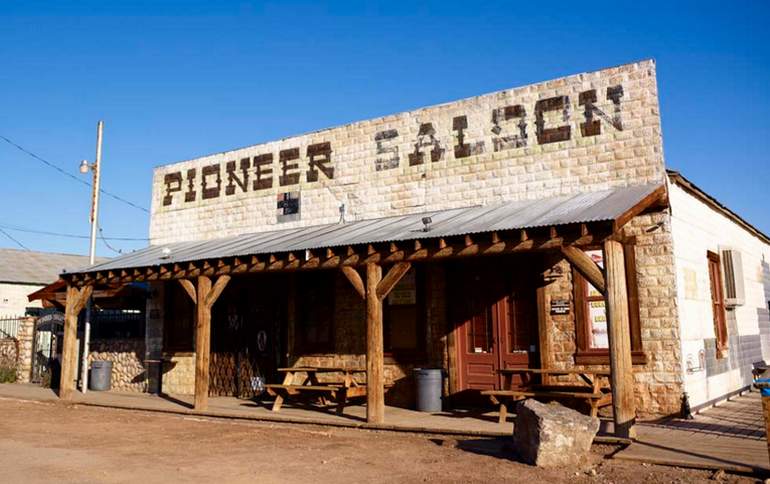
Goodsprings Nevada
Goodsprings Nevada Ghost Town. At its height, the population was over 800 people, with stores, seven saloons, a post office, a school, and a grand hotel. There are still a few residents today, with the main attraction in town being the Pioneer Saloon. Goodsprings is 30 minutes from Las Vegas. I-15 to Jean, then west 7 miles on SR 161 to Goodsprings.
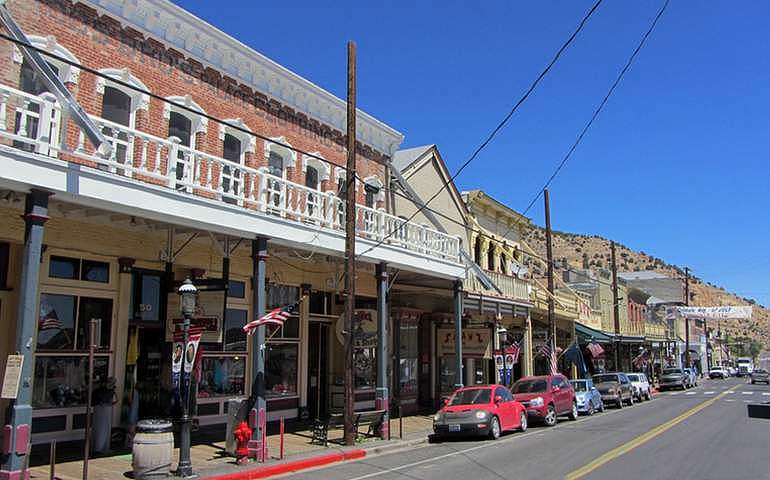
Virginia City Nevada
Virginia City, Nevada, is not a ghost town these days, although it has come close several times in the past. Visitors can walk along authentic board sidewalks and view historic churches, 19th-century homes, and cemeteries. Old West saloons of years past offer a bridge to another era while the museums, shops, and restaurants expand the experience. Virginia City is 23 Miles From Reno – 15 Miles from Carson City – 40 Miles from Lake Tahoe

Gold Point Ghost Town, Nevada
Gold Point, Nevada, has gone from a bustling mining town to just a few residents. Ranchers and miners first settled the city during the 1880s, but it wasn’t until miner J.W. Dunfee discovered gold in the 1920s that the town would thrive and be aptly renamed Gold Point. If you love visiting a deserted location free from the constraints of the urban sprawl, then the old ghost town of Gold Point, Nevada, is the spot for you.

Belmont Ghost Town, Nevada
This high desert town had two saloons, restaurants, a post office, a bank, a school, and enough residents to support two newspapers. At the height of the silver mining boom, Belmont had over 10,000 town folk. Like many other towns, the city emptied when the mine played out. From 1876 to 1905, Belmont was the county seat of Nye County, Nevada, with a beautiful two-story brick courthouse that still stands today. Belmont Ghost Town is 46 miles from Tonopah, Nevada.
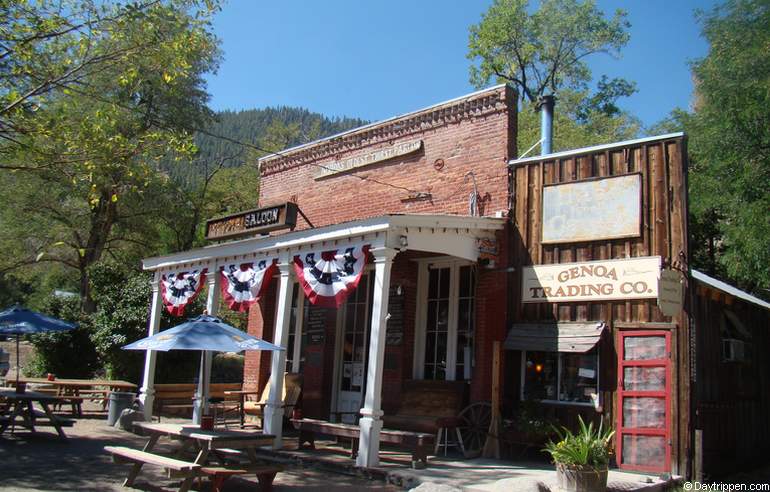
Genoa Nevada
Genoa was founded in 1850 as the first settlement of the Nevada Territory. Mormon pioneers first settled in the area, and the region acted as a trading post called Mormon Station for travelers on the California Trail. Genoa is home to the oldest continually operated saloon in Nevada. The Genoa Bar was patronized by Teddy Roosevelt and Johnny Cash and was used in John Wayne and Clint Eastwood movies. Mormon Station has a small log cabin museum that houses artifacts from Nevada’s early days.
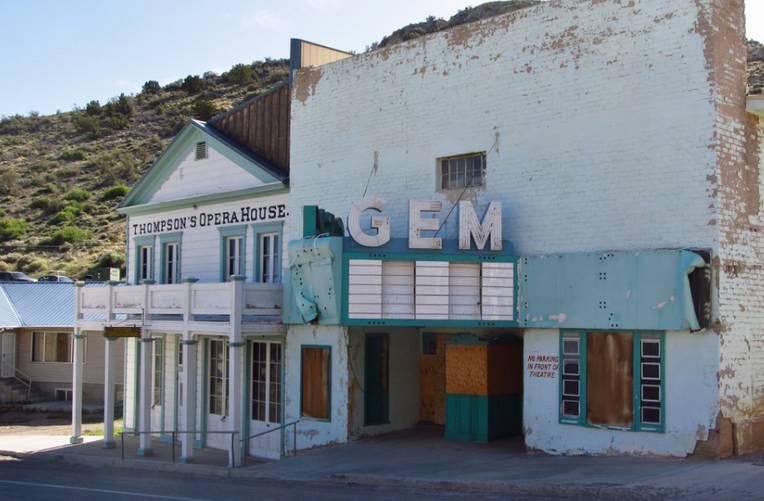
Pioche Nevada
At one time, Pioche was the largest mining town in southeastern Nevada, with nearly 10,000. Today, the city has fewer folks, but there are some impressive old buildings to check out if you decide to stay the night, including the remains of a tramway used to haul Silver Ore.
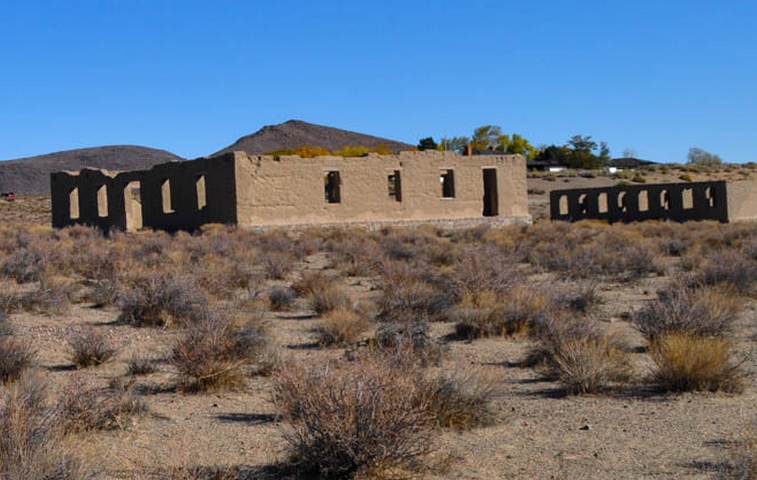
Fort Churchill Nevada Historic Park
The ruins of old Fort Churchill sit along the banks of the Carson River near the town of Silver Springs, Nevada. Fort Churchill’s buildings were made of adobe and worn down by the wind, rain, and snow. Fort Churchill has an excellent visitor center that displays artifacts from the fort.
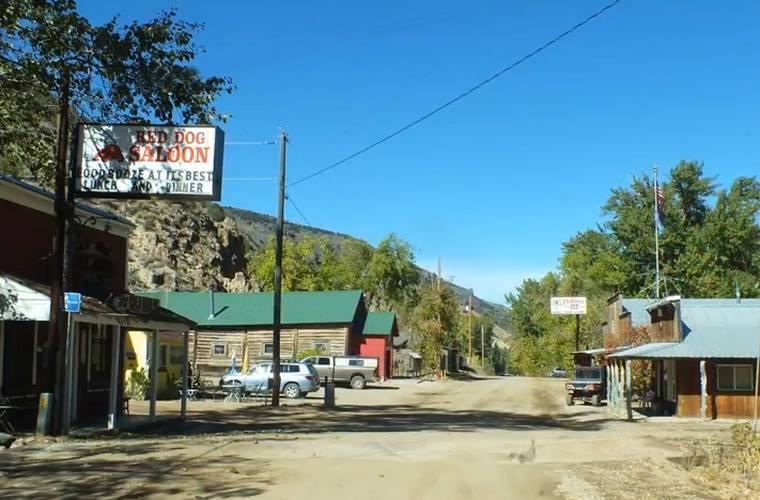
Jarbidge Nevada
Gold was discovered near Jarbidge in 1909 by David Bourne. By the 1920s, Jarbidge was the leading gold-producing area in Nevada. Mining operations ended in 1932, and most town folks moved away. Jarbidge never became a complete ghost town. A few hardy people remained in this remote town. You have to want to visit Jarbidge to travel there. The easiest route is a 92-mile trip from Twin Falls, Idaho. The last 18 miles are on a graded dirt road. From Elko, Nevada, the journey is 104 miles, 64 miles on dirt roads.
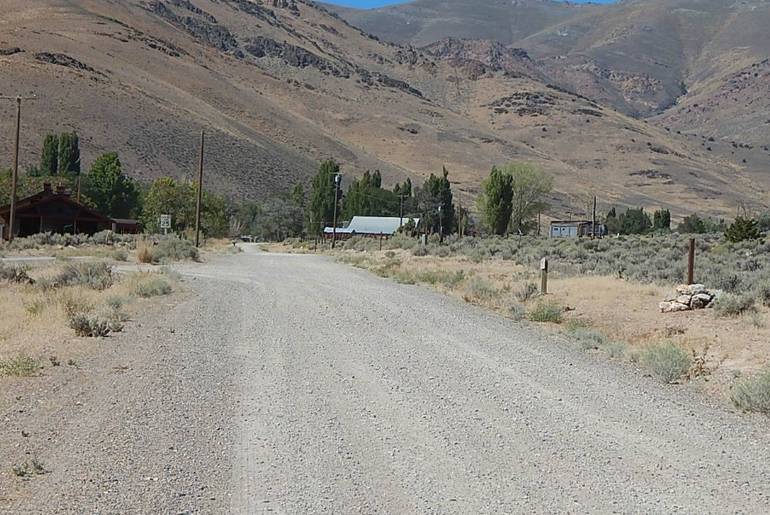
Unionville Pershing County, Nevada
Unionville is not a complete ghost town. There are a few hardy folks that still live in the area. During its peak mining days between 1863 and 1870, over 1500 people called Unionville home. Mark Twain even spent some time in Unionville, intending to prospect for silver. Like most boom towns, folks moved on when the ore played out, what little there was. A few of the original buildings remain, including a one-room schoolhouse.
Several ranch houses and a bed and breakfast inn are along Unionville Road today. There are several old mines in the upper and side canyons. Unionville is 24 miles south of I-80 along State Route 400 and Unionville Road. One hundred fifty miles east of Reno, Nevada.
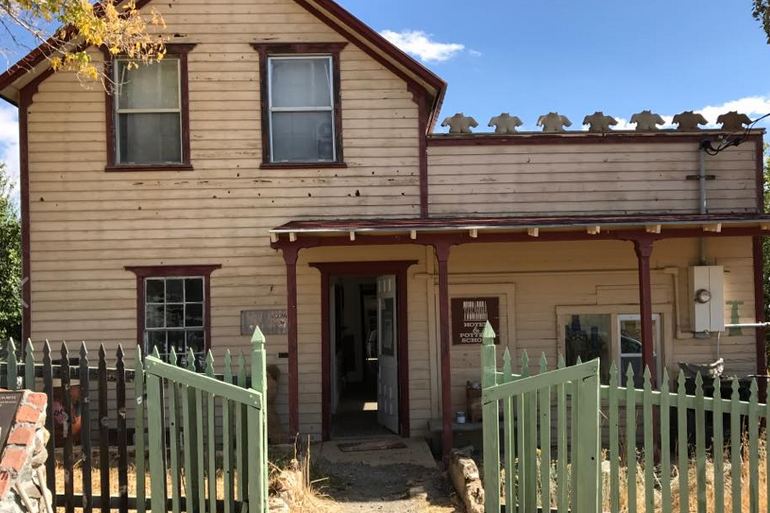
Tuscarora Nevada
Established by brothers Steve and John Beard, Tuscarora is a living ghost town that now operates as a ranching community and is home to several world-renowned artists in the area. The Tuscarora Pottery School offers two-week summer workshops in town with a room at the “Hotel.” Tuscarora is located in Elko County, Nevada.
Arizona Ghost Towns
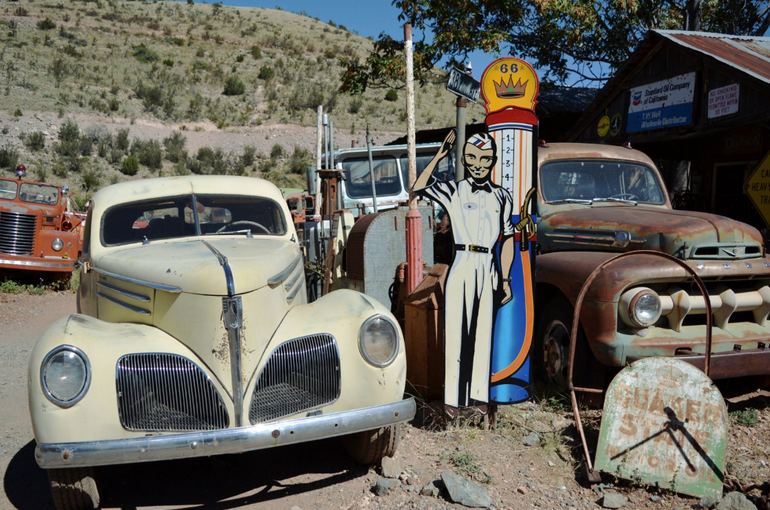
Jerome Ghost Town, Arizona
Jerome Ghost Town was once known as one of the wickedest towns in America. Today, the town is a hub for the arts, music, and culture reminiscent of its incredible history.
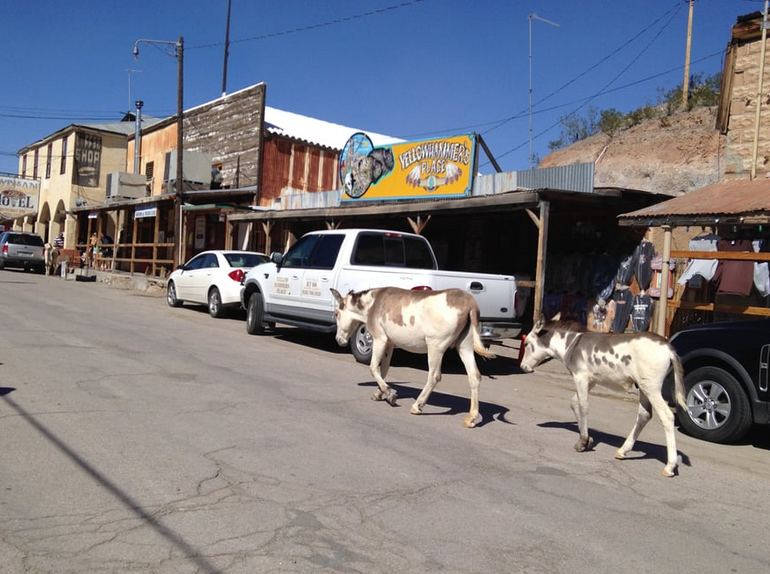
Oatman Ghost Town, Arizona
You can be sure to enjoy wild west fun, replete with wild donkeys, wooden sidewalks, staged gunfights, unique souvenir shops, and quirky annual events when you visit Oatman. An easy drive from Laughlin, Nevada, or Bullhead City, Arizona, Oatman Ghost Town is fun to spend the day.
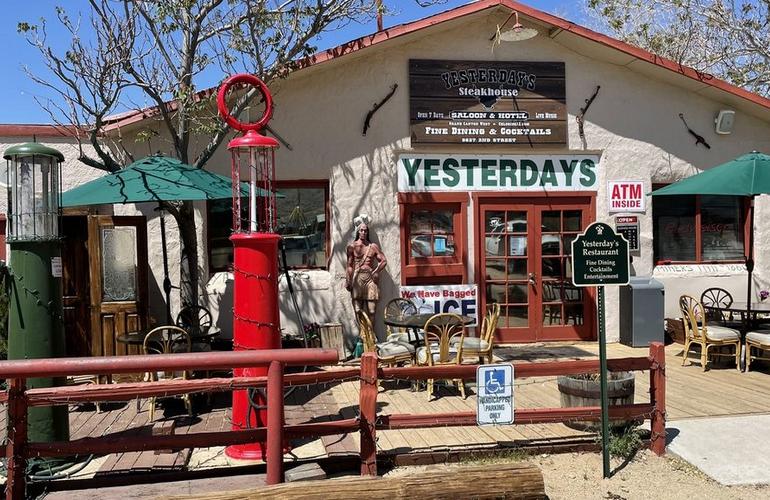
Chloride Arizona
While the town is not an abandoned ghost town, it’s like stepping back in time. Chloride features historic buildings, a recreated Western street, junk sculptures, and beautiful rock murals.
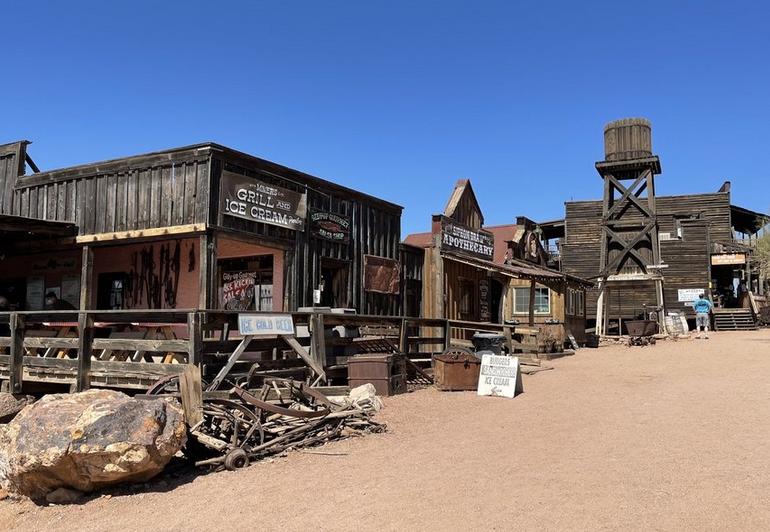
Goldfield Arizona
Goldfield is a resurrected Ghost Town. After being abandoned for many years, the town was destroyed by fire in the 1940s. Today, many of Goldfield’s buildings and Arizona’s only working narrow-gauge railroad are reconstructed. This popular tourist attraction is only a one-hour drive from Phoenix.
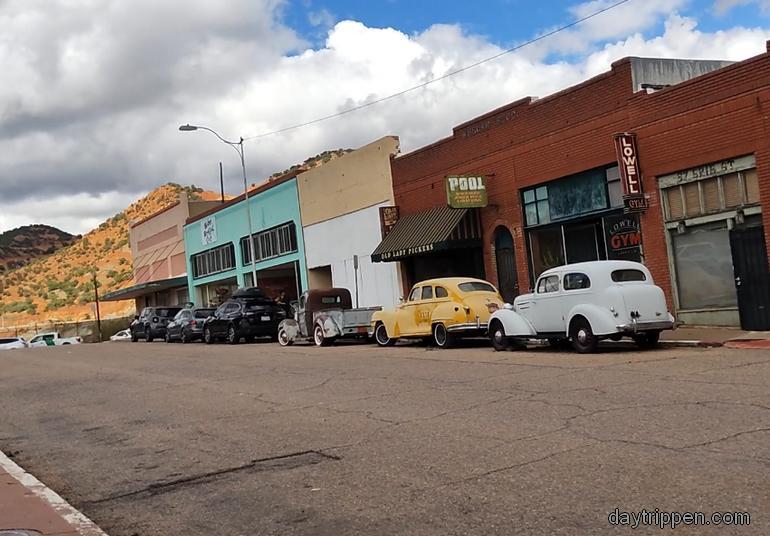
Lowell Arizona
If you ever find yourself in Bisbee, Arizona, visit Lowell, Arizona. It’s a must-see destination for history enthusiasts. Erie Street is the only remaining part of Lowell, a mining town in Arizona that dates back to the late 1800s. However, the only remaining buildings are a quarter-mile section from the 1950s.
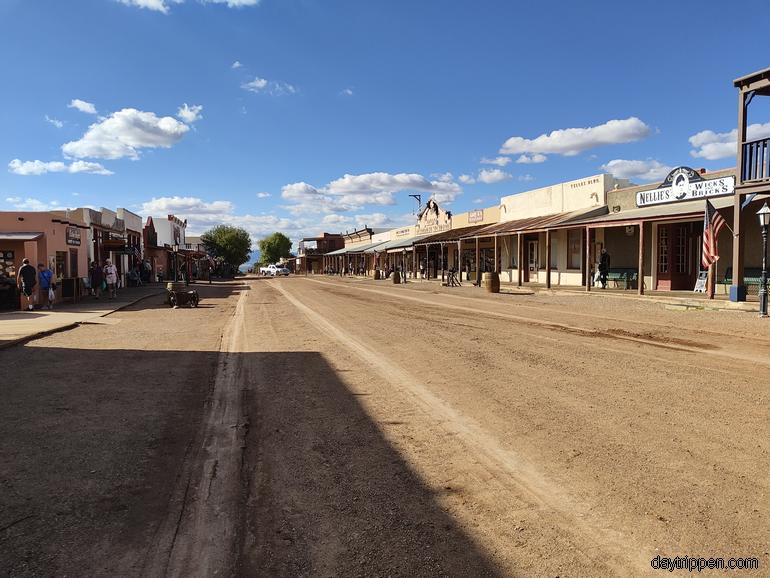
Tombstone Arizona
Tombstone, Arizona, is about an hour and a half drive from Tucson. It is a historic city that was founded in 1879 in Cochise County. Tombstone was once the hub of the largest silver mining district in Arizona. Nowadays, Tombstone is renowned as a tourist destination, providing visitors with a taste of the ‘Wild, Wild West’ experience.
California Roadside Attractions
Nevada city california.
Visitors guide to ghost towns in ca
go to this page Ghost town guide
Fun Things To Do
- Free Things to Do In Southern California: Low Cost Fun
- Southern California Bucket List
- California Natural Hot Springs
- California & Nevada Ghost Towns
- Unusual Things to Do in Southern California
Browse By Topic
- Southern California Whale Watching
- Southern California Historic Places
- Senior Friendly Day Trip Ideas
- Southern California Museums
- Southern California Beach Destinations
Browse By Interest
- Western States Day Trips
- Best Hiking Trails Southern California
- Los Angeles Kids Birthday Party Places
- California Zoos & Aquariiums
- California North Coast Day Trips
- Wineries & Wine Tasting

IMAGES
VIDEO
COMMENTS
For $12, adults can purchase a package that allows them to tour the mine, visit the Mystery Shack, and pan for gold. Kids 5 - 11 are just $6. The railroad is a separate cost- $5.50 for adults and $3 for kids. Calico Bottle House by Snap Man.
Take a tour through California's most fascinating abandoned towns on this far-flung road trip through the Old West. As gold-mining fever gripped California in 1849, fortune seekers journeyed to the deserts and mountains with picks, shovels, and high hopes. Miners built entire towns in the state's most remote outposts.
If you only see one ghost town in California, Bodie is the one to visit. Bodie was a gold-mining town the started in 1876. At its peak, more than 10,000 gold-seekers lived there. The wild, wide-open mining town was so wicked that some people thought even God had forsaken it. Today, Bodie is a pilgrimage site for people who love ghost towns.
Why it's worth visiting: It's one of California's most famous ghost towns. Address: Highway 270, Bridgeport, CA 93517 How to get there: Turn east onto Bodie Road off Highway 395, seven miles south of Bridgeport, CA. Bodie State Historic Park is 13 miles down the road. Nearby accommodation: Lundy Canyon Campground (28 mi), Lake View Lodge (32 mi) Bodie State Historic Park may be one of ...
Explore California's boom-and-bust heritage as you visit deserted settlements, rusting railways, and abandoned mines. ... Things To Do. Trip Inspiration. Road Trips. ... Calico Ghost Town. 3 - 6 Days,9 Stops,770 Miles. Buyenlarge/Getty Images. David B. Townsend/Getty Images.
In addition, these towns are located all throughout the state and you can easily add one or two to many different California road trip itineraries. The old hotel (and probably brothel) in Bodie. 1. Bodie Ghost Town. Bodie is easily one of the best ghost towns in California.
5hr 45min from L.A. Goldfield was once the richest and most-populated gold-mining town in Nevada; founded in 1902, it grew to a population of 30,000 by 1906 and produced $11 million in gold. Tex ...
Bodie, CA. Distance from SF: 250 miles; five hours by car. One of the original mining towns, by 1880, Bodie was California's third-most populous city, with 10,000 residents. There were plenty of ...
10791 E Empire St, Grass Valley. Get a one-two punch of experiences with a visit to Grass Valley 's remarkable Empire Mine State Historic Park. At the visitor center, learn about one of California's oldest, largest, deepest, longest, and richest gold mines. In the course of a century, 5.6 million ounces/159 million grams of gold were mined.
Location: Highway 270, Bridgeport, CA 93517 Directions: From Highway 395, turn east onto Bodie Road (about seven miles south of Bridgeport). The historic park is 13 miles ahead. Where to Stay: Bridgeport Inn, Lake View Lodge Why Visit? Fame & History: As one of California's most renowned ghost towns, Bodie stands testament to the state's vibrant mining past.
13. Ghost Towns Road Trip. Journey through the remains of California's old Wild West on this epic ghost town road trip. You'll get to explore abandoned sites, deserted mines and forgotten villages from a bygone era. It's sure to be an epic journey into the past!
Road trips you can take to California ghost towns and abandoned places. By Greg Keraghosian, SFGATE Aug 16, 2018. ... For ghost towns along a ghost highway, this is the trip for you. Route 66 in ...
By Mike Richard November 30, 2016. Highway 395 is arguably California's best road trip. From ghost towns to national parks to fossil beds to breweries, travelers will find just about everything ...
About. Visitors from around the world come to Calico each year to experience a real ghost town originally settled in the 1880s.A hive of activity for the adventurous at heart - the park hosts the Mystery Shack- a crooked house where water runs uphill, two museums, narrow-gauge train rides and gold panning.Calico was founded during California ...
About Bodie State Historic Park. Bodie State Historic Park is a genuine California gold-mining ghost town. Visitors can walk down the deserted streets of a town that once had around 2,000 structures and a population of roughly 8,000 people. The town is named for W.S. Body (or Bodey), who had discovered small amounts of gold in hills north of ...
9 Creepiest Ghost Towns In California Worth a Road Trip. Alright, now that you know everything there is to know about ghost towns lets talk about which ones are the best. We found the abandoned cities in California with the most fascinating history, the highest levels of haunted activity, and the best natural settings for exploration.
Panamint City. The Panamint City ghost town is located near (ish) Ballarat, but within the confines of the Death Valley National Park borders. This area is remote, even by intrepid 1800's standards. And the area was a magnet for bandits. The town started booming when silver and copper were found there in 1872.
The ghost town of Bodie, California is one of those places. It's literally in the middle of nowhere 106 miles south of Lake Tahoe and east of Yosemite National Park. The former 1800s gold mining town is now a California State Park. It was preserved in a state of "arrested decay," which means the foundations, windows and roofs were ...
From Sacramento: Take CA-99 S to US-50E and then to CA-89 S before getting onto US-395 and then CA-270 E to Bodie. From Yosemite National Park: Take US-120 E to Lee Vining and turn north on US-395 before turning east onto CA-270 E to Bodie. From Death Valley: Take CA-190 W to CA-136 N towards Lone Pine.
Tucked away in the east central portion of California, within the Bodie State Historic Park, northeast of Yosemite, the ghost town of Bodie is one of the most authentic abandoned gold-mining towns of the Old West. Located near the Nevada border, the bustling town that once had a population of nearly 10,000 people (from 1877 to 1882) and ...
But here's the best part: California has all the iconic destinations you've dreamed of visiting, plus a countless number of incredible off-the-beaten-track experiences. With our exclusive trip itineraries, you can visit bucket-list landmarks like Yosemite, then follow a wine road or visit a craft brewery. Top theme parks, secret beaches, city ...
Day two: Tahoe to Mammoth Lakes. Two hours south of Tahoe, on a side, not fully paved road off the 395, you'll find Bodie, a mining ghost town with (allegedly) real ghosts. Take a self-guided tour with the map from the small museum, peering into homes eerily still filled with their last owner's belongings. Or go on a guided tour to gain ...
Calico Ghost Town is located on 36600 Ghost Town Road in Yermo, just east of Barstow, on California Interstate 15. The driving distance between Los Angeles and Calico is 127 miles (1 hour and 50 minutes).
Bodie Ghost Town is an excellent example of an abandoned, old-west mining town in California. Bodie is the official California Gold Rush ghost town. Bodie is located seven miles south of Bridgeport via Bodie Road (the last three miles are unpaved.) The California Department of Parks and Recreation cares for this unique ghost town.